Bold black and white Ardoz cement tiles make a powerful design statement
This office kitchen, by and for Casey Roy Design in San Antonio Texas, illustrates the impact of a bold backsplash. Granada Tile company’s Ardoz cement tiles in black and white help take traditional cabinetry boldly into the present.
BlossomPortland Brings a Small Patio to Life with Toscano Cement Tiles - Close-up
Here is the close-up of BlossomPortland's small patio featuring a "carpet" of Granada Tile's Toscano design cement tile.<br>
Black and white Badajoz cement tiles from Granada Tile company
In a dramatic black library in Portland, created by interior designer Jessica Helgerson, a large multi-paned window finds its counterpoint in a floor of Granada Tile company’s Badajoz cement tiles in black and white.
Encaustic Tile Venezia 901 Custom Design for Inspiring Historian’s Home Office
Granada Tile company’s Venezia 901 cement tile pattern was custom colored by the Ibrahim family. This decorative encaustic tile carpet takes center stage in their new office.
Does your favorite cafe have a wall and floor like this?
Designer Erin Adams' playful chic cement tile - Stockholm design by Granada Tile - plays a leading role in the striking Juniper Table Cafe at the Kimpton Rowan Hotel in Palm Springs.<br>
Cement Tile Restaurant Backdrop Wall in Sofia 55 A Design
Granada Tile company’s Sofia-55A cement tile design provides a vibrant backdrop for the tapas served at Black Bull restaurant in Chicago’s Wicker Park neighborhood. The bright colors of the decorative tile pattern play off the heavier shades of the furnishing ensuring a truly lively experience.
Playful Cement Tile for Man's Best Friend
Even canine companions love Granada Tile company. At the Dog Ranch Bed & Biscuit, Fariba Kashef, of Archarium, used Granada Tile company’s Castelo design for the company's office floor tiles. To see more about the Dog Ranch and our cement tile there, be sure to read about it at www.granadatile.com/blog/2012/07/03/breaking-news-the-dog-ranch-bed-biscuit/
A backsplash of Salamanca Cement Tile is the key to this kitchen’s simple appeal
<span style="font-size: 14px;">With only the addition of a small backsplash of Salamanca cement tiles over the store, this kitchen, designed by Michael Canty is transformed. The color scheme - white, grey, black and turquoise - really makes the area sing.</span>
Granada Tile Company’s Cluny cement tiles set off the bar at the center of Hotel Burnham in Chicago
The recently-renovated Hotel Burnham, a Kimpton Hotel, designed by BCDG Studio LLC, spotlights its bar, a popular meeting place, with Granada Tile Company’s Cluny cement tile.
Concrete Tile Backsplash in Cluny 888 C Design in Black and White in Brooklyn Home
Antoinette Tisa and Andrew Sonpon selected Granada Tile company’s Cluny 888 C concrete tile design for their backsplash, creating an emphatic statement in this polished space.
A Dramatic Designer Bathroom with Granada Tile's Toscano Pattern
J Kurtz Design created a truly stunning bathroom experience complete with Granada Tile's Toscano pattern on the floors in a custom colorway.
Elegant, Calm Reception in a Classic Italian Restaurant
Granada Tile's Moroccan-inspired cement tile creates a calm and elegant mood at the entrance to Barzotto, a popular Italian restaurant in the Mission District of San Francisco.<br>
Fez Geometric Cement Tile Design on Counter Front at Bar Area in Hollywood
Ariel Fox chose cement tiles from Granada Tile company for the pool area at Rubix, a luxury apartment building in Hollywood. Here, Fez geometric cement tile in black and white accents the front of the bar area near the barbecues.
Granada Tile Fez Design in Barzotto Italian Restaurant
The calm grey green of the walls works beautifully with the elegance of Granada Tile's cement tiles in the lively Italian restaurant, Barzotto.<br>
Rappahannock Oyster Bar does a playful dance with Granada Tile's modern cement tiles
Rappahannock Oyster Bar in downtown Los Angeles does a playful dance with Granada Tile's modern cement tiles, mixing geometric forms and vibrant colors that rise from floor to bar front.<br>
Bucharest cement tile brings vintage flair to a Los Angeles home
In order to maintain the historical integrity of this space, long-time Granada Tile company clients Karen and Guy Vidal chose Bucharest cement tile for the bathroom floor of this vintage home.
Handmade Cement Tile on Café Wall and Floor with Normandy 941 A Design in White and Grey
At Veronica Salazar's restaurant El Huarache Loco, authentic Mexican fare is served in a sleek setting featuring Granada Tile company's Normandy 941 A cement tile design. These elegant and strong concrete tiles grace walls and floors at the restaurant.
Alhambra Cement Tile Design for Bathroom Shower
Granada Tile company's Alhambra pattern in blue and white has a crisp, geometric elegance. Stand a few feet back and the effect is pure lace. Designer/builder Hope Alexander developed this colorway using Granada Tile company's Echo Collection customizable catalog.
Granada Tile company’s Firenze pattern cement tile unfurls across the floor of New York’s Red Door Spa
Anchoring the glamor of Elizabeth Arden’s famous Red Door Salon in Union Square in New York City, the floor is paved in Granada Tile company’s Firenze cement tiles, custom colored in black and white. The swirling pattern adds to the space’s feminine allure.
Slate and White Cluny Cement Tiles in a Stunning Bathroom
Ken Koonce chose our Cluny cement tile design in a crisp slate-and-white color combination for an expansive bathroom. Special thanks to designer/builder/photographer Ken Koonce for the use of the photograph.
Designer/Architect Taryn Bone's Tile in Her New Kitchen
What a delight to have a designer/architect create a tile and then use it in their own home! This tile, designed by Taryn Bone is called A Little Off - Corner and gives you that happy sense of anticipation and playfulness.<br>
A mix of black and white cement tiles from Granada Tile Company’s Echo Collection color the risers on a flight of stairs
With a nod to this home’s Spanish Revival roots, a mix of cement tile patterns brings visual interest and a note of whimsy to the risers on a flight of stairs. Chosen from Granada Tile Company’s Echo Collections, the tile patterns, including Bordeaux, Beaune, Astorga, Cluny, Fez, and Santa Fe, find harmony through their tightly controlled palette of black and white and grey.
Granada Tile Company Sofia cement tile covers the entryway of a Spanish-style home in Los Angeles
Steve Jones, owner of Better Shelter, chose Granada Tile Company’s Sofia cement tile for the entryway floor tile of his Los Angeles home. The house was photographed by Marcia Prentice for her book, “How We Live”.
Happy Backsplash in Traditional Kitchen by Design Vidal Collaborative
Design Vidal Collective used Granada Tile's Sofia patterned cement tiles for the backsplash of this happy kitchen.<br><p><br></p>
Richard Takata Chose Granada Tile's Estrella Designed Cement Tile for His Kitchen
<style>
<!--
/* Font Definitions */
@font-face
{font-family:"Cambria Math";
panose-1:2 4 5 3 5 4 6 3 2 4;
mso-font-charset:0;
mso-generic-font-family:roman;
mso-font-pitch:variable;
mso-font-signature:3 0 0 0 1 0;}
@font-face
{font-family:Calibri;
panose-1:2 15 5 2 2 2 4 3 2 4;
mso-font-charset:0;
mso-generic-font-family:swiss;
mso-font-pitch:variable;
mso-font-signature:-536859905 -1073732485 9 0 511 0;}
/* Style Definitions */
p.MsoNormal, li.MsoNormal, div.MsoNormal
{mso-style-unhide:no;
mso-style-qformat:yes;
mso-style-parent:"";
margin:0cm;
margin-bottom:.0001pt;
mso-pagination:widow-orphan;
font-size:12.0pt;
font-family:"Calibri",sans-serif;
mso-ascii-font-family:Calibri;
mso-ascii-theme-font:minor-latin;
mso-fareast-font-family:Calibri;
mso-fareast-theme-font:minor-latin;
mso-hansi-font-family:Calibri;
mso-hansi-theme-font:minor-latin;
mso-bidi-font-family:"Times New Roman";
mso-bidi-theme-font:minor-bidi;}
.MsoChpDefault
{mso-style-type:export-only;
mso-default-props:yes;
font-family:"Calibri",sans-serif;
mso-ascii-font-family:Calibri;
mso-ascii-theme-font:minor-latin;
mso-fareast-font-family:Calibri;
mso-fareast-theme-font:minor-latin;
mso-hansi-font-family:Calibri;
mso-hansi-theme-font:minor-latin;
mso-bidi-font-family:"Times New Roman";
mso-bidi-theme-font:minor-bidi;}size:612.0pt 792.0pt;
margin:72.0pt 72.0pt 72.0pt 72.0pt;
mso-header-margin:35.4pt;
mso-footer-margin:35.4pt;
mso-paper-source:0;}
div.WordSection1
{page:WordSection1;}</style>
<p class="MsoNormal">Richard Takata chose Granada Tile's Estrella designed cement
tile for his kitchen, and from the looks of it, his cat approves.</p>
Wide Open Kitchen with Maldon Cement Tiles
Renovated historic building in Panama with a wide open kitchen area with Granada Tile's Maldon cement tile pattern.<br>
Hatchworks Used a Custom Tile for this Family-Friendly Kitchen
Hatchworks Austin-based design and construction firm adapted Granada Tile's Castelo 1026A for this unique kitchen backsplash.<br>
Colorful Kitchen Lovingly Curated with Custom Colored Tiles
Author Joanna Barch crafted a beautiful, colorful kitchen complete with custom colored cement tiles from Granada Tile.<br>
A Beautiful Color Coordinated Kitchen
Author Joanna Barch created the perfectly color coordinated kitchen using custom colored Granada cement tiles.<br>
Striking Santander Backsplash in Desert Kitchen
Hundred Mile House renovated the Chino Canyon House in Palm Springs utilizing Granada Tile's Santander cement tile in black and white. <br>
Chino Canyon House Designed by Hundred Mile House
In the Chino Canyon House, Designer Duane Smith of Hundred Mile House plays with Granada Tile's Santander tile on the backsplash. <br>
Designer Kim Gordon Creates a Splashy Kitchen with Granada Tile's Chantilly Tile
Designer Kim Gordon creates a sensational kitchen with Granada Tile's Chantilly's tile.<br>
Stacey Sell and Steve Price Created This Stunning Kitchen with Granada Tile's Badajoz Tile
This new kitchen is stunning with Granada Tile's Badajoz-patterned cement tiles designed by Stacey Sell and Steve Price.<br>
Chic New York City Kitchen with Normandy-Patterned Cement Tiles
Complete with Granada Tile's Normandy cement tiles, Interior Designer Fawn Galli created this chic kitchen for a fashionista in New York City.<br>
Elegant Normandy Cement Tile Plays Starring Role in This Kitchen by Fawn Galli Interior Design
In this chic kitchen by Fawn Galli Interior Design, the Normandy cement tiles by Granada Tile play a lead part.<br>
Designer Chris Barrett's Magic Touch Transforms Hacienda Kitchen
Designer Chris Barrett transforms this hacienda kitchen by adding a bold graphic swath of Granada Tile's Serengeti pattern cement tile. <br>
How to Create a Cozy Nook in Your Living Room
Take a page from Pineapples and Coffee Cups play book: tile a living room wall with Granada Tile's Badajoz cement tile, hang a chair, pile on soft and cozy blankets and pillows, and jump in! <br>
Playful and Elegant Madesimo Tiles Make for a Beautiful Kitchen Designed by ModOp Design with Better Shelter
<p>Take a tip from the pros: covering the face of your island with eye-catching handmade cement tiles is guaranteed to garner a second look. So here is ModOp Design's brilliant use of Granada Tile's Madesimo cement tile pattern.</p><br>
Granada Tile's Serengeti Tiles Take Center Stage in This Expansive Kitchen
Featured in Dwell Magazine, this light and airy kitchen has a floor covered in glorious Serengeti cement tile by Granada Tile.<br>
Granada Tile's Fez Pattern Appears on Both the Kitchen Bar Face and the Backsplash
This remarkable kitchen designed by Studio Marchetti speaks of clean modernity with a soul, reflected in the dual use of Granada Tile's hand-poured cement tiles.<br>
Sunny, Sensational Bathroom Flashback with Byzantium Cement Tiles
Le Shag Residence in California sports a sunny, sensational bathroom which may give you flashbacks. The floor and wall installation of Designer Emma Gardner's Byzantium tile takes your breath away.<br>
Rich Gorgeous Turquoise Hexagon Tiles in Splendid Bathroom
Chris Barrett created a delicious oasis in this bathroom using Granada Tile's solid turquoise hexagon cement tiles. Just follow the tiles into the inner sanctum...<br>
Shades of Rich Greens Blend Organically in this Period Bathroom
Designer Laurel Broughton of WELCOME PROJECTS renovated a 1920's Echo Park duplex into a single family home and studio. She used 4" x 4" cement tiles in Pine and Sage from Granada Tile to create and organic, rich green bathroom.<br>
Tropical Bathroom Brings Joy and Health
Designed by Adrianna Lopez, this spectacular tropical bathroom had garnered admirers and followers all over the world. The star ingredient is Granada Tile's Fez patterned cement tile.<br>
Patio for the Stars: It's Simple but So Elegant
When designer extraordinaire Nate Berkus contacted for patio tile, we will thrilled. He chose simple simple--but perfect--square tiles from our Echo Collection in coffee and white. The resulting patio sings. Here is a photo from Architectural Digest.<br>
Super Simple, Super Elegant Black and White-Tiled Patio
If you want classic and elegant, you have come to the right place. Billie James Design delivers on both counts with a floor of Granada Tile's Borga cement tiles.<br>
BlossomPortland Custom Colored Corsica-Design Tile by Granada Tile Is Always in Bloom
BlossomPortland commissioned Granada Tile to make Corsica-designed cement tiles in warm and vibrant colors for this beautiful Portland backyard. Check out the close-up photo of these same tiles in this section.<br>
Beautiful Seating Area Nestled in Grand Garden
Arcadia Studio in Santa Barbara, California designed this tasteful and welcoming seating area with fire pit using Granada Tile's geometric Burgos design.<br>
Designer Martyn Lawrence Bullard Goes All Out with His Gorgeous Patio
As we all know, Designer Martyn Lawrence Bullard is a phenomenon of exuberant, Moroccan-inspired good taste. Granada Tile has had the honor to be selected for a number of his projects, including this one. Our geometric, Fez design is one of his favorites.<br>
Designer Martyn Lawrence Bullard Goes All Out with His Gorgeous Patio - Part 2
Designer Martyn Lawrence Bullard is a genius at all things exuberant and joyful and this other part of his backyard is no exception.<br>
BlossomPortland Brings a Small Patio to Life with Toscano Cement Tiles
BlossomPortland Landscape Design brings a small patio to life with Toscano cement tiles on a background of grey cement tiles, both by Granada Tile. Be sure to check out the close up image.<br>
Designer Emily Henderson Creates Glorious Patio with Granada Tile's Buniel Cement Tile
Designer Emily Henderson creates a glorious patio with Granada Tile's Buniel Cement Tile in midnight and hawk.
Granada Tile Company’s Serengeti cement tiles in black and cream cover the floor at New York’s The Smith
At New York’s The Smith in the East Village, Granada Tile Company’s Serengeti cement tiles offset white subway tiles, industrial lights and wooden tables, adding up to a lively bistro atmosphere that references the city’s historic roots.
Cement Tile Patchwork Design in Blues for Go Greek Yogurt Shop in Beverly Hills
Patchwork tile installations have to be one of our favorite cement tile installations, and we love the one at Go Greek in Beverly Hills, designed by ModMan. In a range of blues, the concrete tile installation by Granada Tile company is a treat for the eye—just as the yogurt is for the taste buds.
Justina Blakeney of Jungalow designs a custom Egret hexagon tile for a new Casita
In collaboration with Granada Tile, Justina Blakeney of Jungalow fame has designed a custom Egret hexagonal cement tile. Paired with Granada Tile's midnight hexagon, the effect is stunning.<br>
Cement Tiles in Black and Chocolate Handmade by Granada Tile company for the Spa at Mandarin Oriental Hotel
Ever so subtle black and chocolate cement tiles. Based on a custom design by Tihany Design, these tiles were made by Granada Tile company for the Spa at the Mandarin Oriental Hotel in Las Vegas.
Warm and Cozy Tile at the Steak & Whisky
Granada Tile's custom-colored Toscano tile puts you in the mood for Steak & Whisky at this Hermosa Beach favorite haunt.<br>
Black, white, silver and grey hexagon-shaped cement tiles from Granada Tile company cover the floor of Otium Restaurant
At Otium Restaurant, the restaurant adjacent to The Broad Museum in downtown Los Angeles, Tamara Kaye-Honey of House of Honey designed a floor that mixes Granada Tile company’s black, white, silver and grey hexagon-shaped cement tiles with wood, echoing the diversity and complexity of the city outside its doors.
A slate and white Cluny cement tile floor add a luxurious note to an elegant Los Feliz bathroom
Located in the tony Los Feliz neighborhood of Los Angeles, this elegant bathroom designed by Deirdre Doherty Interior Design and featuring Granada Tile Company's Cluny cement tile appeared as House Beautiful’s Bathroom of the Month.
The pizza oven at Moby’s in East Hampton showcases Granada Tile Company’s Fez cement tile
At Moby’s, a popular pizza restaurant in New York’s East Hampton, the pizza oven sports a frame of Granada Tile Company’s Fez cement tiles in black and white.
A small balcony is brightened by Granada Tile company’s Fez cement tile
Featured in Real Simple magazine, a small balcony gets a pop of life and color with floor of Granada Tile company’s Fez cement tile in blue and white.
Athens contemporary kitchen
Our Athens patter is surging in popularity, A beautiful kitchen floor with out Athens Tile
Buniel Tile is a Class Act in VonFitz Designed Kitchen
This kitchen sports a top-notch design by VonFitz Design. The Granada Tile-made Buniel cement tiles absolutely makes the look.<br>
Corsica cement tile in bright blue are a bold choice for this bathroom shower stall
Granada Tile company’s bold blue Corsica cement tiles echo the vivid color of the nearby ocean in the shower stall of a Venice Beach, California home renovated by Mox Construction.
Estrella cement tiles on the bathroom floor evoke a favorite summer vacation spot
Turning to their summer home in Greece for inspiration, a young Southern California couple chose Granada Tile company’s Estrella cement tiles in sunny shades of sky, yellow, white and blue for their bathroom floor tile.
Encaustic Cement Tile Kitchen Backsplash Normandy 941 A White and Grey Design
Designers Dabney Frake and Ann Manubay transformed the kitchen of what they lovingly call "world's ugliest condo," adding marble countertops and a tile backsplash in our grey and white Normandy encaustic tile. Image, Dabney Frake for Apartment Therapy.
Custom Granada Tiles in BedHead PJs Shop in New York City
Designer/Contractor Hope Alexander created custom tiles in shades of green with abstract serpentine lines that Granada Tile company made for the BedHead PJs shop in New York City.
Mimbres cement tiles give this small bathroom big impact
Michael Canty tiled this bathroom with exuberance in Granada Tile company’s Mimbres cement tiles, using this intricate pattern as both bathroom floor tile and wall tile.
Copenhagen 889 Cement Tile Design in Outdoor Patio in Terrine Restaurant in Los Angeles
Granada Tile company's Copenhagen design cement encaustic tile, in our in-stock colors of yellow, white, pine and terracotta, glow with the lush colors of a Provencal summer, adding to the beauty of the Terrine Restaurant’s outdoor dining space.
Concrete Kitchen Floor Tile Badajoz 912 B Design in Black and White
Jessica Helgerson Interior Design remodeled the kitchen of a Portland, Oregon, condominium using Granada Tile company’s Badajoz 912 B concrete tile pattern in black and white, harmonizing with the strong lines of the rest of the space. Em Shephard was the project manager.
Normandy cement tiles in gorgeous bathroom designed by Jaimee Rose
The swirling curlicues of Granada Tile Company’s hand made Normandy cement tiles used as bathroom tile and shower tile highlight the femininity of this bathroom.
Playful Stockholm Tile in a Cafe to Remember
At the Juniper Table cafe in the Rowan Kimpton Hotel Palm Springs, you will find playful cement tiles and yummy food. The former were made by Granada Tile with a design by Erin Adams.<br>
Adrianna Lopez' Tropical Fez Bathroom
Adrianna Lopez let her imagination run wild to create a tropical bathroom paradise with Granada Tile company's Fez cement tile in blue and white.
A patchwork of patterned and solid cement tiles bring life to a modern kitchen
A patchwork Granada Tile company’s Salamanca-1021, Majorca-1023 and Asturias-1035 cement tiles, in a tightly controlled palette of white, midnight, coral, espresso, midnight and terracotta are a lively addition to this Guatemalan kitchen.
A slate and white Cluny cement tile floor add a luxurious note to an opulent bathroom
The elegance of a four star hotel-style bathroom designed by Deirdre Doherty Interior Design, which appeared in House Beautiful’s Bathroom of the Month, is underlined by the addition of Granada Tile Company’s Cluny cement tile in slate and white.
Granada Tile Company’s Copenhagen cement tile covers the floor at Proof Restaurant at The Four Seasons in Scottsdale, Arizona
Designed by Paul Duesing Design Partners, Proof Restaurant in The Four Seasons in Scottsdale, Arizona is informed by the location’s history as a stagecoach hitching post. The red, white and blue color scheme is picked up by Granada Tile company’s Copenhagen cement tiles covering the floor. Their swirling pattern is reminiscent of the bandannas worn by cowboys.
Try Kourion Cement Tile by Granada Tile for Chic Kitchen
Take a cue from Designer Corie Koss and use Granada Tile's Kourion cement tile in your kitchen.<br>
Decorative Cement Tiles in Napoli Design at Mercato di Vetro Restaurant
MARKZEFF, the renowned New York design firm, designed the Mercato di Vetro restaurant and the custom tiles, made by Granada Tile company.
A St. Tropez Touch in a Lovely Bathroom
Exuberant colors and textures, including a contribution from Granada Tile company's St. Tropez cement tile design, enliven a bathroom by Ken Koonce. Special thanks to designer/builder/photographer Ken Koonce for the use of the photograph.
Barbara Bestor Defines Modern Elegance with Granada Tile's Santander and Maldon Tiles
This assertively Modern bathroom by Bestor Architecture is striking and beautiful with its strong black and white diagonal floor (Granada Tile's Santander cement tile pattern) and it's playful wall behind the sink with multiple combinations of color in the Maldon tile.
Bestor Architecture's Splendid Modern Bathroom - View to the Tiled Shower
Bestor Architecture has set a new standard for modern design with this sleek, yet cheerful bathroom, featuring two of Granada Tile's sensational cement tiles: Santander stripes on the floor and Maldon playful triangles on the wall of the shower.
Pyramid Cement Tile Floor Design in Blue and Mustard at Beachwood Café in Hollywood Hills
The Beachwood Café has a bright, cheerful decor, enhanced by Granada Tile company's Khufu 931 (pyramid-shaped) design tiles in blue and mustard. The Café's design is by Bestor Architects who also did the Intelligentsia Coffee and Tea in Silverlake with Granada Tile company's Fez 928 A iconic design. Photo from the L.A. Weekly, taken by Jessica Ritz.
Bold Cluny Tiles for Stylish Bathroom Floors and Walls
Karen Vidal, of Los Angeles–based Design Vidal, chose Granada Tile company's Cluny cement tile design for the flooring in a period-perfect bathroom.
Los Angeles bar Break Room 86 showcases a floor of Granada Tile Company’s Serengeti cement tiles
Popular karaoke bar Breakroom 86 located in the bottom of The Line Hotel in Los Angeles’ Koreatown neighborhood, uses Granada Tile Company’s Serengeti cement tile laid out in a pattern of regular squares.
Beach House Shower in Stripes
This lovely beach house brings a playful formality to the bathroom by lining the shower with midnight and white pinstripes.<br>
Bold Black and White Flowers in Lille Patterned Bathroom
Lille patterned cement tiles turn an ordinary bathroom into something distinctive. <br>
Imagine Showering Next to This Wall of Cheerful Tile
Petra Klein has led the way to cheerfulness with this bathroom, bedecked with Granada Tile's Malmo patterned tile.<br>
A Match Made in Heaven - Fine Pastry and Granada Tile
A feast for the eyes and the taste buds! Delicious pastry at the Juniper Table cafe in Palm Springs with Granada Tile's Stockholm patterned cement tile (designed by Erin Adams).<br>
Calais tile creates a vibrant, happy backsplash for outdoor barbecue
The Hillis family of Scottsdale Arizona created the perfect outdoor barbecue area using a classic geometric pattern in a bright blue and white.<br>
Vibrant kitchen tile with lounging cat
Richard Takata chose Granada Tile's Estrella designed cement tile for his kitchen, and from the looks of it, his cat approves.<br>
Black, white, silver and grey hexagon-shaped cement tiles from Granada Tile company cover the floor of Otium Restaurant
At Otium Restaurant, the restaurant adjacent to The Broad Museum in downtown Los Angeles, Tamara Kaye-Honey of House of Honey designed a floor that mixes Granada Tile company’s black, white, silver and grey hexagon-shaped cement tiles with wood, echoing the diversity and complexity of the city outside its doors.
Cement Tile Backsplash in Granada Tile company’s Santander Design in Black and White
Artist and designer Tim Balon chose Granada Tile company’s Santander 922 design to create this modern and elegant backsplash cement tile for remodel in a kitchen addition in San Francisco.
Cement Tile with Chantilly Design in Outdoor Patio at the Pasadena Showcase House
The sensational carpet created by these cement tiles from Granada Tile company gives a whole new meaning to a room with a view. If you are lucky enough to know the owners of the Pasadena Showcase House, you might get a chance to see it. This beautiful outdoor environment was created by Sacred Space Garden Design.
Granada Tile's Luxor Cement Tiles are The Principal Design Feature at the Waterford Residence in Long Beach
Granada Tiles Luxor cement tiles are the very first thing to catch your eye when you enter the Waterford Residence in Long Beach. Gentle and suggestive in aqua and white, they speak to elegance and a lifestyle near the ocean.<br>
Granada Tile Company Encaustic Tile Pattern Sofia in a Custom Colorway on a Patio
Jennifer Hamelet, of Mirador Builders, went with the cement tile pattern Sofia in a custom colorway. It creates a unified feel, and the warm tones of the cement tiles harmonize with the Spanish feel of the house.
Cement Tile Library Floor in Granada Tile Company’s St Tropez 883 Design
Mirador Builders creates masterpiece houses in an upscale Houston neighborhood. For this library/den/study they chose the delicate Granada Tile company’s St Tropez 883 encaustic tile, customized with their own soothing and tranquil color combination.
Granada Tile Company’s Copenhagen cement tiles brings a whiff of Casablanca to New York’s Cafe Noir
When New York’s beloved bistro Cafe Noir relocated from Soho to Tribeca, the restaurant grabbed the opportunity to redesign the restaurant to reflect the tinge of Moroccan influences in its French fare. A beautiful floor of Granada Tile Company’s Copenhagen cement tiles fit the bill perfectly.
Close-up of Cement Tile Kitchen Backsplash Fez 928 A Design in Blue and White
The simple graphic look of the Granada Tile company’s Fez 928 A cement tile blue and white design is at once modern and exotic, working well on this studio office kitchen backsplash and floor. Designed by Shubin + Donaldson Architects.
Granada Tile Company’s Serengeti cement tile makes a deck pop
To make an outdoor deck pop, Jill Burnham added a floor of Granada Tile Company’s Serengeti cement tile.
Custom Cement Tile Company Designs in Teal and White for Delphine Restaurant in Hollywood
These Cannes and Monaco cement tiles were designed by MARKZEFF and handmade by Granada Tile company for Delphine Restaurant at the W Hotel in Hollywood. The two designs complement each other perfectly but are different enough, to give the tile installation a smart, rhythmic quality. Against the warm shades of the space, the teal blue offers a great splash of color.
A Singing Laundry Room
Do you want your laundry room to sing? Take your cue from Micelle Lisac Interior Design and use Granada Tile's Cluny design on the floor.<br>
Europa 874 Tile Geometric Design Handmade by Granada Tile Company for Malibu Fish Grill Restaurant in West Hollywood
Granada Tile company’s Europa 874 tile design defines the bustling service counter at Malibu Fish Grill in West Hollywood, California.
Concrete Tile Kitchen Backsplash Fez 928 B Design in Black and White
A classy kitchen backsplash in Granada Tile company’s Fez 928 B concrete tile makes a chic statement in New York City.
Floor-to-Ceiling Cement Tiles in Executive Shower at the Marin Country Mart
Jim Rosenfield's office at the Marin Country Mart in Larkspur, California, has a knockout bathroom with a fabulous cement tile installation featuring our Fez tile design.
Classy and Exotic Kitchen in The Current
Using Granada Tile's Tunis design, Ariel Fox Design created this striking commercial kitchen in The Current in Long Beach.<br>
Showroom Cement Tile Carpet of Mixed Designs by Granada Tile Company
This exuberant carpet of dreams rolls out into the more neutral surrounding space to create a fabulous focal point. All of the decorative cement tiles were produced by Granada Tile company.
Tile Carpet of Cluny Welcomes Shoppers at Terranea Resort's Marea
Marea, a fashion boutique at the Terranea Resort near Los Angeles, California, features a tile installation of Granada Tile's Cluny concrete tile design.
Granada Tile's Ronda Tile Design in Costa Rica
Granada Tile’s Ronda cement tile design selected by firm Brenes y Salas for condominiums project near Cartago, Costa Rica. This design adds a bold, rhythmic splash of color to the walls.
Striking Wainscott and Staircase Installation Mixing Olvera and Echo Collections
This installation gives you a slight glimmer of all of the possibilities when you mix Olvera and Echo Collection tiles.<br>
New York’s Mission Cantina chose Granada Tile Company’s Copenhagen cement tiles to underline the restaurant’s festive atmosphere
Simple furniture, a display of paper flags on the ceiling and colorful Granada Tile Company’s Copenhagen cement tile on the floor bring the festive atmosphere of a Mexican street fair to Mission Cantina, a Mexican eatery in New York.
Fez Geometric Cement Tile Design on Counter Front at Hotel Bar Area in Palm Springs
At the Hard Rock Hotel in Palm Springs, the Sessions Bar, the pool-adjacent restaurant and bar, gets a jolt of color from our Fez 928 A cement tile design by Granada Tile company.
Seattle’s Omega Ouzeri Restaurant folds Granada Tile Company’s blue and white Fez cement tiles into its crisp design
At Seattle’s Omega Ouzeri, white walls and seating, simple tables and Granada TIle company’s blue and white Fez cement tiles create the ideal setting for the restaurant’s updated and tasty Greek food.
Granada Tile fit for a DAMA (restaurant)
Designer Carolina Wicker works the bold colors in Granada Tile's Copenhagen design cement tiles at DAMA, a plush tropical restaurant and bar in the heart of Los Angeles' Fashion District.<br>
Hollywood Fez Exterior Grand Entrance Granada Cement Tile
Granada Tile company's cement tile in Fez 928 A geometric blue and white pattern makes a bold statement at this private residence is in the hills of West Hollywood.
ModOp Design Features Granada Tile Company's Sofia Patterned Cement Tiles
Textile designer Alexandra Becket and her husband, Greg Steinberg, launched ModOp Design, a home renovation company after renovating their own home. The master bath sported a vibrant floor of Granada Tile company's Sofia cement tile.
The outdoor bar upstairs at San Diego’s Fairweather is covered in Granada Tile Company’s Fez cement tiles
Restauranteur and designer Arsalun Tafazoli converted the roof of a historic building in San Diego into a popular lounge, covering the bar at its centerpiece in Granada Tile Company’s blue and white Fez cement tiles.
Normandy cement tiles used as elegant bathroom and shower tile
Granada Tile company’s hand made Normandy cement tiles used as bathroom and shower tile highlight the femininity of bathroom.
Cement Kitchen Floor Tile Badajoz 912 B Design in Black and White
Dramatic black and white cement tile in Badajoz 912 B design hand made by Granada Tile company for a project by Jessica Helgerson Interior Design.
Cement Tile Study Floor in Venezia 901 Custom Design
The homeowners picked custom colors to create a vibrant and organic cement tile carpet in their study. The decorative tile is Granada Tile’s Venezia 901 pattern.
Contemporary and chic bathroom
A beautiful Athens pattern in the bathroom
Copenhagen Tile Design Handmade by Granada Tile Company for the Bouchon Bistro in Beverly Hills
New York design firm Tihany Design chose Granada Tile company's Copenhagen design in a custom colorway to add a lively and elegant French flair to Bouchon Bistro Restaurant Bar in Beverly Hills.
Sofia cement tiles blur the lines between old and new in this vintage bathroom
By choosing Granada Tile company’s Sofia cement tiles, photographer Jude Mooney immediately brightened her otherwise white bathroom.
Chantilly Tiles in Bathroom designed by Mission Tile West
Chantilly cement tiles with the custom colors manage to be subtle and bold simultaneously. The bathroom was designed by Mission Tile West with tiles made by Granada Tile company. Photograph by Brian Sanderson.
Cluny Cement Tile Design in Earthtones for a Bathroom Tile Installation
Stylish bathroom by Ken Koonce gets a soothing, earthtones cement tile floor in Granada Tile company's Cluny design. Special thanks to designer/builder/photographer Ken Koonce for the use of the photograph.
A backsplash of Granada Tile company’s Cluny cement tile makes an outdoor barbecue sizzle
<p>To bring life to their outdoor kitchen set-up, a Texas client installed a backsplash of Granada Tile company’s <u><b><a href="https://www.granadatile.com/en/collections/echo/spanish-colonial/cluny-888-d" target="_blank">Cluny 888 D</a></b></u><b> </b>cement tiles.</p>
A fireplace takes on a modern cast with a face of Granada Tile company’s Serengeti cement tiles
Designed by Studio Matsalla, a fireplace is given a modern slant with a facing of Granada Tile company’s Serengeti cement tiles in black and cream.
Luna Cafe in Ashland Oregon Has Tiles to Write Home About
There is only one word for the cement tiled bar made by Granada Tile with a funky design by Erin Adams at Luna Cafe in Ashland Oregon - "Cool!" Come for the tiles, stay for the food and extend the R&R at the Ashland Hills Hotel and Suites.<br>
Cute Cactus on Deck with Vibrant Fez Tile
The juxtaposition of cacti and Granada Tile's Fez patterned cement tiles in blue and white is some how, well, cute.
A Cluny tile backsplash bestows the allure of the French countryside on this traditional kitchen
The addition of a backsplash composed of Granada Tile company’s Cluny cement tile in swirls of black and white pairs with wooden beams to bring warmth to this traditional.
Alhambra Cement Tile Design for Bathroom Tiles
Clean and modern cement tile installation of the Alhambra cement tile design hand made by Granada Tile company.
Dripp Coffee Sets an Upbeat Tone with Toscano Floor Tiles
Dripp Coffee used Granada Tile's Toscano patterned cement tiles in shades of blue to create a bouyant, happy mood.
Graphic zig zag Ardoz cement tiles embolden a modern bathroom
The graphic blue and white zig zag of Granada Tile company’s Ardoz cement tiles heighten the modern lines of this Mill Valley, northern California bathroom.
A patchwork wall of Granada Tile company’s cement tile designs decorate a kitchen nook
With a nod to her Cuban heritage, Kristy Socarras Bigelow created a patchwork wall in the kitchen nook of her own home in Colorado using Granada Tile company’s cement tile designs in a variety of tile patterns.
Ronda Design Cement Tile on the Exterior Wall of Condominiums in Cartago, Costa Rica
Construction firm Brenes y Salas faced condominiums near Cartago, Costa Rica, with Granada Tile company´s Ronda tile design, adding a bold, rhythmic splash of color to the project.
Barcelona Cement Tile Custom Made by Granada Tile Company for Outdoor Installation
Mirador Builders assures a lovely, sunny entrance to a stately mansion by lining the walls with Granada cement and concrete tiles in Barcelona 881 design. Mirador Builders selected the color combination and Granada Tile company made the cement tiles to order.
Hokkaido cement tiles in shades of blue from Granada Tile Company's Echo Collection, cover a fireplace in Encino
Hokkaido cement tiles in shades of blue from Granada Tile Company's Echo Collection, brighten the fireplace of a ranch house in Encino designed by VonFitz Design. The architect on the project was Jeff Troyer.
Bold Fez for a Chic Bathroom
Tile walls make for drama and durability in bathrooms. Edward Solis chose Granada Tile company's Fez design in a bold black-and-white combination. It's a great counterpoint to the pale blue of the other walls and lends an Art Deco feel to the cement tile installation.
Malmo Patterned Cement Tile Lends Happy Energy to Bathroom
The multi-color dots in the Malmo patterned cement tile by Granada Tile creates a happy and energetic bathroom experience. Special thanks to Petra Klein in Kingston, New York for sharing these images.<br>
Decorative Tile La Rochelle 911 A Handmade by Granada Tile Company for Patio Installation
Bestia Restaurant chose Granada Tile company's La Rochelle design cement and concrete tile for a touch of warmth and color.
Encaustic Cement Tile on Dining Room Floor Cluny 888 C Black and White Design
Granada Tile company's Cluny 888 C black and white encaustic tile takes the stage in this vibrant dining room floor designed by Adrianna Lopez.
Granada Tile company’s Cluny cement tile in black and white
Echoing the pattern of the ceiling, designer Tamara Kaye Honey of House of Honey confined Granada Tile Company’s Cluny cement tile in black and white within a black grid, bringing elegant formality to the breakfast room of an Altadena home.
Granada Tile's Fez design creates bold graphic at Intelligentsia Coffeebar
Granada Tile's cement tile in Fez blue and white pattern at Intelligentsia Coffeebar in Silver Lake (Los Angeles). Fabulous design by Bestor Architecture. The tiles add a lively, bold, graphic effect to a tall, open space.
Intelligentsia Coffee in Silver Lake sports exuberant Granada Tile Fez pattern
Granada Tile's cement tile in Fez blue and white pattern at Intelligentsia Coffeebar in Silver Lake (Los Angeles). Fabulous design by Bestor Architecture. The tiles add a lively, bold, graphic effect to a tall, open space.
Cement Tile Outdoor Installation with Michelle Weinberg Custom Design in Miami Dade
Granada Tile worked with artist Michelle Weinberg to create custom cement tiles for Shadow Canopy, a piece commissioned by Miami-Dade County Art in Public Places for the county’s reconstructed GSA Trade Shops facility. In all, she used 3,000 square feet of cement, encaustic tile from Granada Tile company for the project.
Cement Tiles in Black and Chocolate Handmade by Granada Tile Company for Spa at Mandarin Oriental Hotel
Ever so subtle black and chocolate cement tiles. Based on a design by Tihany Design, these custom cement tiles were made by Granada Tile company for the Spa at the Mandarin Oriental Hotel in Las Vegas.
Tunis Cement Tile - An Antidote to a Gloomy Day
<style>
<!--
/* Font Definitions */
@font-face
{font-family:"Cambria Math";
panose-1:2 4 5 3 5 4 6 3 2 4;
mso-font-charset:0;
mso-generic-font-family:roman;
mso-font-pitch:variable;
mso-font-signature:3 0 0 0 1 0;}
@font-face
{font-family:Calibri;
panose-1:2 15 5 2 2 2 4 3 2 4;
mso-font-charset:0;
mso-generic-font-family:swiss;
mso-font-pitch:variable;
mso-font-signature:-536859905 -1073732485 9 0 511 0;}
/* Style Definitions */
p.MsoNormal, li.MsoNormal, div.MsoNormal
{mso-style-unhide:no;
mso-style-qformat:yes;
mso-style-parent:"";
margin:0cm;
margin-bottom:.0001pt;
mso-pagination:widow-orphan;
font-size:12.0pt;
font-family:"Calibri",sans-serif;
mso-ascii-font-family:Calibri;
mso-ascii-theme-font:minor-latin;
mso-fareast-font-family:Calibri;
mso-fareast-theme-font:minor-latin;
mso-hansi-font-family:Calibri;
mso-hansi-theme-font:minor-latin;
mso-bidi-font-family:"Times New Roman";
mso-bidi-theme-font:minor-bidi;}
.MsoChpDefault
{mso-style-type:export-only;
mso-default-props:yes;
font-family:"Calibri",sans-serif;
mso-ascii-font-family:Calibri;
mso-ascii-theme-font:minor-latin;
mso-fareast-font-family:Calibri;
mso-fareast-theme-font:minor-latin;
mso-hansi-font-family:Calibri;
mso-hansi-theme-font:minor-latin;
mso-bidi-font-family:"Times New Roman";
mso-bidi-theme-font:minor-bidi;}size:612.0pt 792.0pt;
margin:72.0pt 72.0pt 72.0pt 72.0pt;
mso-header-margin:36.0pt;
mso-footer-margin:36.0pt;
mso-paper-source:0;}
div.WordSection1
{page:WordSection1;}</style>
<span style="font-size:10.5pt;font-family:"Arial",sans-serif;
mso-fareast-font-family:"Times New Roman";color:black;mso-ansi-language:EN-US;
mso-fareast-language:EN-US;mso-bidi-language:AR-SA">Nathan Niemi created a gloomy-day proof bathroom </span><span style="font-size:10.5pt;font-family:"Arial",sans-serif;
mso-fareast-font-family:"Times New Roman";color:black;mso-ansi-language:EN-US;
mso-fareast-language:EN-US;mso-bidi-language:AR-SA"><span style="font-size:10.5pt;font-family:"Arial",sans-serif;
mso-fareast-font-family:"Times New Roman";color:black;mso-ansi-language:EN-US;
mso-fareast-language:EN-US;mso-bidi-language:AR-SA">in Ann Arbor, Michigan. As he wrote, "</span>We recently remodeled our
home and used your Tunis 54B tile in our master bath. It came out great!" </span>
Such a beautiful, refined, fresh kitchen by Jette Creative
Jette Creative in San Clemente created an open, elegant kitchen and crowned it with Granada Tile's Cluny cement tiles.<br>
Mox Construction Uses Alhambra Cement Tile to Create a Gorgeous Shower
Alhambra tiles in blues and greens are jewel-like in Mox Construction's gorgeous shower. <br>
Sunny, playful and modern San Francisco kitchen
It's wonderful to see clients having fun with tiles! Katherine Doumani and her husband of Persnickety Painters created this whimsical backsplash using variations of Granada Tile's Fortuna design.<br>
Playing with Contrast Using our Cluny Tile Design
By simply changing up your colors, you can totally transform the look of our cement tiles. Here, a bathroom tile installation by Ken Koonce gets a jolt of high-contrast with our Cluny cement tile design in black and white. Special thanks to designer/builder/photographer Ken Koonce for the use of the photograph.
Susie Burchell's Dramatic Bathroom in Black and White Cluny Cement Tiles
Especially dramatic is the floor to ceiling wall of Cluny patterned cement tile in the shower, complete with tiled shower niche. This bathroom is in Rhode Island and is perfect for overcast days that call for a little pizzazz.
Wouldn't You Love to Have an Elegant Sitting Area in Your Kitchen?
Who wouldn't love to have an elegant little sitting area to rest, chat, study a recipe or stare out the window? VonFitz Design have created just the thing, complete with very stylish furnishing and cement tile (Buniel by Granada Tile).<br>
Cement Tile Kitchen Backsplash Fez 928 A Blue and White Design
Design Vidal, a longtime Granada Tile company client, opted for the exotic motif that Fez 928 A cement tile blue and white design gives to this kitchen backsplash.
Custom Sofia design cement tiles anchor a spacious open plan kitchen designed by Commune in Los Angeles
In this spacious open plan Los Angeles kitchen, designed by Commune, which first appeared in Elle Decor, a custom-colored kitchen tile floor of Granada Tile company’s expanded Sofia cement tiles anchors the bright blue cabinetry of this exuberant contemporary kitchen.
Chic Fez Cement Tile Bathroom Floor
Architect Barbara Bestor did a stunning cement floor tile installation using our Fez cement tile design. Its bold colors are picked up in the vanity. Photo courtesy of Bestor Architecture.
Cluny Cement Tile Design in Vintage Bathroom
Floral cement tile design of St. Tropez adds pattern to a serene bathroom by Design Vidal.
Decorative Cement Tiles in Cluny Design in Black and White on Café Walls
Granada Tile company's Cluny 888 C cement tile design covers the walls at this Olympia Roasting Company location in Seattle. The elegant encaustic tile brings a flair to the chic surroundings. Image courtesy Olympia Coffee Roasting Co.
Dripp Coffee Shows Off Granada Tile's Cheerful Toscano Patterned Encaustic Cement Tiles
The Fullerton Dripp Coffee location is a big bright cheerful place to have a superb cup of coffee and other delicious treats. One of the treats for the eyes is the expanse of Granada Tile encaustic cement tiles in the Toscano pattern extending throughout the cafe.
Granada Tile Company’s Alhambra cement tiles cover the entryway of a Seattle home
In a Craftsman-style home outside Seattle, owner David Schneider chose Granada Tile Company’s Alhambra cement tiles from their flagship Echo Collection, to brighten up the entryway of his Seattle home.
Welcoming Entry Way in Colorado Home
Granada Tile's Fez cement tile welcomes family and friends to this Colorado home of Kate Myers.<br>
Athens Laundry Room
<p>A chic Laundry Room designed by Michelle Lisac using Granada Tile's Athens Tile on the wall.<br></p><p><b>Builder</b>: DRVO Builders</p>
Fez 928 B Black and White Geometric Cement Tile Design on Counter Front at Corazon Bar in Portland, Oregon
Designer Jessica Helgerson turned the industrial space into a playful, comfortable spot perfect for a quick drink or lively dinner with friends. Helgerson went for Granada Tile company´s Fez 928B tile design for the bar area. The tile installation adds a striking geometric pattern to the restaurant.
Granada Tile Company’s Fez cement tile creates the foundation for a beautiful rooftop deck
To celebrate the launch of her new website, Mane Addicts, celebrity hairstylist Jen Atkin tapped Consort Design to transform her rooftop deck. Building on a foundation of Granada Tile Company’s cement tiles, the patio is now an urban oasis.
Granada Tile Company's Fez Design in Blue and White in Studio Kitchen and Dining Room
Granada Tile company's Fez design in blue and white creates a buzz at the modern Biscuit Filmworks headquarters.
Stunning Black and White Backsplash in Metamorphosis Design by Paul Schatz for Granada Tile
Designer Paul Schatz combines geometry with a touch of whimsy to create the Metamorphosis design used here in this expansive kitchen backsplash.
Granada Tile's Serengeti designed cement tiles welcome you to the Smock Cafe and Wonder Workshop
The Smock Cafe and Wonder Workshop is a charming hybrid of cafe and hands on arts. The interior design is by Sarah Keenleyside, complete with wrap around cement tile counter in Granada Tile's Serengeti pattern.
Lisa Ng's This Beautiful Day in her Beach Bathroom
Lisa Ng, Editor-in-Chief of ThisBeautifulDayblog.com, makes it a beautiful day indeed in her beach bathroom with Granada Tile's classic Fez designed cement tile. She sent us this joyful note with the photo: "So gorgeous! Just wanted to send a pic of my bathroom thanks to Granada Tile!"
A floor of Granada Cement Tile Company's Normandy cement tiles welcomes visitors
Designed by Laura Umansky, a floor of Granada Tile company’s Normandy cement tile in shades of blue is a bright welcome for visitors to this home.
Cluny Cement Tile highlights the cabinetry in a pale blue kitchen
In this Philadelphia kitchen, designed by inHabit Architecture & Design, Granada Tile company’s Cluny cement tile graces the backsplash. The concrete tiles contain a hint of pale blue that matches the cabinetry in this modern traditional kitchen.
Cluny Cement Tile highlights the cabinetry in a pale blue kitchen
In this Philadelphia kitchen, designed by inHabit Architecture & Design, Granada Tile company’s Cluny cement tile graces the backsplash. The concrete tiles contain a hint of pale blue that matches the cabinetry in this modern traditional kitchen.
Serengeti 913 A Design Handmade Cement Tile by Granada Tile Company on a Restaurant Wall
For the bar backsplash tiles, the owners chose our graphic Serengeti tile design handmade by Granada Tile company for the space. The angular lines of the cement tile patterns transmit an energy in the space.
Torino Design industrial-chic bathroom by Portland-based designer Jessica Helgerson
Granada Tile company’s hand made Torino cement tiles in a black and white tile pattern cover the bathroom floor in this industrial-chic space (Library House) by Portland-based designer Jessica Helgerson which first appeared in The New York Times.
Take a Seat...and Look Down at the Buniel Cement Tile
VonFitz Design hit another home run with this breakfast bar in a classy, modern kitchen. Take a seat and enjoy the sea of black and white Buniel cement tiles made by Granada Tile.<br>
A selection of Granada Tile company’s cement tile designs transform a simple staircase
Using a variety of Granada Tile company’s cement tile designs in black and white, Michael Canty created an arresting focal point from a simple flight of stairs.
Normandy Design Adds Flair to a Los Angeles Bathroom
Choosing our Normandy cement tile design in a custom color combination creates a chic bathroom with a one-of-a-kind feel.
Jaimee Rose Interiors' bathroom gets bright modern style from a bold combination Cluny cement tile
A bathroom floor of Granada Tile company’s black and white Cluny cement tile offers the perfect counterpoint to bright blue wall tiles in a contemporary bathroom in Arizona.
Justina Blakeney of Jungalow creates a custom hexagon tile for a new Casita
Justina Blakeney, owner/designer of Jungalow, chose Granada Tile to make a custom Egret cement tile hexagon for her Casita project. The tile literally soars through the room, creating an invigorating feeling of flight and serenity.<br>
Athens tiles
A beautiful design by Better homes & Gardens using our Athens Tiles
Barcelona Design Cement Tile on the Outdoor Patio of a 1920's Southern California Mansion
Our clients installed our Barcelona tile design, a lively cement tile pattern, in a combination of mustard, green and coral. It sets just the right tone for the historic space, originally designed by architect Carl Lindbom in San Clemente, California.
Lovely Laundry
<span>Another lovely laundry (say that three times fast!), this one using our Lille cement tile</span><span> originally seen in Traditional home</span>
Nearly finished, Alhambra shower looks bejewelled
The rich, multicolored Alhambra cement tile gives this shower a quality of bathing among jewels.<br>
Lacy Alhambra Shower by Barbara Manhoff
In two classic colors - white and blue - this shower almost looks like it's covered in lace. Barbara Manhoff selected the intricate, Mauresque lines of Granada Tile's Alhambra design.<br>
Designer Emily Henderson's Seaside Bathroom
Designer Emily Henderson created this lovely seaside bathroom with Granada Tile's Fez cement tile pattern.<br>
Petra Klein's Cheerful Bathroom Uses Malmo Patterned Cement Tile by Granada Tile
Petra Klein's bathroom in Kingston, New York is vibrant and happy thanks to the wall of Malmo patterned cement tile by Granada Tile.<br>
Kellie Eserts Interiors Created Lovely Bathroom with Parla Cement Tiles
Kellie Eserts Interiors created a charming, light-filled bathroom with black and white Parla patterned cement tiles by Granada Tile.<br>
Doris Parker's Guest Bathroom Gets a Boost from Sofia Cement Tile
At her home in Alexandria, Virginia, Doris Parker created a cheerful guest bathroom with the help of Granada Tile's Sofia cement tiles. Here's what she said about it, "Here you can see how beautiful the floor looks. Even though it's a small space, it really came out nice. We love the underfloor heating under the cement, makes the floor really easy on the feet with such a soft finish."<br>
Star Patterned Corsica Jazzes Up Bathroom Floors and Walls
Moz Construction uses star-patterned Corsica to jazz up a bathroom floor and walls.
Geometric Burgos Moves Across Bathroom Walls
The Teka House Aurea experiments with a variety of geometric cement tile patterns in grey scale. In this bathroom, the Burgos tile takes center stage.<br>
How Do You Weave Cement Tile? Check out this bathroom!
Using Granada Tile's Maldon patterned cement tile, Carlos Ayala and Rutciel Cabrera created the effect of a bold weaving on the wall of a bathroom at their beach compound.<br>
Teka House by Aurea Thrills with a Geometric Tiled Bathroom
A beautiful beach retreat, Teka House by Aurea thrills the visitor with this bathroom filled with Granada Tile's Serengeti patterned cement tiles. <br>
Vegas Tile Wall Creates Focal Point in Bathroom
In the Teka House beach retreat by Aurea, a Vegas patterned tile wall reflects in the mirror and creates a fascinating focal point in the bathroom.<br>
Concrete Cement Tile Kitchen Backsplash Serengeti 913 A Cream and Black Design
The team at Design Vidal picked Granada Tile company’s Serengeti 913 A concrete tile pattern to add vitality to this kitchen area.
Sarah Sherman Samuel Uses Simple Striped Tiles to Create a Magical Bathroom
The sign of a great designer is to take simple elements and put them together in a way where they all sing in harmony. Sarah Sherman Samuel shows that skill in her guest bathroom with Granada Tile's Chicago tile design and 4" x 4" solid white tiles. Thank you also to Domino Magazine for superb coverage.<br>
Buniel Tile Welcomes You All the Way In to This Handsome Bathroom
The Buniel cement tile by Granada Tile greets you at the entrance to the bathroom and takes you all the way in and up the wall. It is both calm and invigorating. A beautiful place to be at any time of day.<br>
Sunny Bathroom Designed by Barbara Bestor Architecture
For this delightful, sunny bathroom, Bestor Architecture used Granada Tile's Vegas cement tile pattern in mustard and white.
Barbara Bestor Architecture True Blue Bathroom
Architect Barbara Bestor is a master of intense, vibrant color. In this blue bathroom, she works her magic with a little help from blue and white Serengeti cement tiles by Granada Tile.
Sunny Bathroom in Ojai Designed by Barbara Bestor Architecture
Architect Barbara Bestor knows how to create a mood and this one is pure delight. To achieve this sunny, optimistic bathroom, Bestor used Granada Tile's Vegas cement tile design in mustard and white.
Cappuccino Loves Alhambra Cement Tile
This cappuccino at Dripp Coffee has one love and it's the tile it's sitting on: Granada Tile's Alhambra patterned cement tile in blue and white.
Dramatic Black and White Diagonal Stair Risers at Resort in Costa Rica
So simple, but so effective. Granada Tile's diagonal striped Santander tile gives this staircase all of the drama it deserves.
Total Sinful Deliciousness Meets its Match in Tiles at Dripp Coffee
A lucky person is holding a coffee topped with ice cream and staring down at a carpet of Granada Tile's Toscano patterned cement tile in Dripp Coffee.
Ashley Knickrehm's Deck Harmonizes with the Surrounding Woods
In Little Rock, Ashley Knickrehm has created an elegant, bucolic deck with Granada Tile's encaustic cement tile La Rochelle.
A Lovely Patch of Toscano Embellishes a Backyard Garden
This charming backyard garden was designed by Snowbird Landscape Design for a home in Atwater Village, Los Angeles. It was installed by Marlon Minchez Construction.
Granada Tile Company’s Estrella Cement Tiles in the Cozy Lobby at Casa Laguna Hotel & Spa
In the lobby at the Casa Laguna Hotel & Spa, designed by Martyn Lawrence Bullard, Granada Tile Company’s Estrella cement tiles in shades of blue and yellow are a bright and cheery welcome to guests.
Dripp Coffee - Great Coffee and Great Tiles
Next time you go to Dripp Coffee - and you will want to - be sure to look down to check out the Toscano patterned cement tile floors by Granada Tile.
Peaceful and Undulating Patio Paved with Granada Tile's Burgos Cement Tiles
Granada Tile's Burgos patterned cement tiles in midnight, white and grey create a peaceful and playfully undulating patio.
Modern Nearly Nautical Bathroom by Bestor Architecture
This bathroom by Bestor Architecture has an almost nautical feel with the stripes and the round window to the bathroom. To create those striking stripes, Bestor Architecture brought in Granada Tile's Santander cement tile in white and black.
Designer Emily Henderson Creates Glorious Patio with Granada Tile's Buniel Cement Tile
Designer Emily Henderson creates a glorious patio with Granada Tile's Buniel Cement Tile in midnight and hawk.
Designer Emily Henderson Creates Glorious Patio with Buniel Cement Tile
Designer Emily Henderson creates a glorious patio with Granada Tile's Buniel Cement Tile in midnight and hawk.
Whimsical Shower Wall by Designer Erin Adams
Designer Erin Adams created a whimsical shower wall to liven up this basic bathroom. The tile she used -- Oulanka -- is part of the collection she designed for Granada Tile.
Cluny Cement Tile Brings Life to Modern Cafe in Oakland
Granada Tile's classic black and white Cluny patterned cement tile brings a brisk liveliness to the hip Modern Cafe in Oakland California.
Granada Tile Company’s Alhambra Cement Tiles in the Charming Dining Room at Casa Laguna Hotel & Spa
The dining room at Casa Laguna Hotel & Spa, designed by Martyn Lawrence Bullard, showcases Granada Tile Company's Alhambra cement tiles in blue and white.
Granada Tile Company’s Alhambra cement tiles at Casa Laguna Hotel & Spa, designed by Martyn Lawrence Bullard
Granada Tile Company's Alhambra cement tiles in blue and white in an elegant sitting room at Casa Laguna Hotel & Spa, designed by Martyn Lawrence Bullard.
Abstract Star Studded Bathroom at Casa Laguna Hotel & Spa
A curvy, two-level bathroom floor at Casa Laguna Hotel & Spa, designed by Martyn Lawrence Bullard, showcases Granada Tile Company's Alhambra cement tiles in blue and white.
Cement Tile Lobby Floor in St. Tropez 883 A Design
Granada Tile’s St. Tropez 883 cement tile livens up the lobby at Terranea Resort and Spa. This decorative tile pattern bring a touch of the south of France to this lobby.
Lovely St. Tropez-883A cement tile hand made by Granada Tile for outside deck at Terranea Resort and Spa
Granada Tile’s St. Tropez883 cement tile is well suited for indoors and outdoors, and here compliments the spectacular view from this outside deck at Terranea Resort and Spa.
Serengeti Design Cement Tile on Floor Installation in Terranea Grill Restaurant in Los Angeles
Granada Tile company's Serengeti 913 A design cement tile floor dances with the bright Moroccan colors of the furnishings and lighting fixtures. See it live at the Terranea Grill, Terranea Resort and Spa.
Serengeti 913 A Geometric Tile Design Handmade by Granada Tile Company for the Catalina Kitchen at the Terranea Resort and Spa
Granada Tile company's Serengeti cement tile design in black and cream can hold its own in a refined elegant setting like the Catalina Kitchen at the Terranea Resort and Spa.
Encaustic Cement Tile Resort Entrance Wall Wainscott in La Rochelle 911 Design
The classic Granada Tile’s La Rochelle 911 encaustic cement tile is perfectly suited with the Mediterranean architecture of the Terranea Resort and Spa entrance.
Encaustic Cement Tile Hotel Wall Wainscott in La Rochelle 911A Design
A combination of warm and cool colors punctuate the classic tile design La Rochelle-911A hand made by Granada Tile for Terranea Resort and Spa.
Concrete Tile Fireplace Wall in Custom Cluny 688 Design in Warm Colors
Granada Tile’s custom Cluny 688 cement tile evokes the warming function of the fireplace it surrounds. The decorative tiles St. Tropez-883A on the floor of this ocean view deck were also handmade for Terranea Resort and Spa project.
Cement Tiles on Floors and Walls at the Rancho Santana Club House
Custom colored cement tiles from the Echo Collection designs hand made by Granada Tile company for exterior and interior areas at the Club House at the Rancho Santana Resort in Nicaragua.
Cement Tiles on Floors and Walls at the Rancho Santana Club House
Custom colored cement tiles from the Echo Collection designs hand made by Granada Tile company for exterior and interior areas at the Club House at the Rancho Santana Resort in Nicaragua.
Cement Tiles on Floors and Walls at the Rancho Santana Club House
Custom colored cement tiles from the Echo Collection designs hand made by Granada Tile company for exterior and interior areas at the Club House at the Rancho Santana Resort in Nicaragua.
At Teleferic Barcelona in Walnut Creek, Cluny cement tiles from Granada Tile Company cover the bar
At Teleferic Barcelona in Walnut Creek, the American branch of a popular Spanish tapas restaurant, Arcsine Architecture chose Granada Tile company’s Cluny cement tile to cover the bar looking over the open kitchen.
Cement Tile Design Catalina Handmade by Granada Tile Company for Marché, a Lovely Oregon Bistro
Marché incorporated Granada Tile company's Catalina tile design into the concept for their bistro in Eugene, Oregon that features fresh, local fare prepared with French flair.
Granada Tile Company’s Floor at Morel's French Steakhouse & Bistro, Palazzo Las Vegas
Morel's French Steakhouse & Bistro at the Palazzo Las Vegas resort offers up fine wine, delicious food, and a unique cement tile floor by Granada Tile company. Ralph Gentile Architects selected a vibrant blue with chocolate, white and sky highlights in the Provence design.
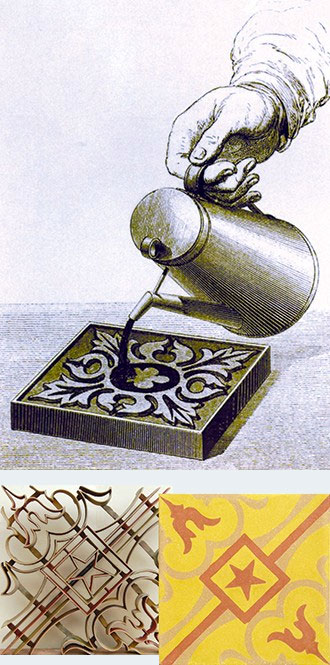 The Echo Tile Collection revitalizes an art form that developed in France in the mid-1800's — some say the true origins were in Barcelona — and quickly spread around the world. Unlike hand made ceramic tiles, which are usually hand painted, glazed and fired, decorative cement tiles are made by first pouring a mixture of cement and color pigment into separate compartments in a metal mold (a sort of oversized cookie cutter). This first color layer is 1/8" thick. Next we add concrete and press the tile under 2,000 pounds of pressure per square inch. This upside down cake is left to cure, creating a remarkably strong and lustrous cement tile. This process requires skill, practice, strength, and perfectionism. Granada Tile employs and provides on-going training opportunities to fine craftsmen who take pride in producing beautiful and durable tiles.
The Echo Tile Collection revitalizes an art form that developed in France in the mid-1800's — some say the true origins were in Barcelona — and quickly spread around the world. Unlike hand made ceramic tiles, which are usually hand painted, glazed and fired, decorative cement tiles are made by first pouring a mixture of cement and color pigment into separate compartments in a metal mold (a sort of oversized cookie cutter). This first color layer is 1/8" thick. Next we add concrete and press the tile under 2,000 pounds of pressure per square inch. This upside down cake is left to cure, creating a remarkably strong and lustrous cement tile. This process requires skill, practice, strength, and perfectionism. Granada Tile employs and provides on-going training opportunities to fine craftsmen who take pride in producing beautiful and durable tiles.

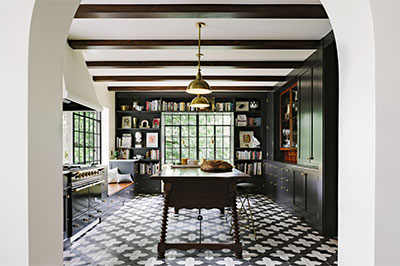
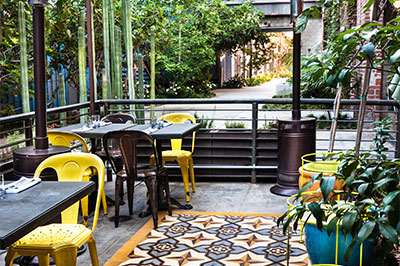
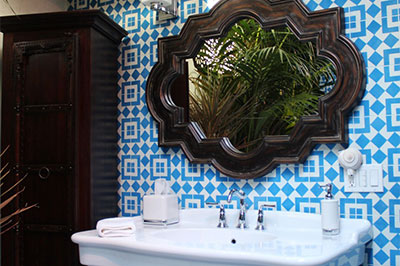
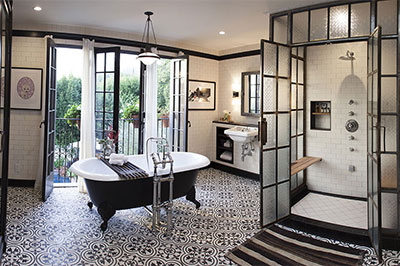
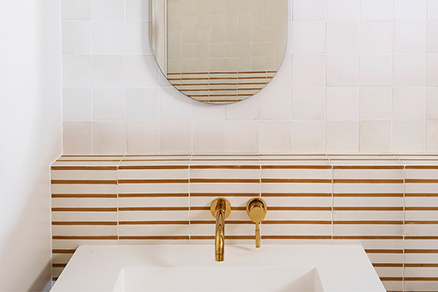
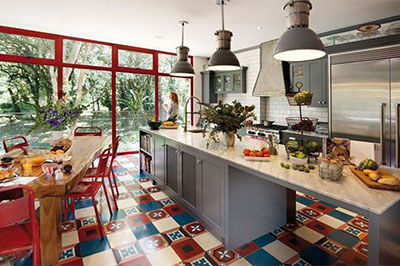
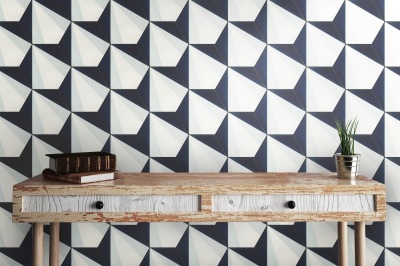
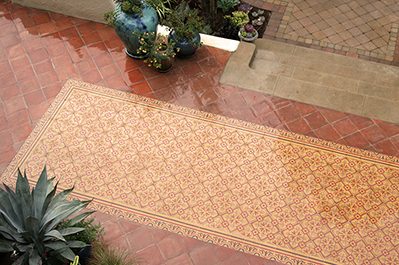
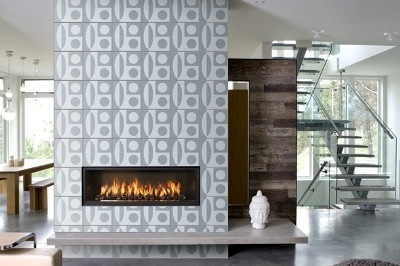
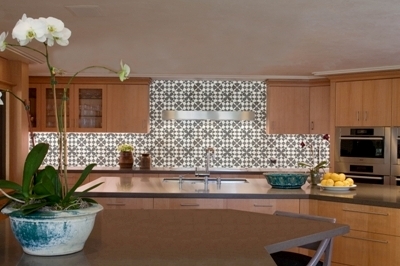
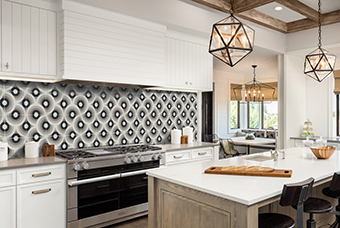
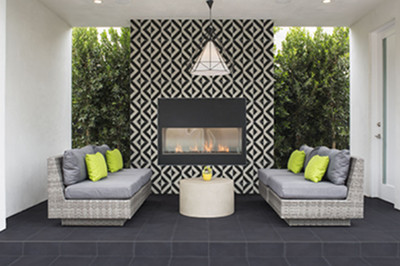
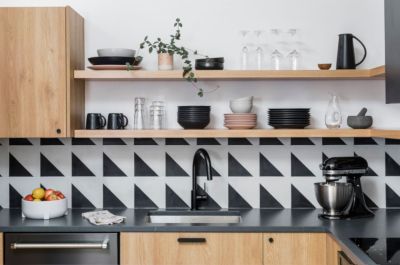
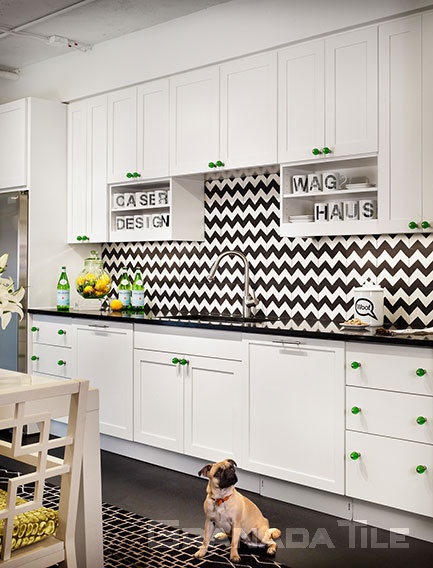
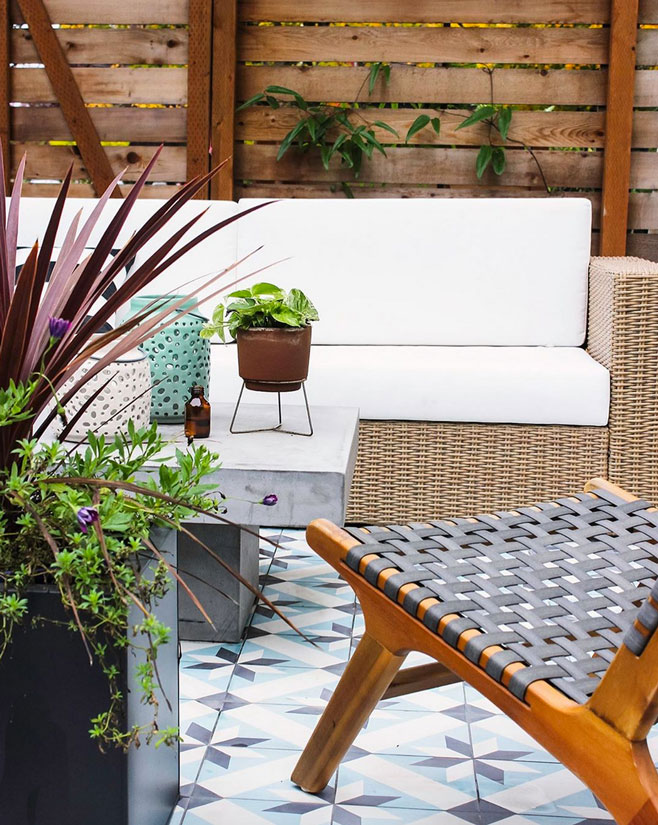
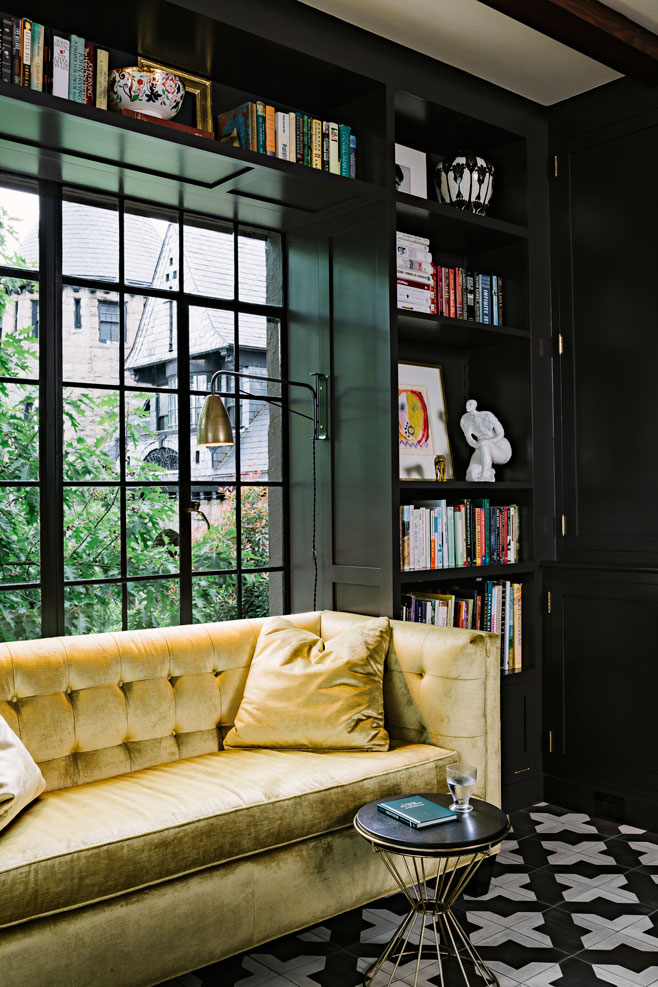
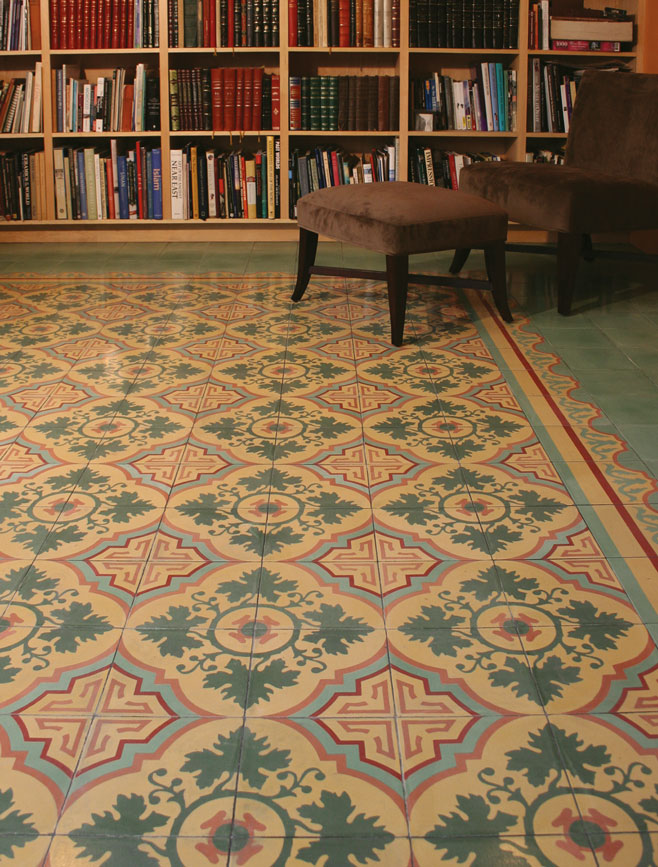
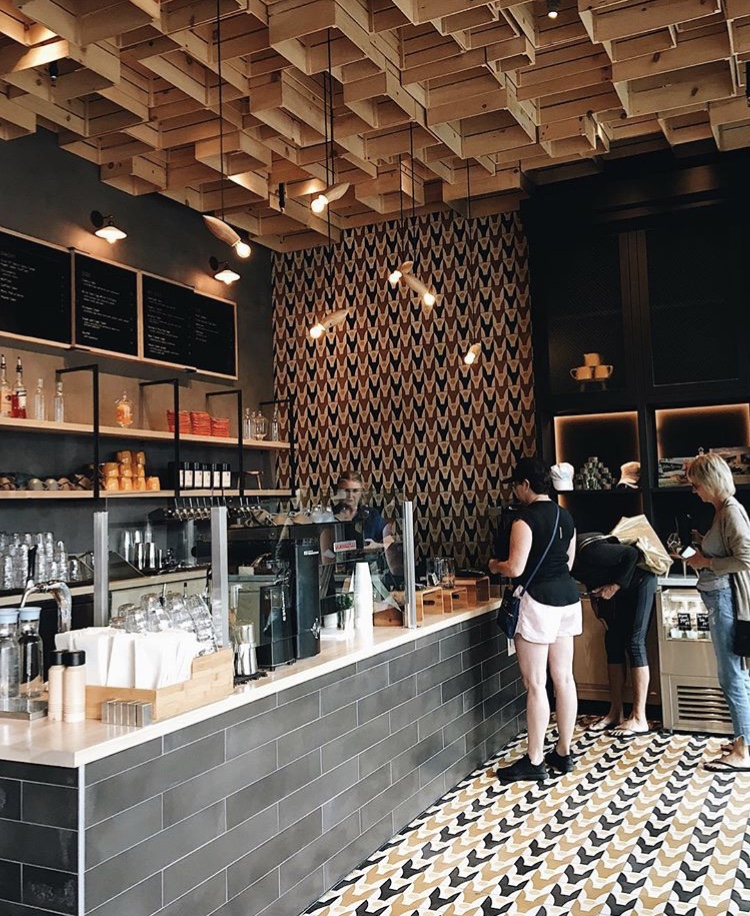
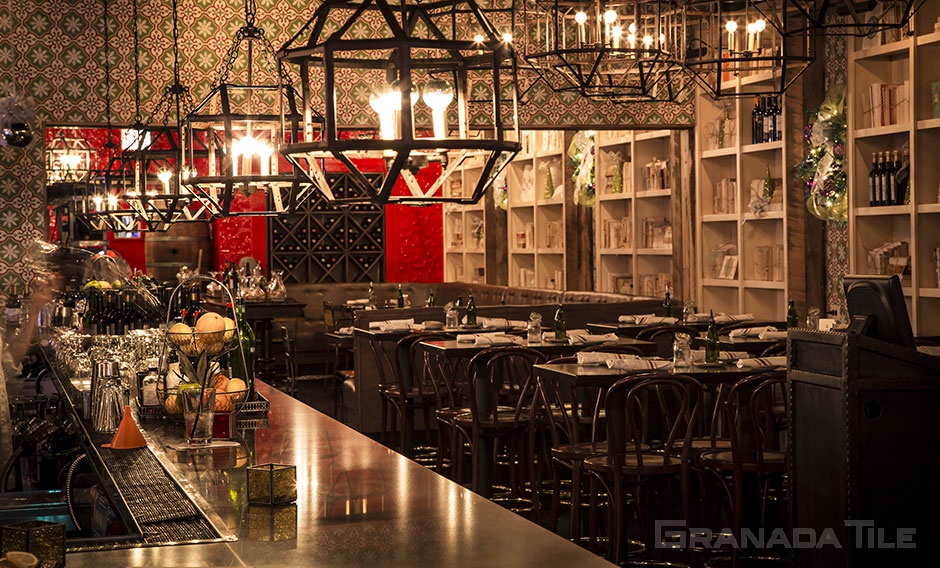
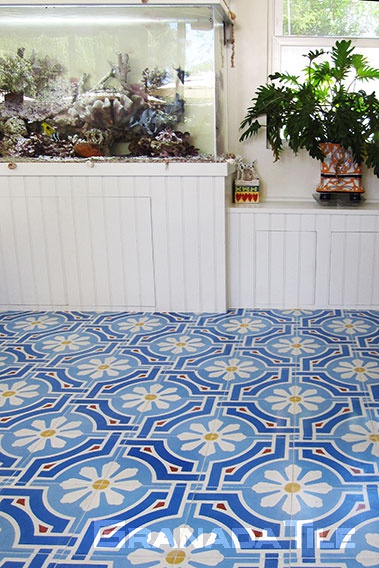
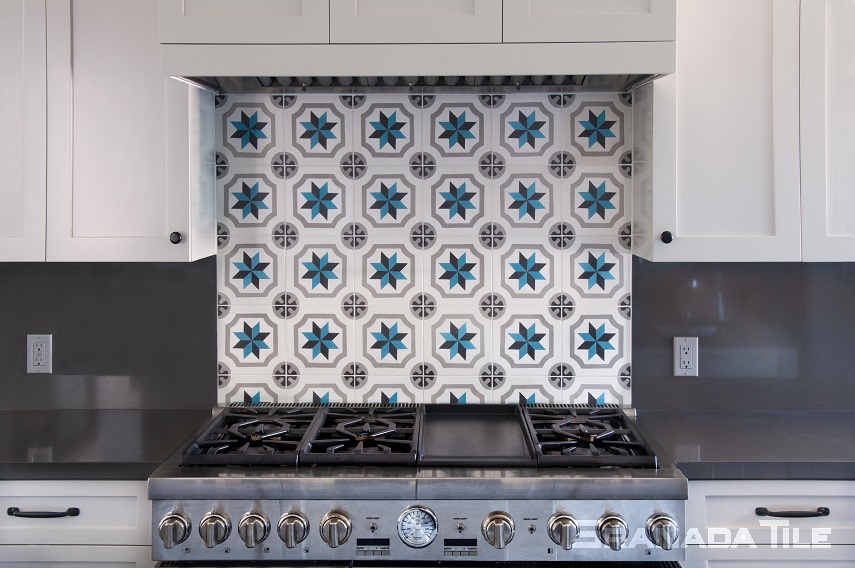
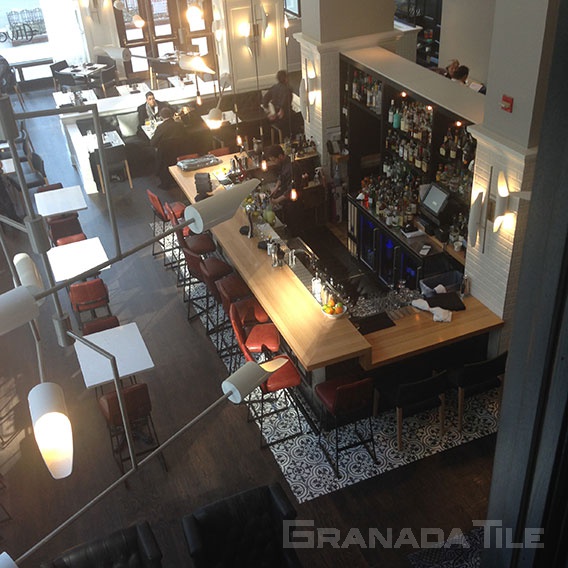
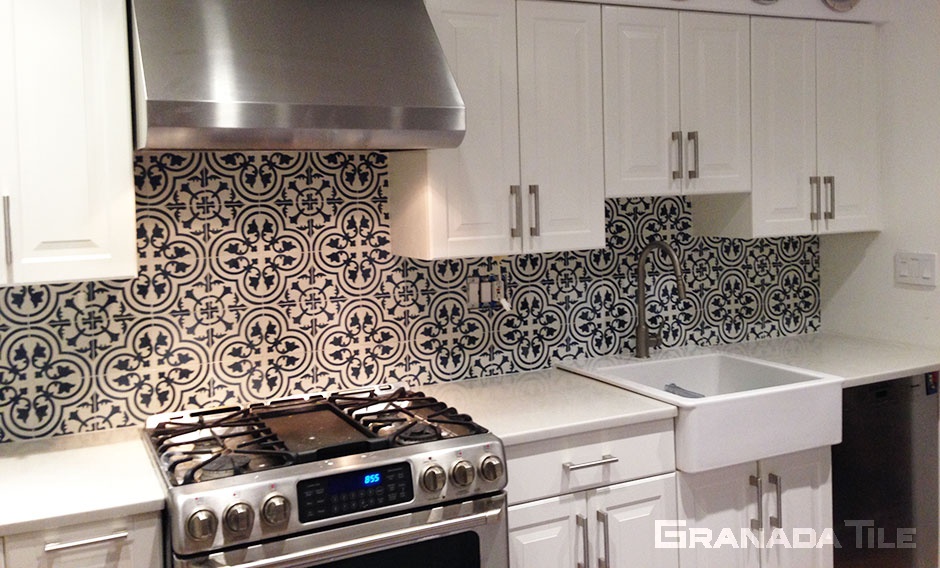
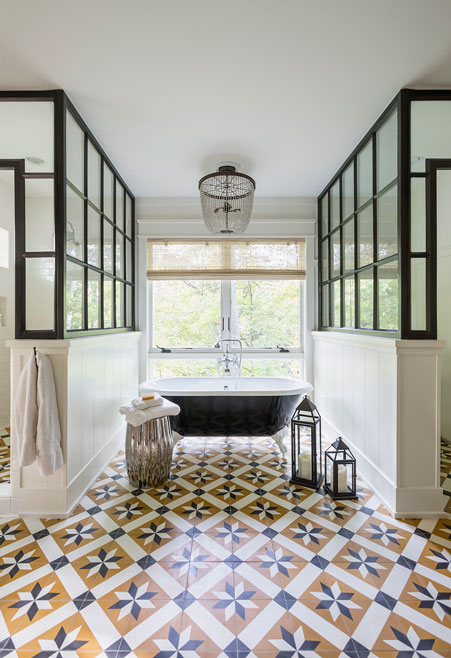
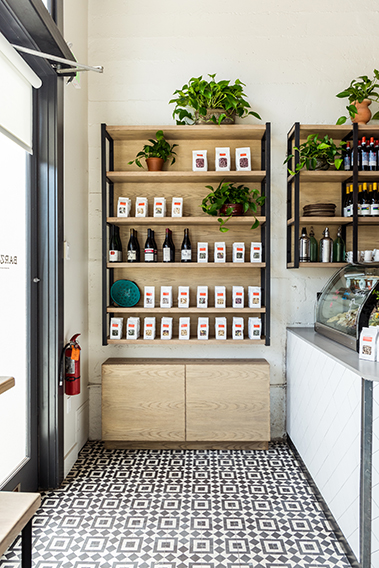
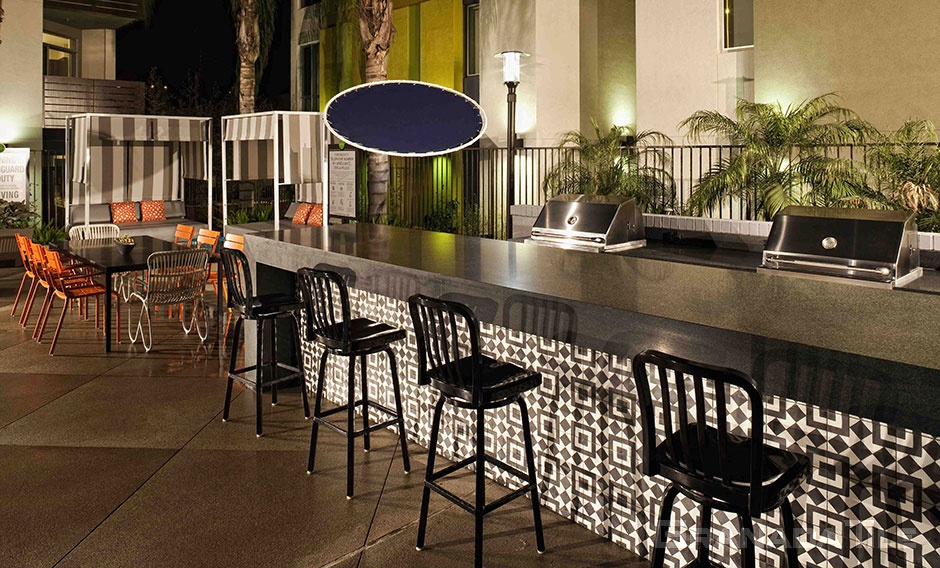
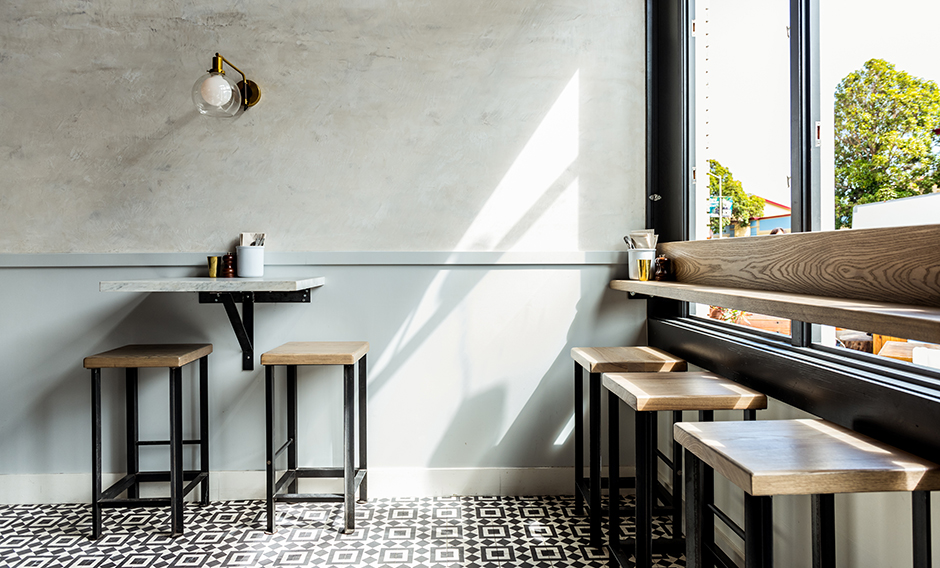
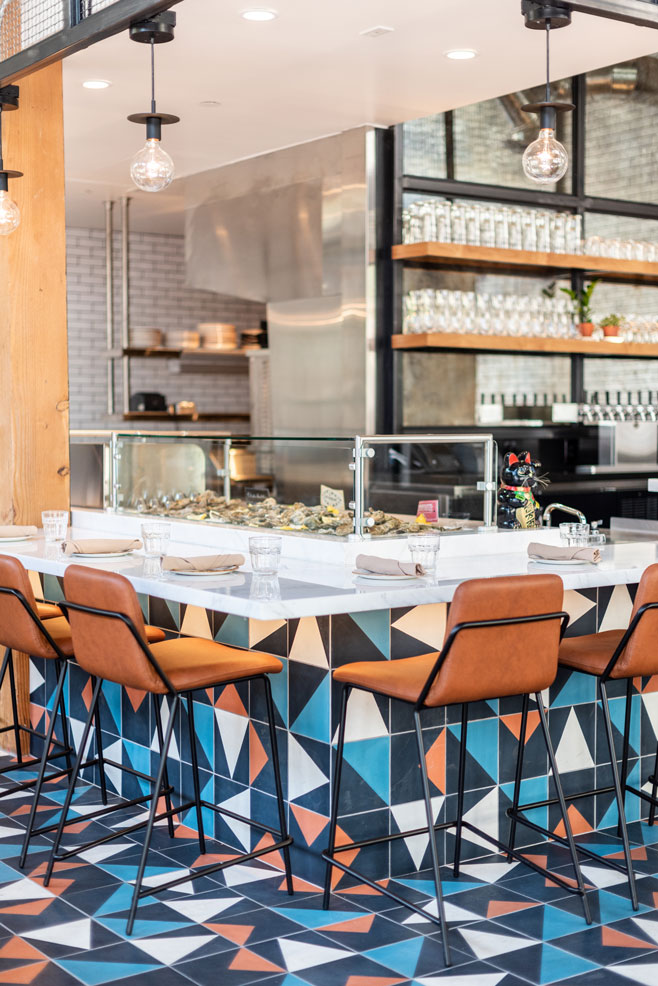
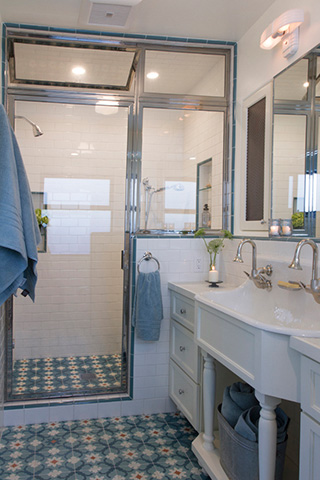
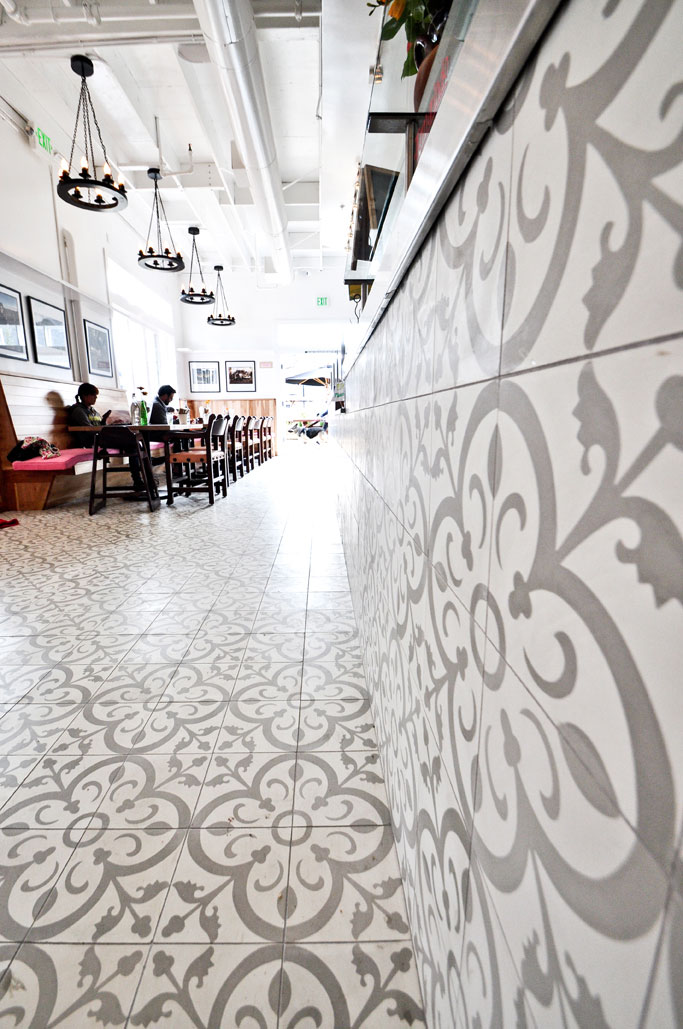
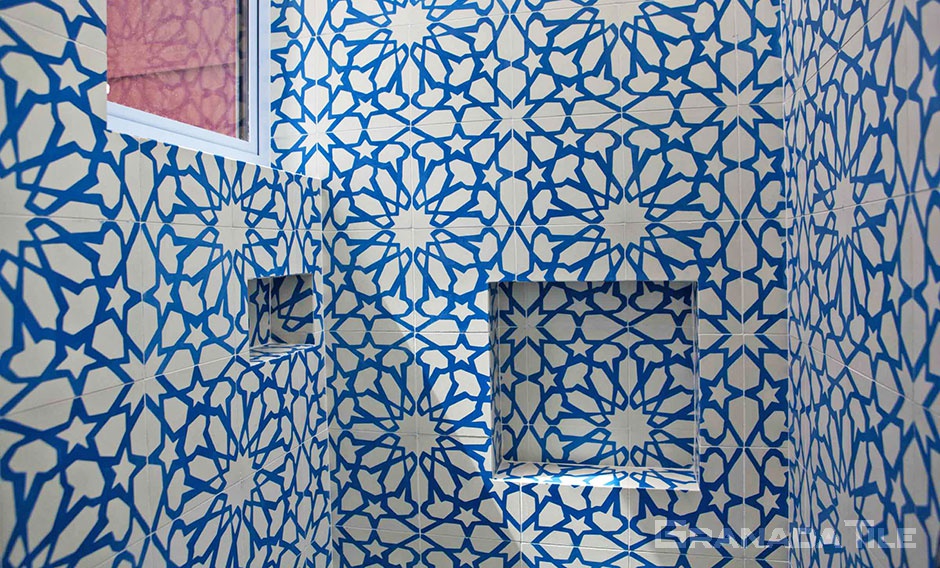
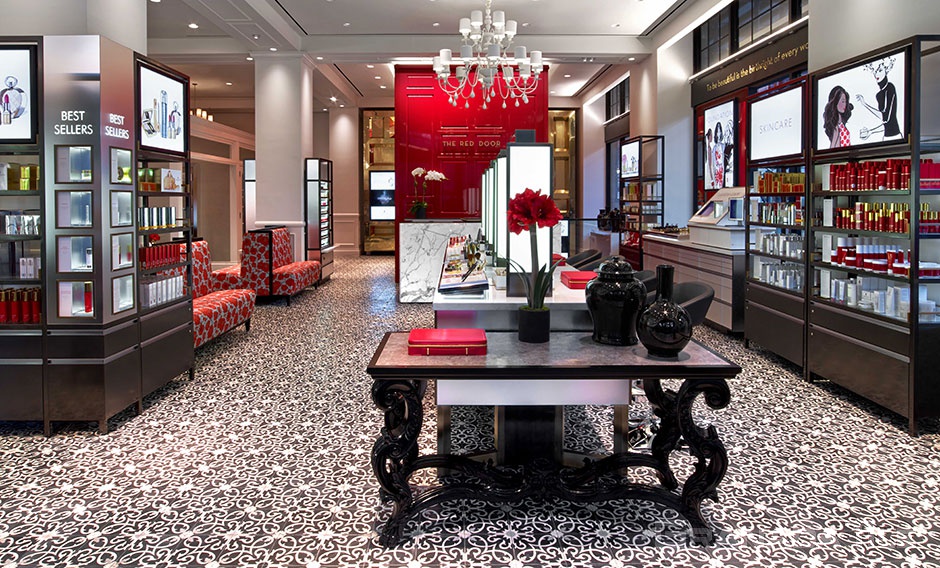
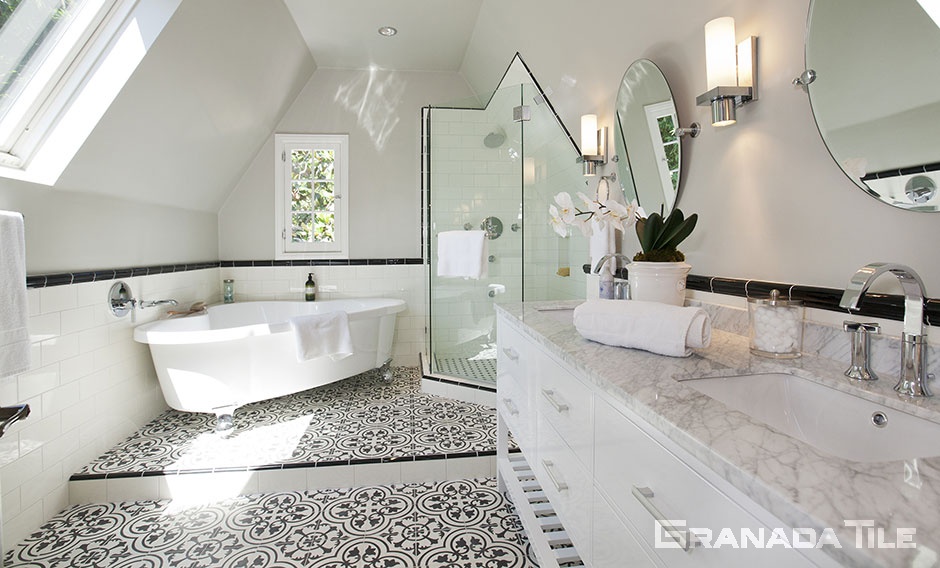
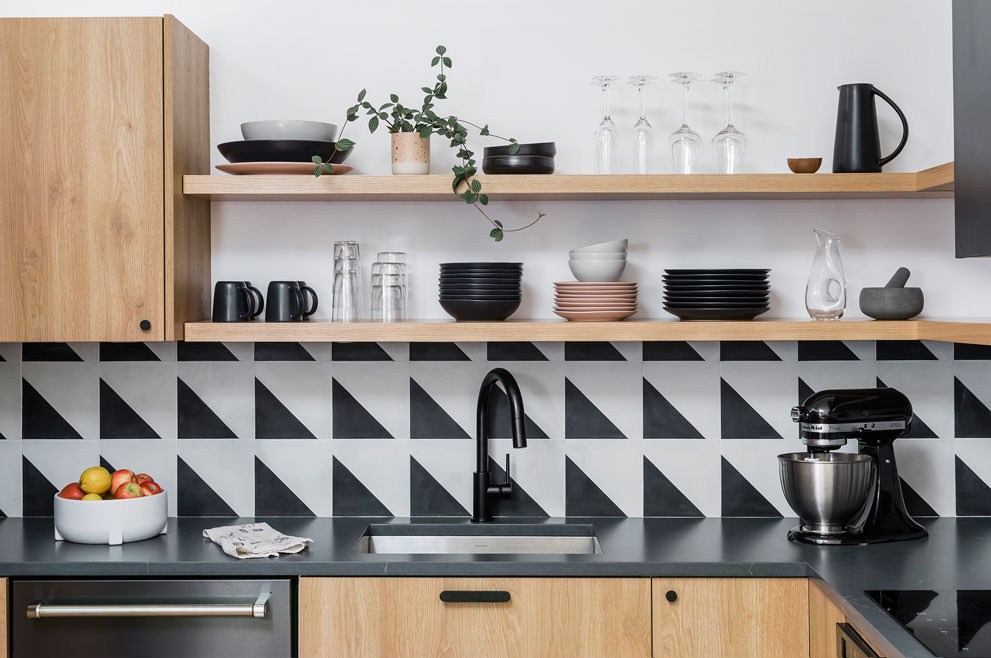
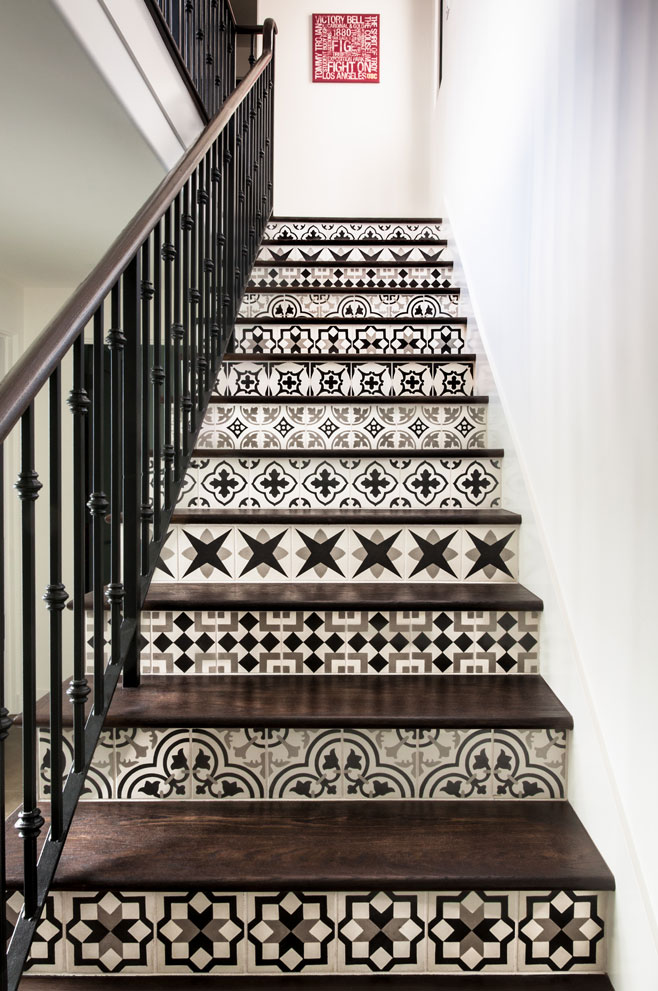
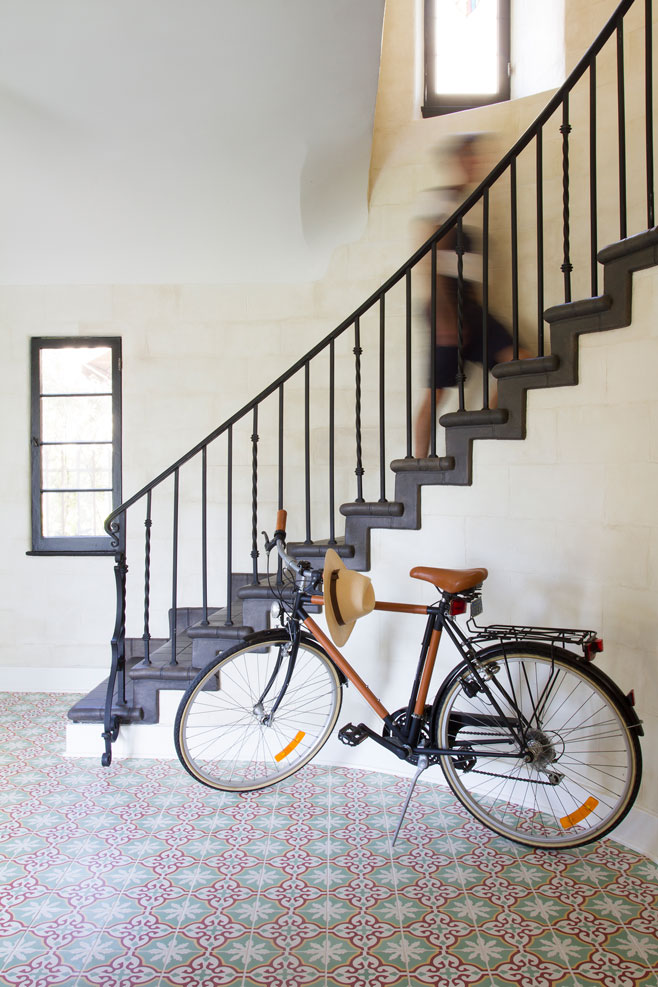
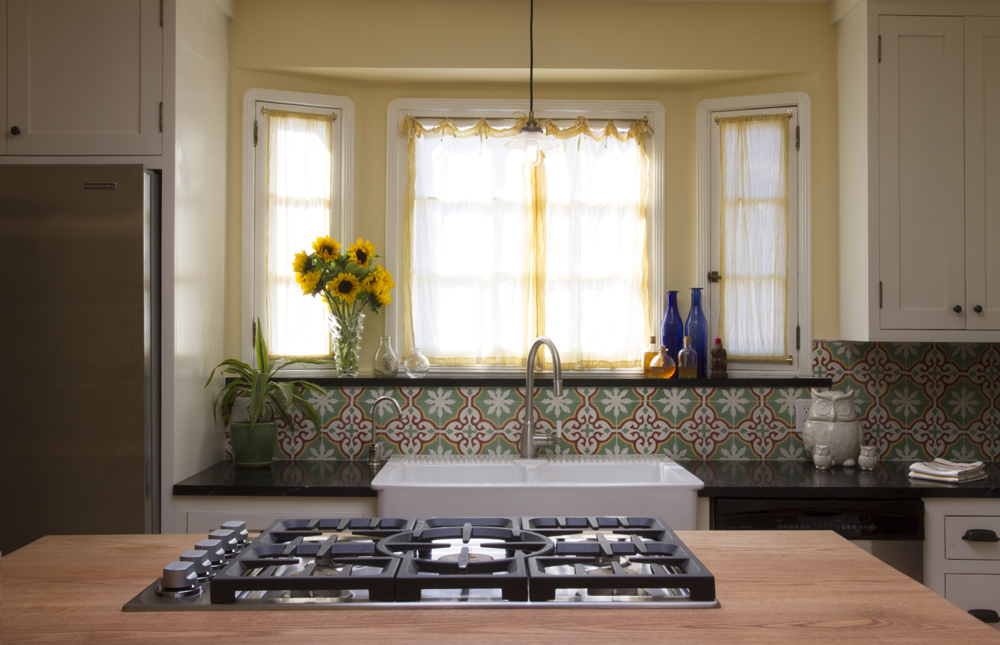
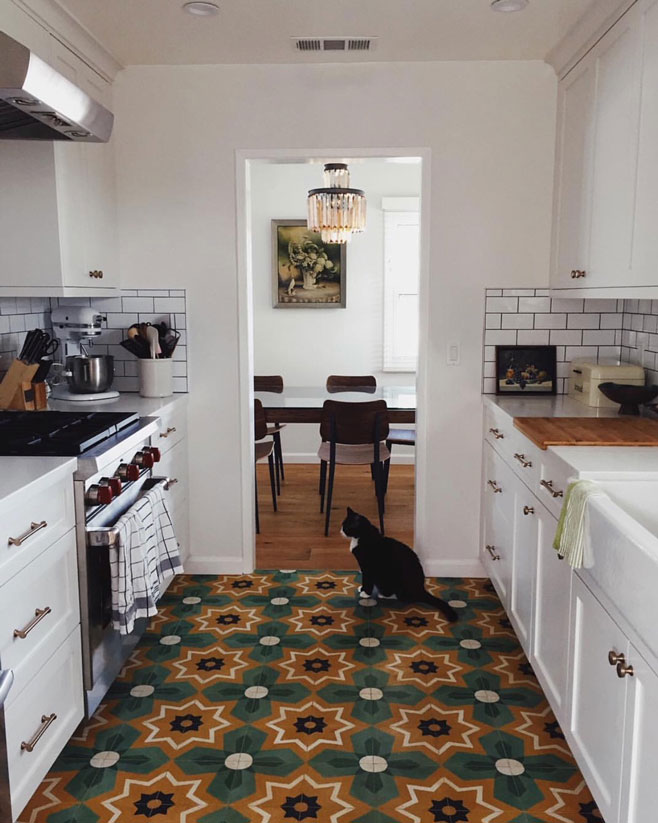
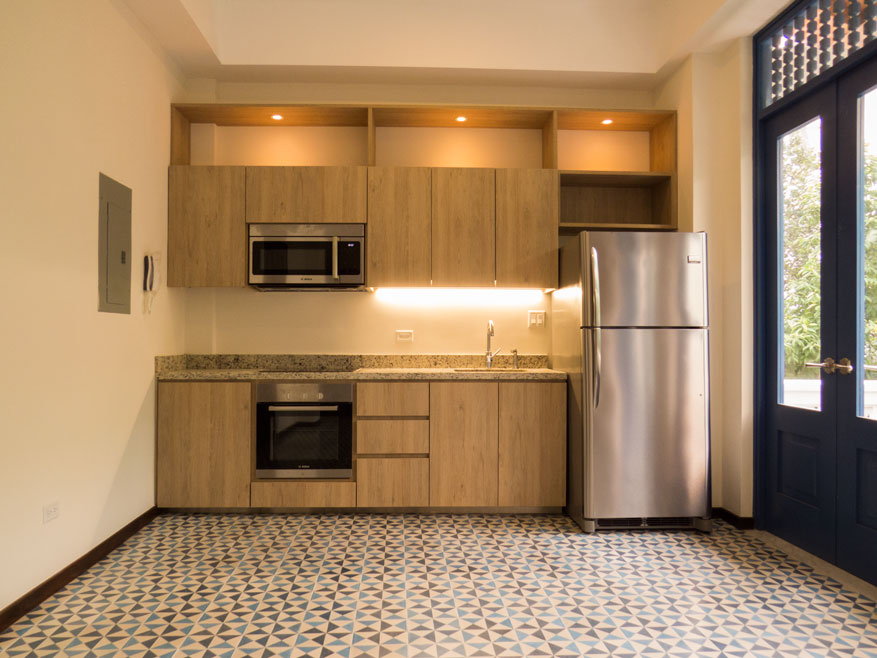
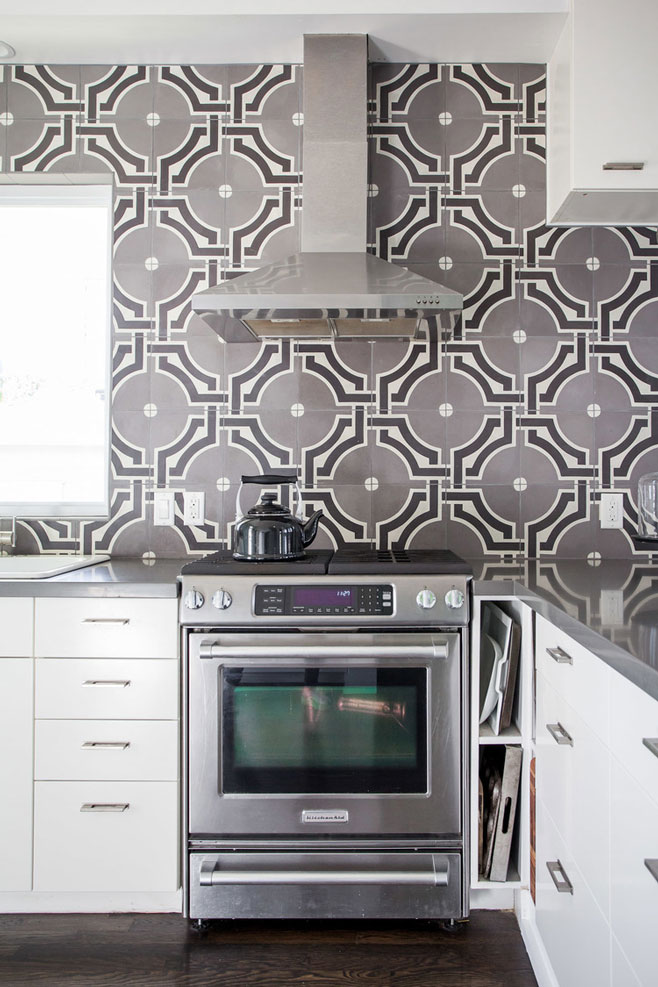
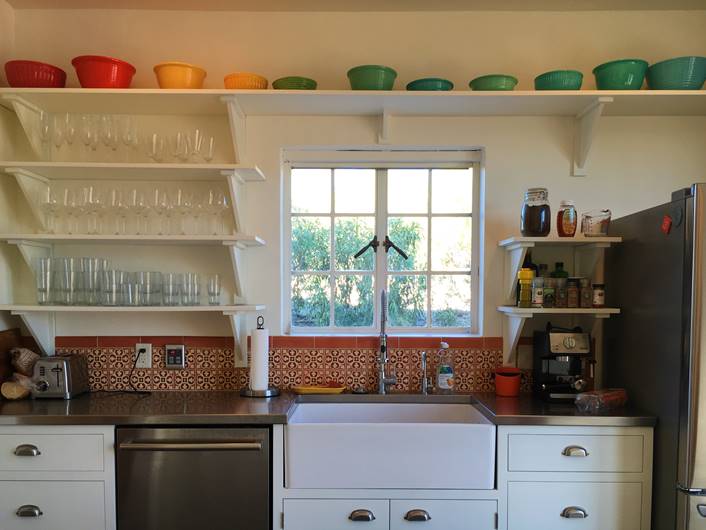
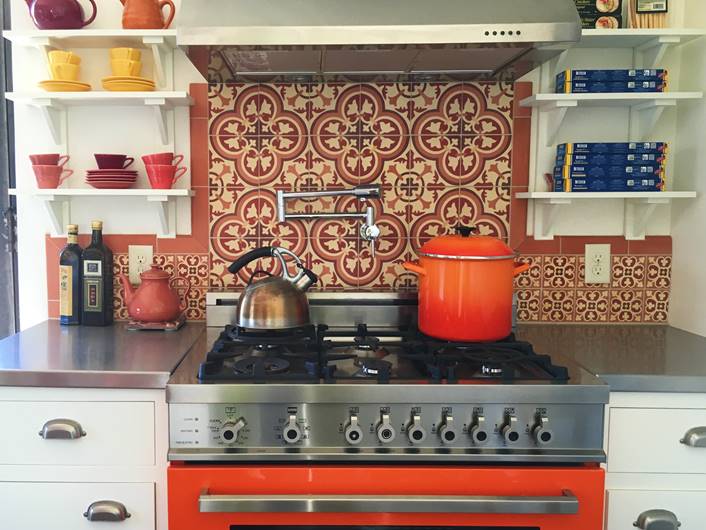

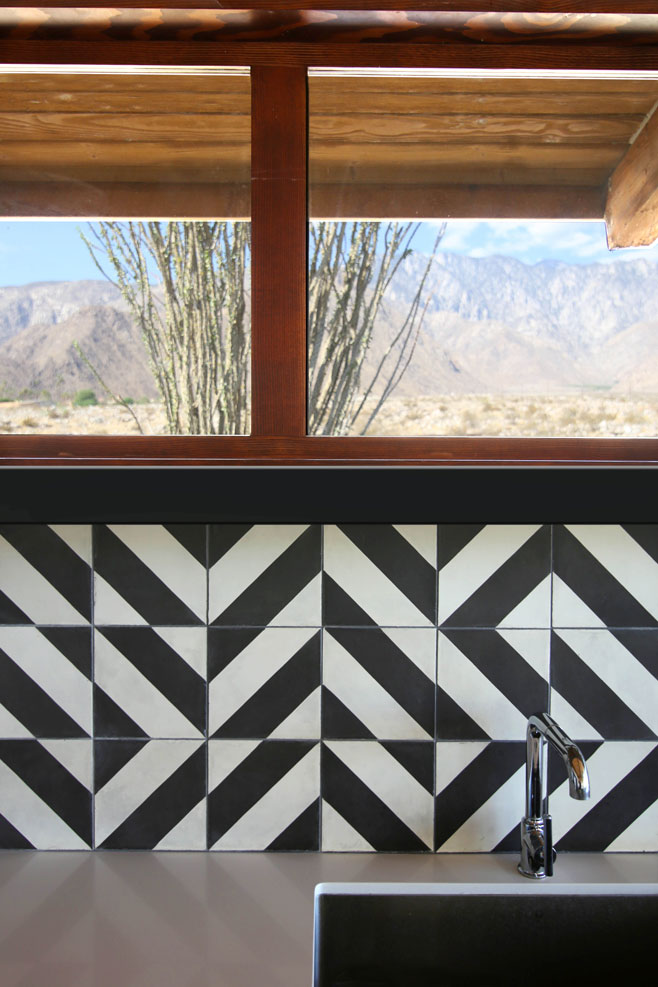
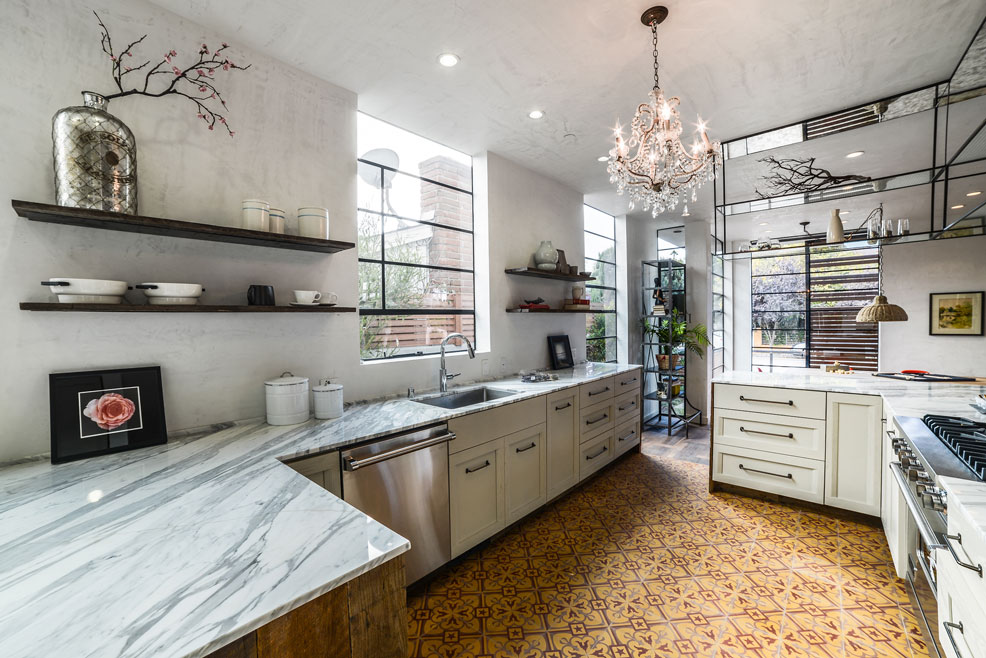
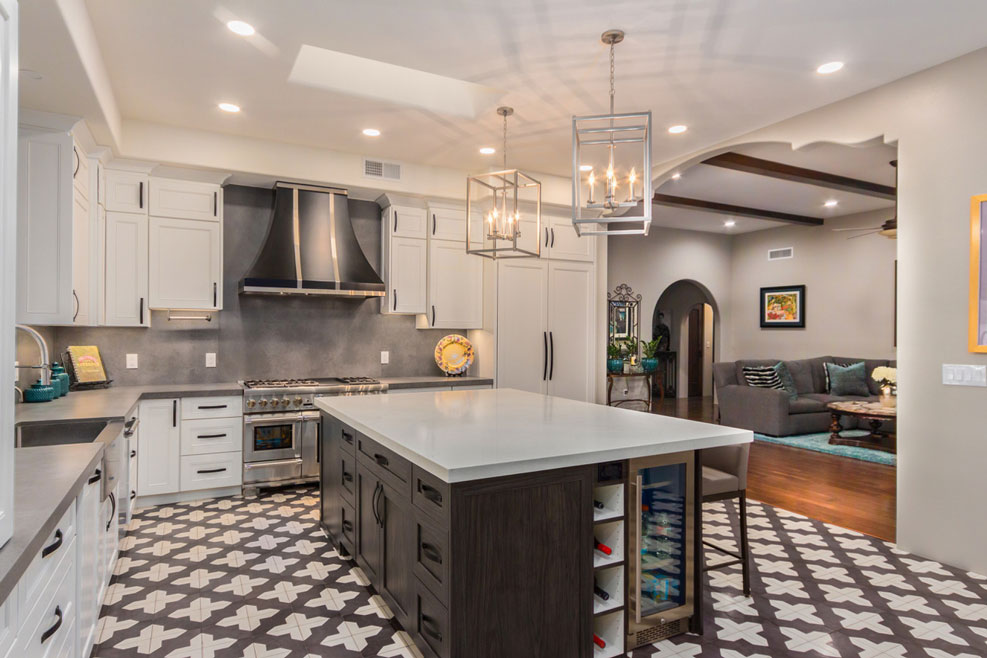
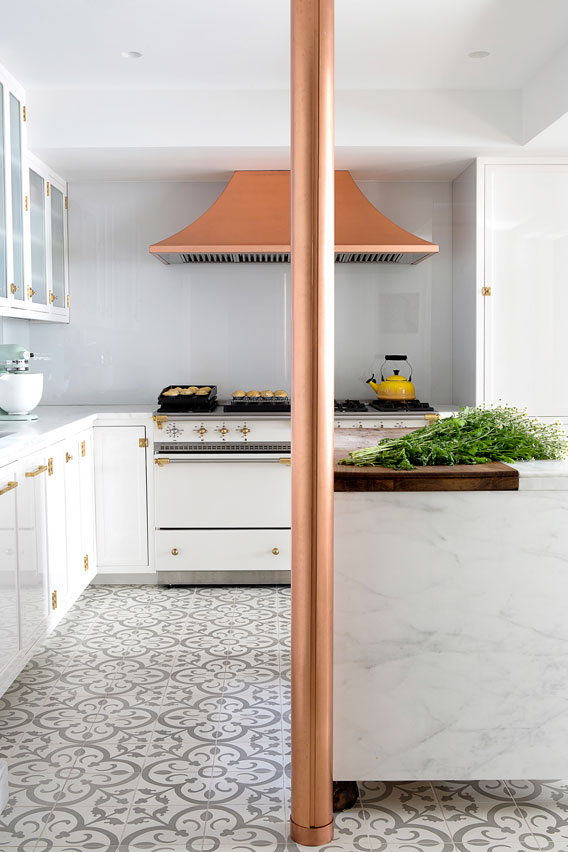
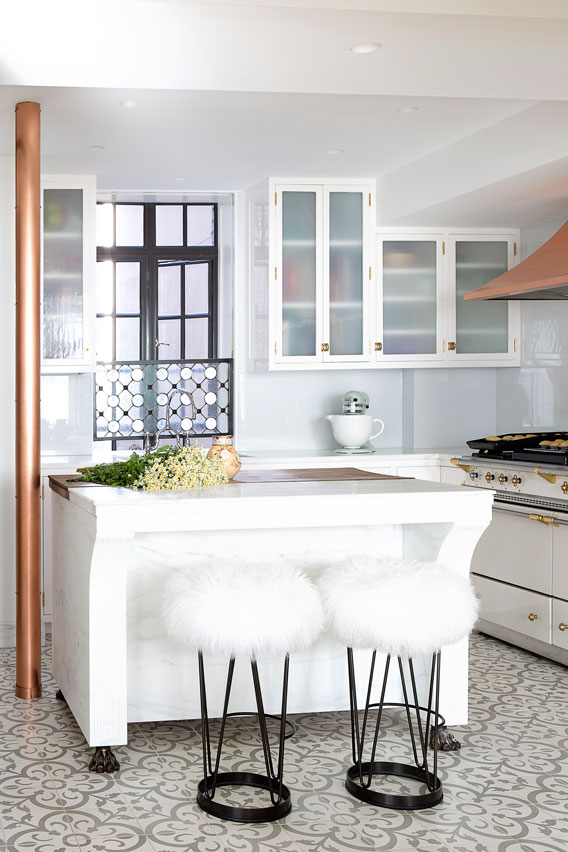
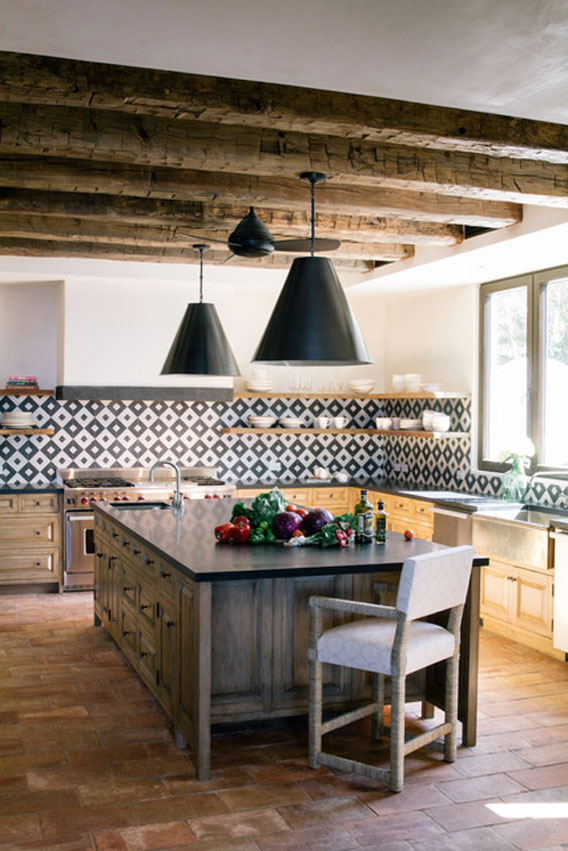
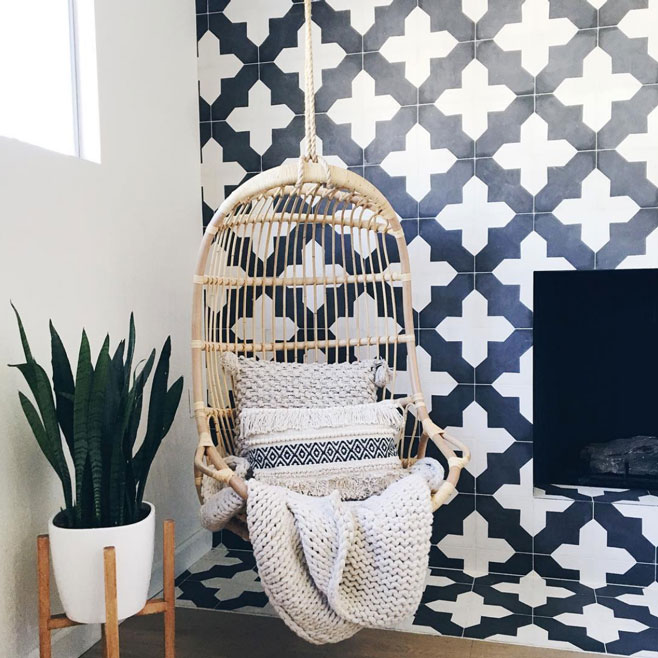
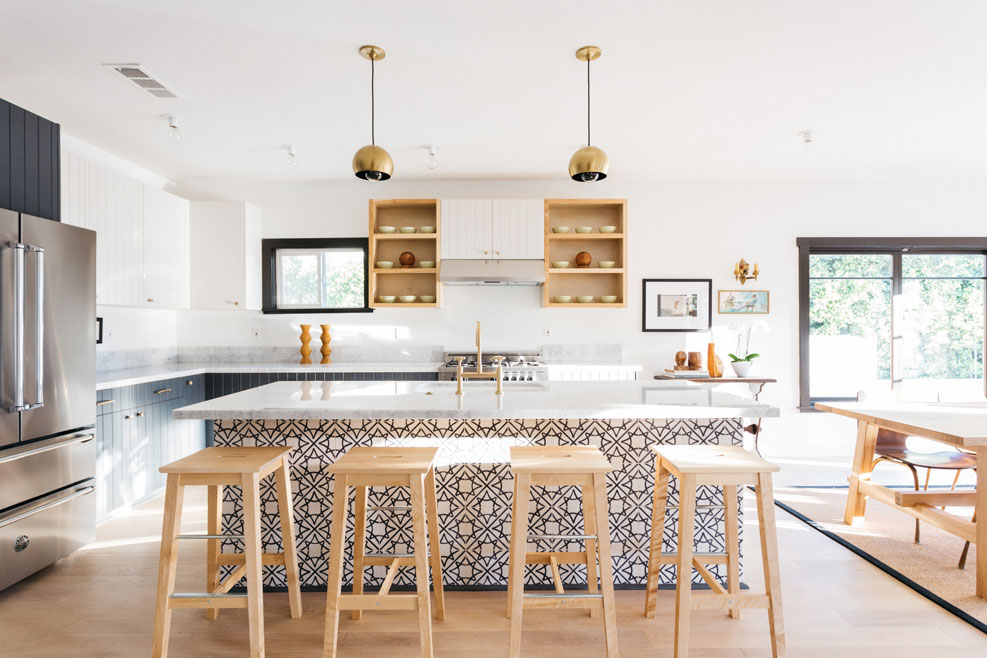
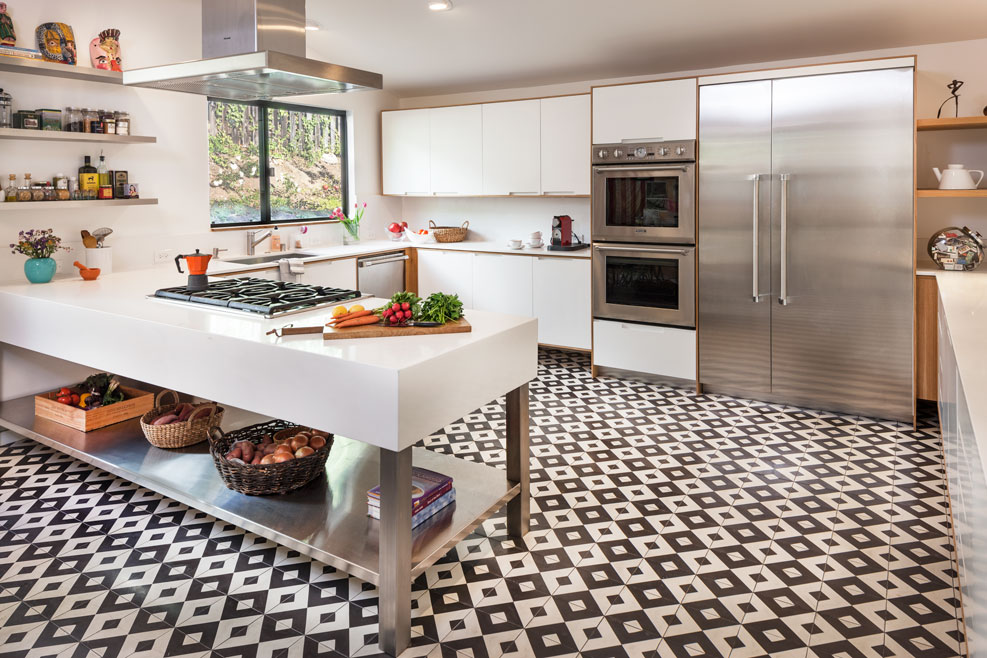
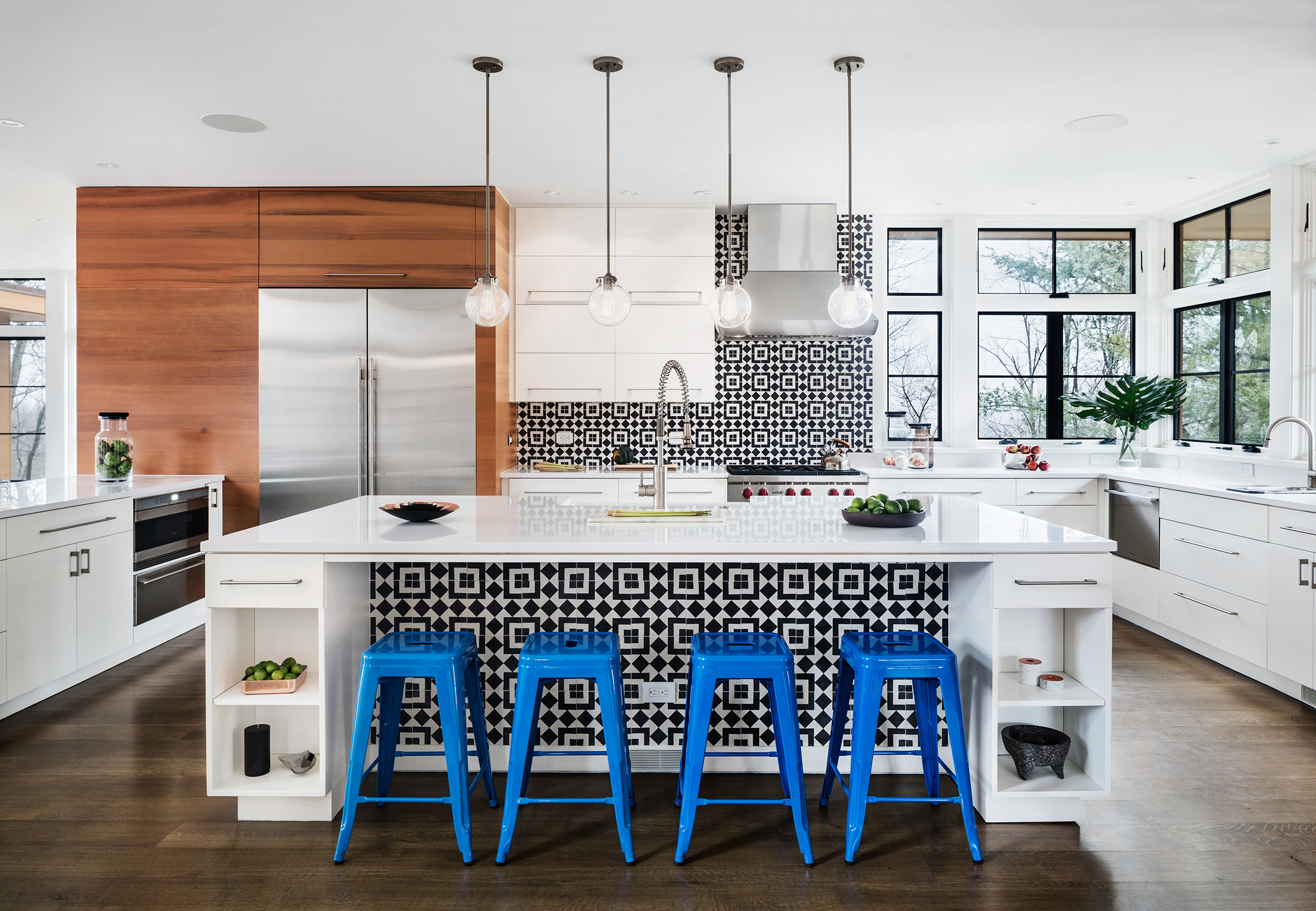
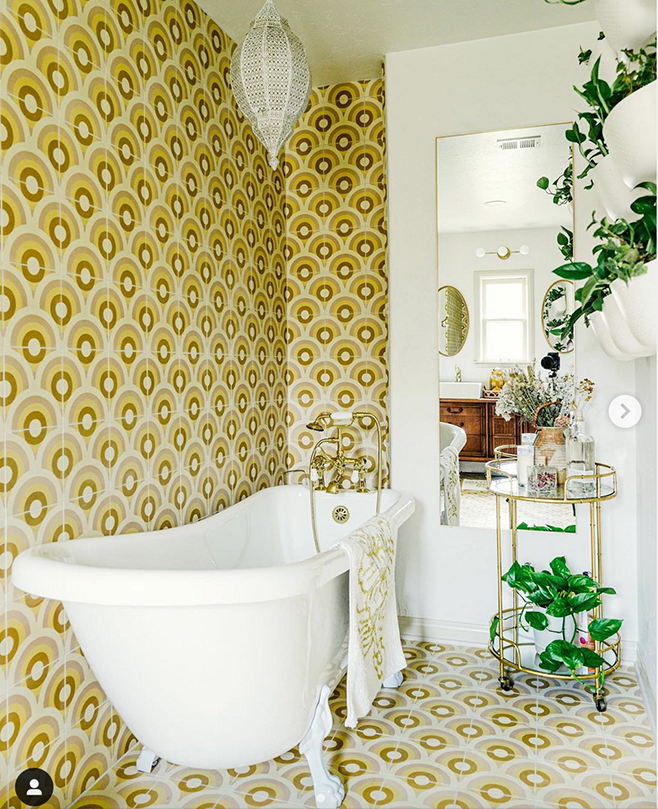
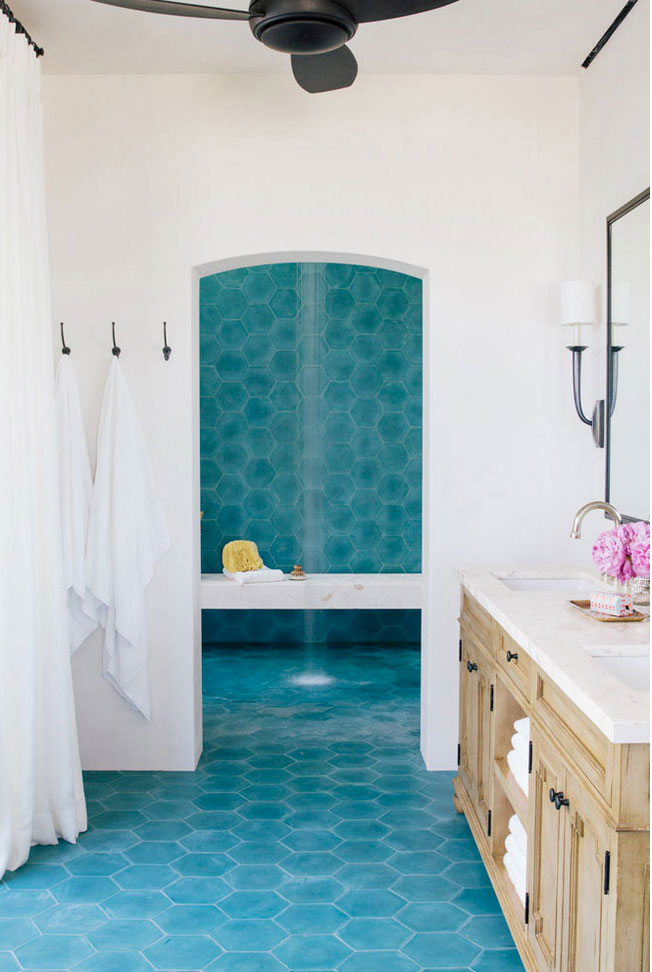
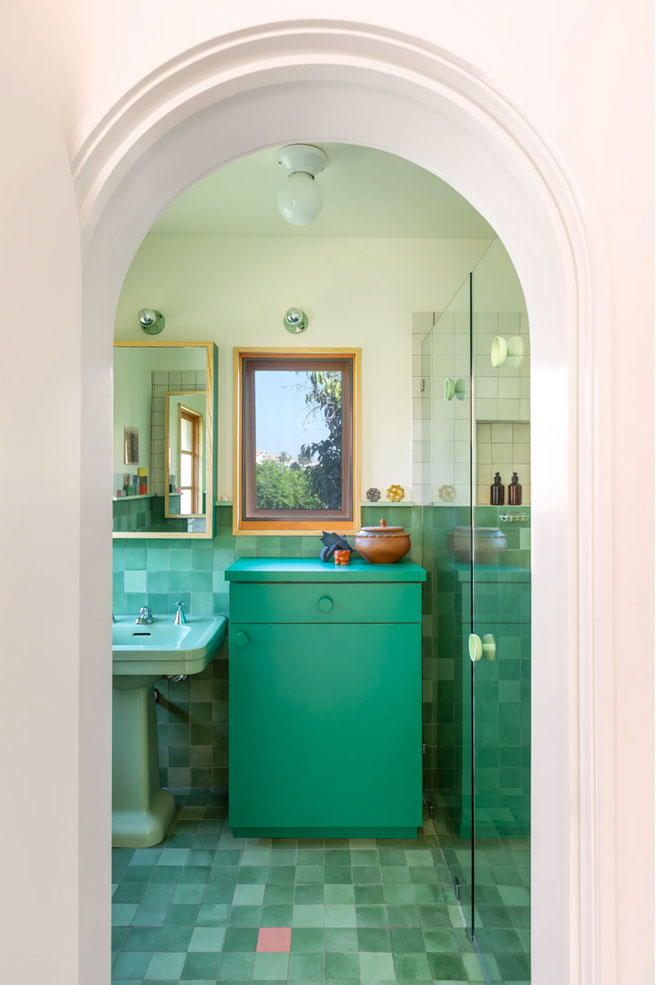
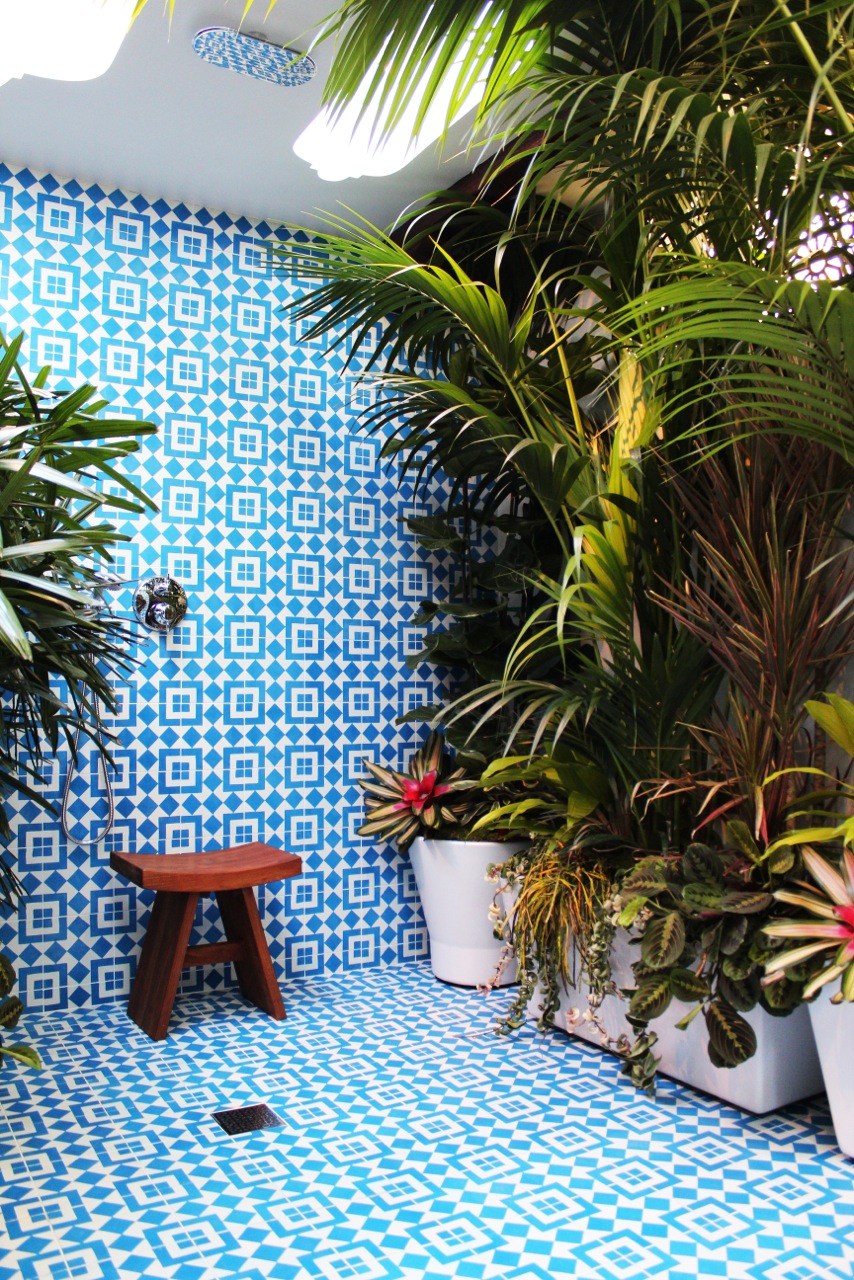
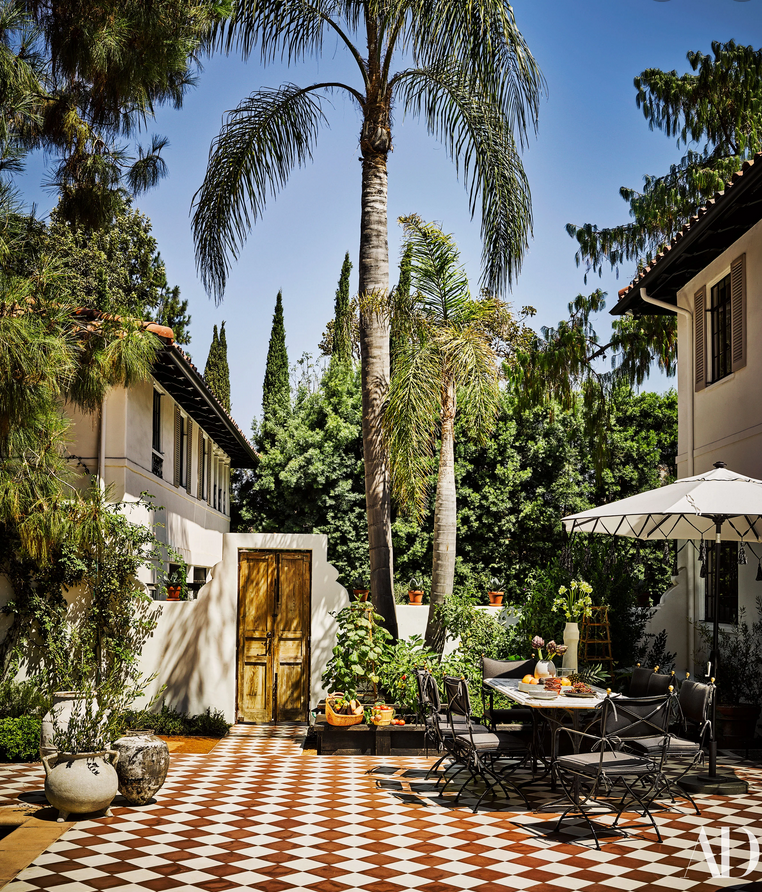
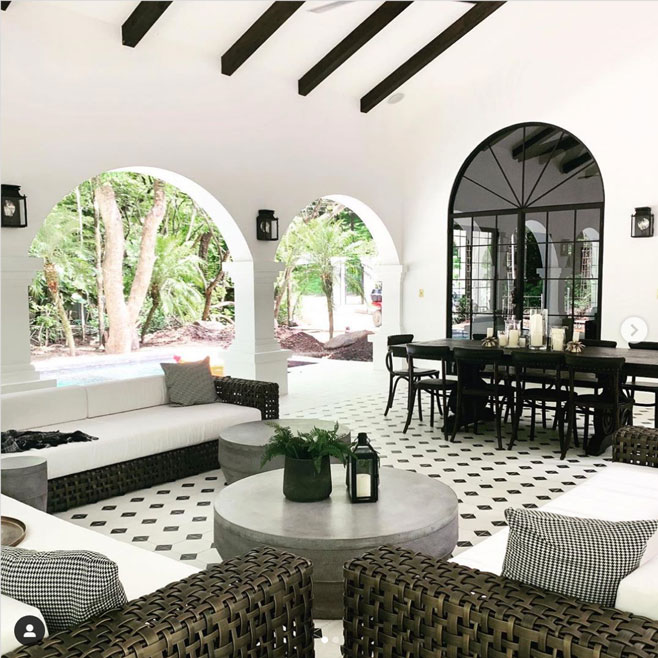
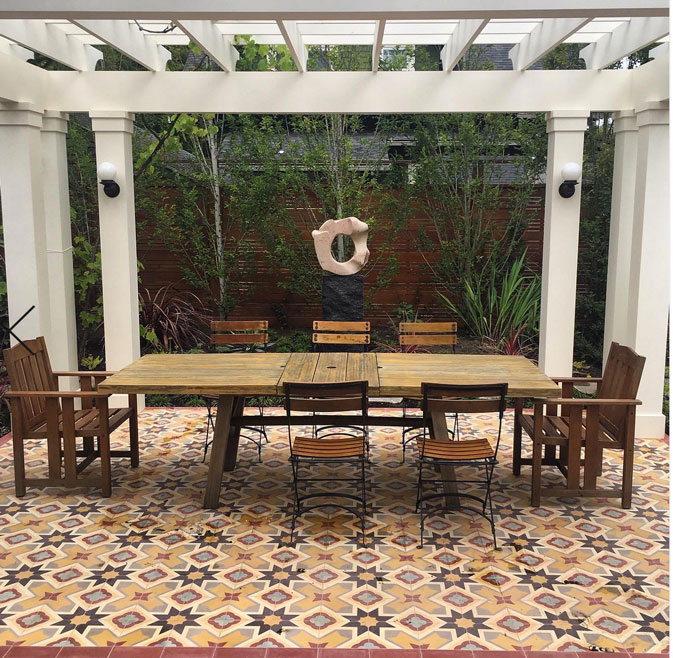
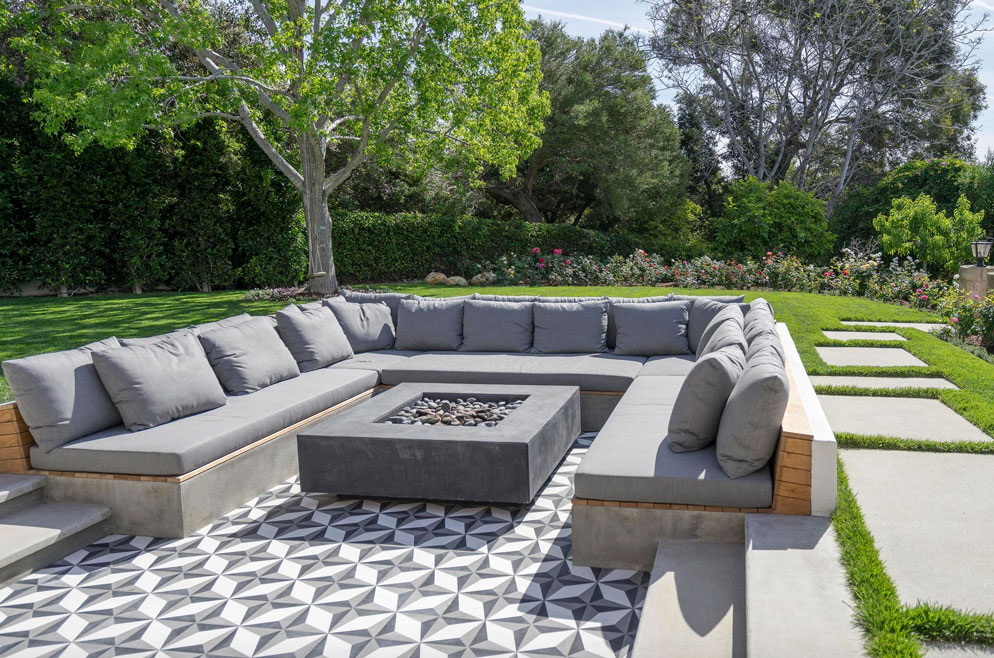
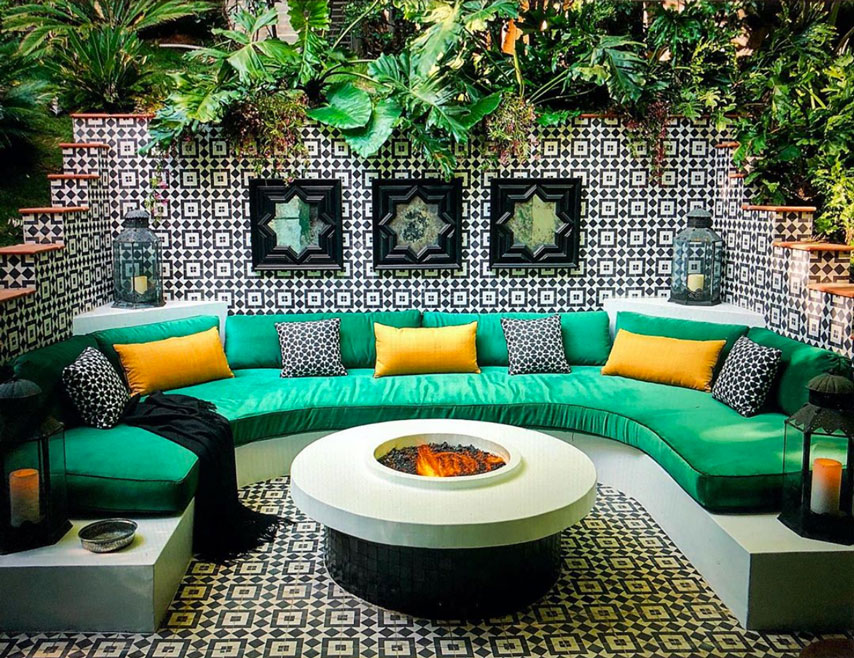
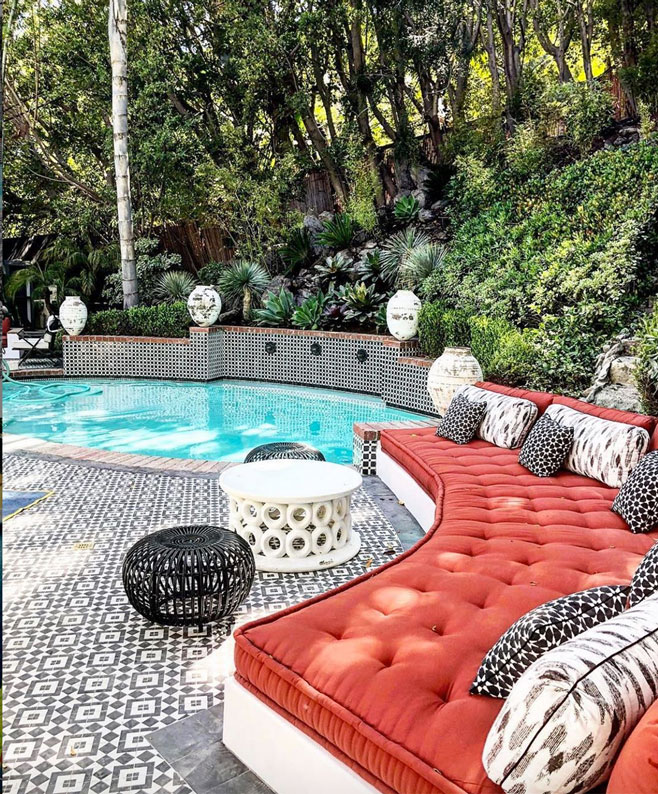
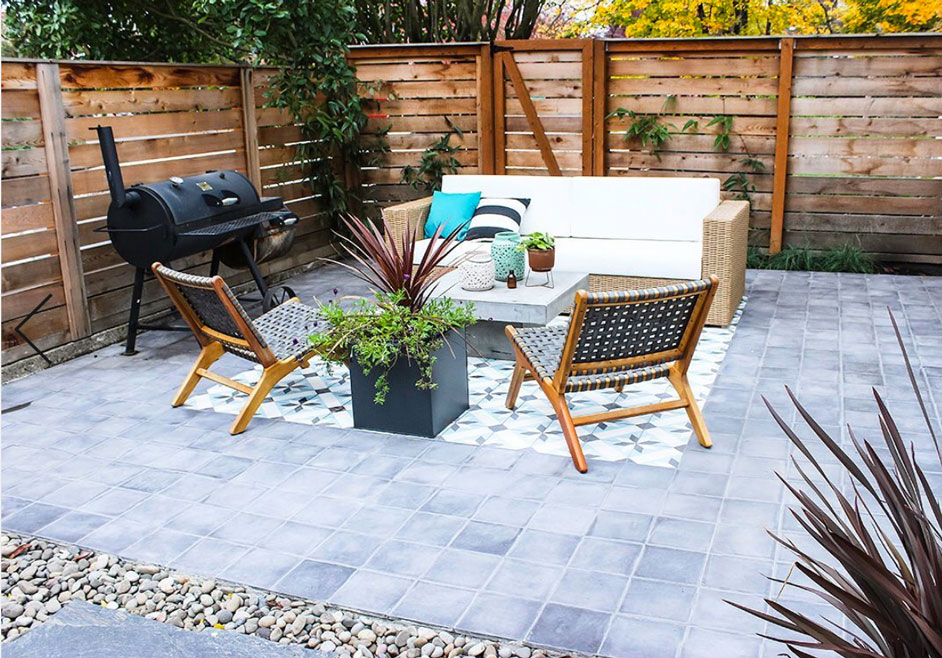
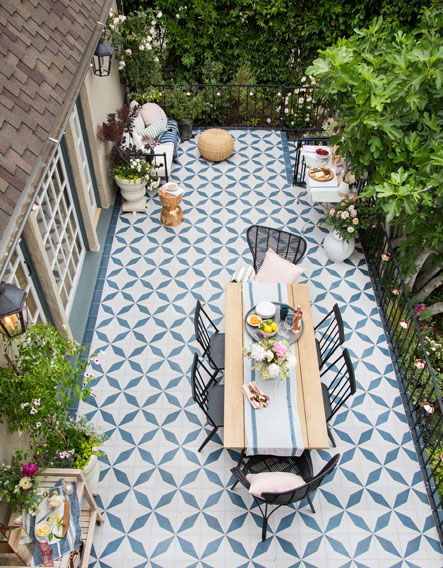
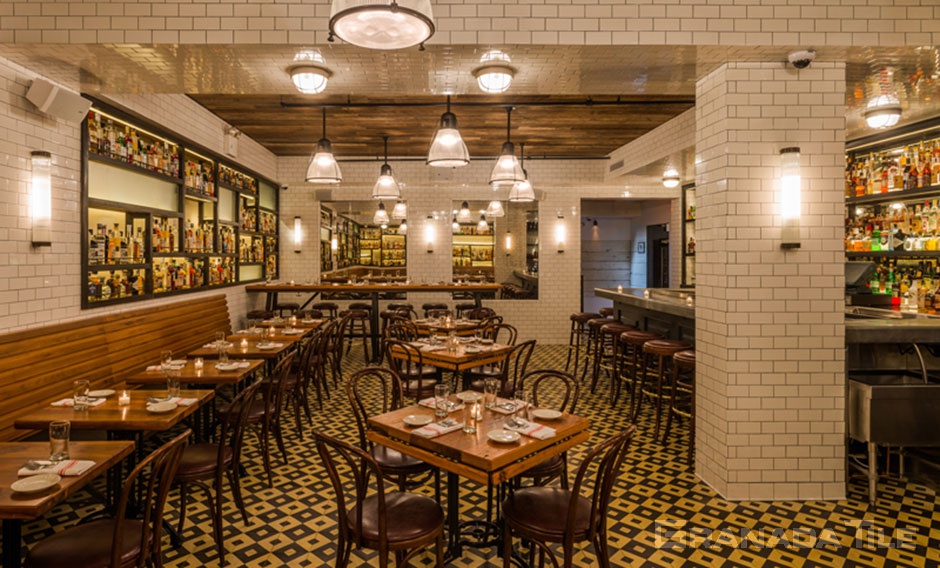
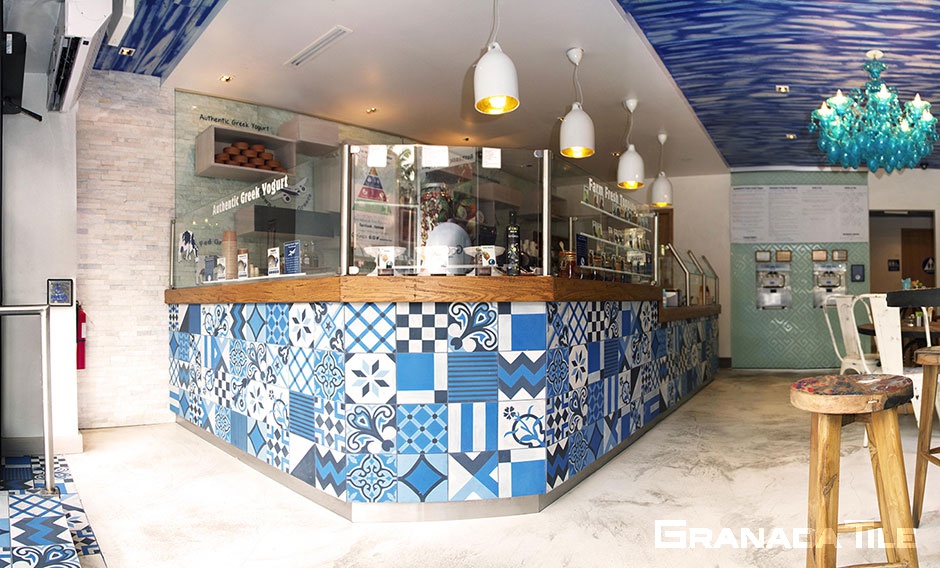
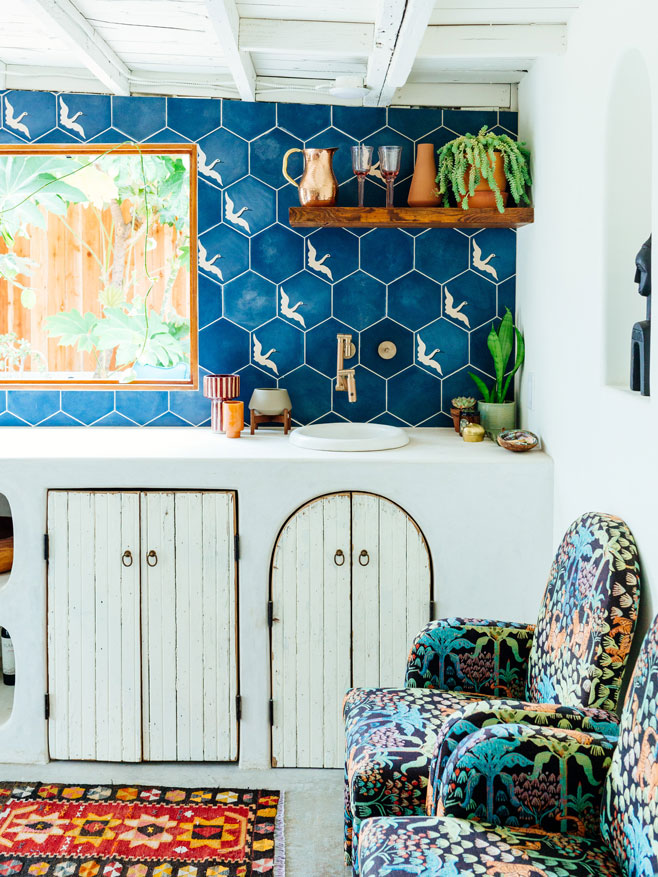
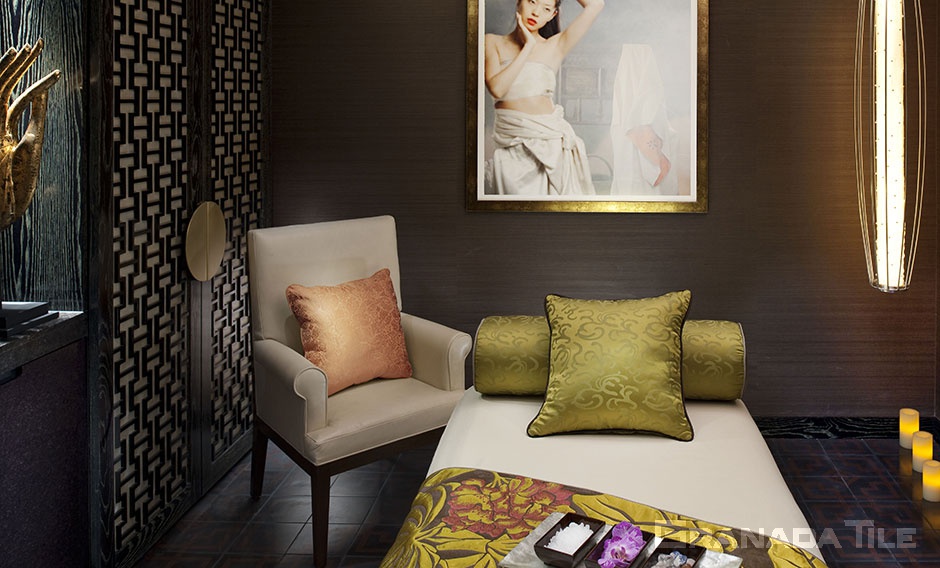
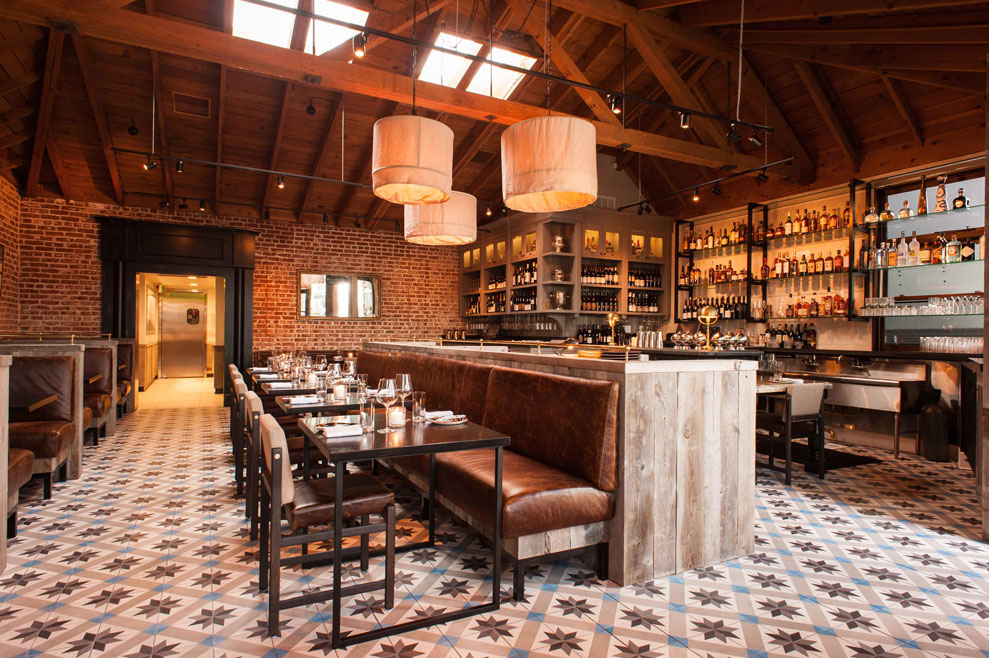
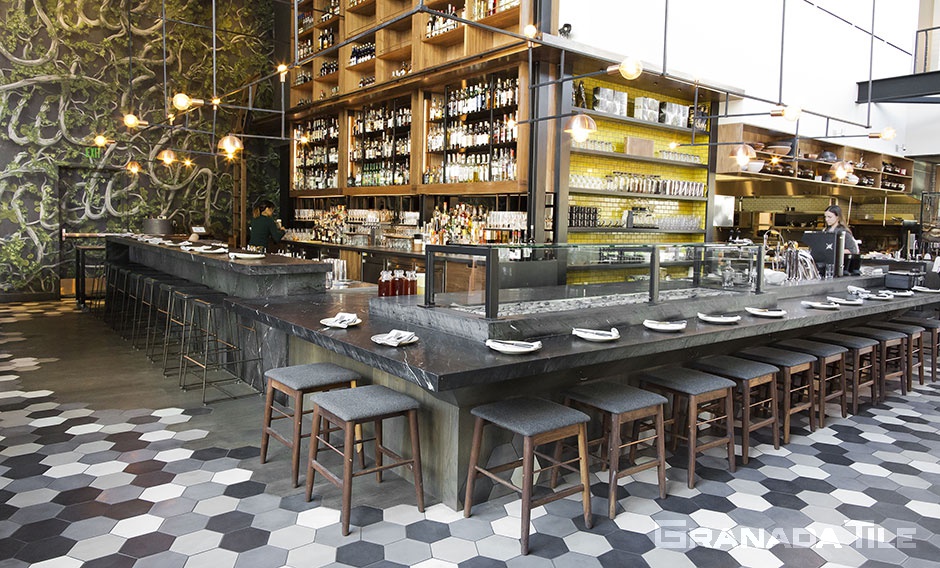
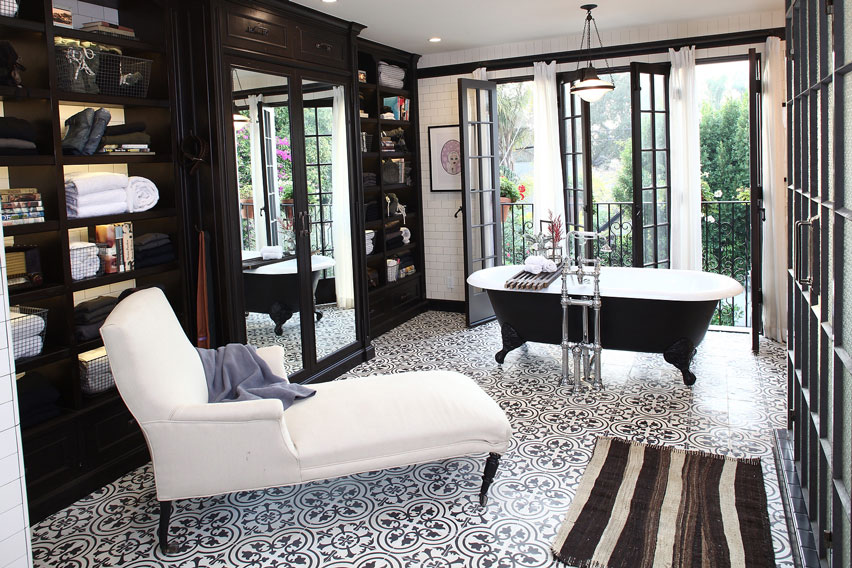
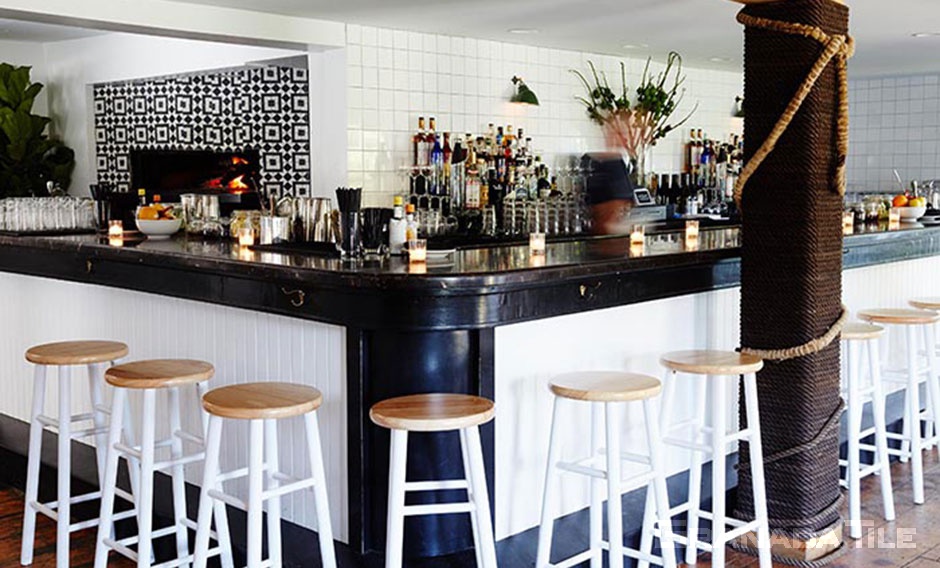
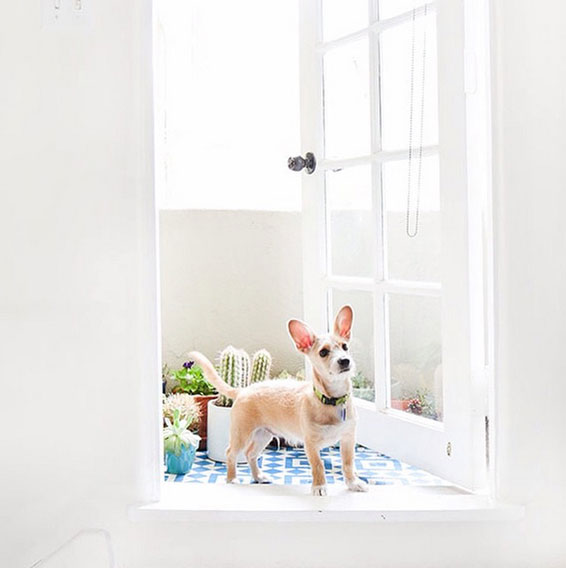
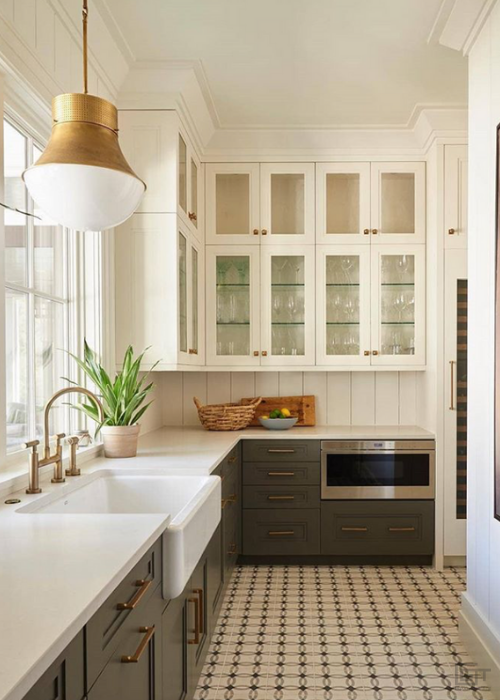
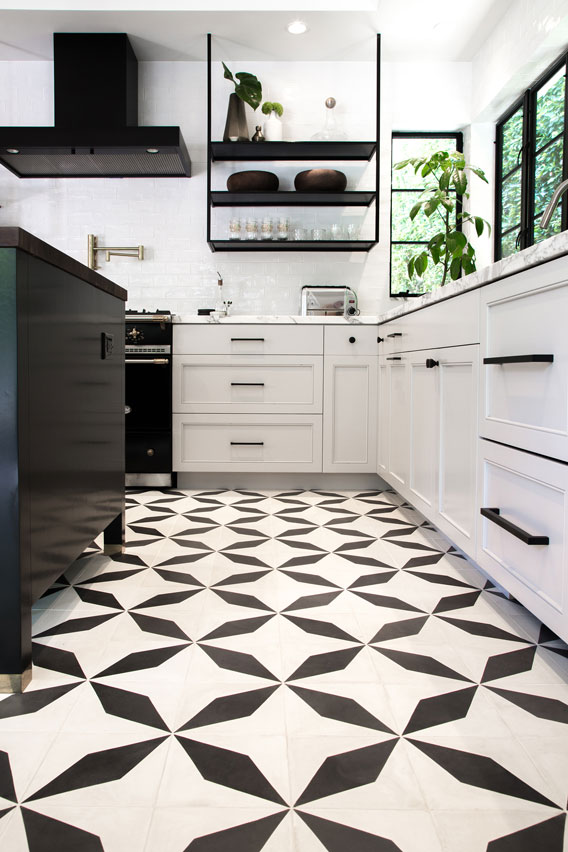
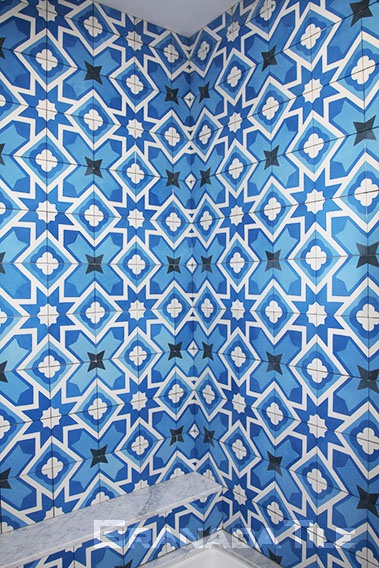
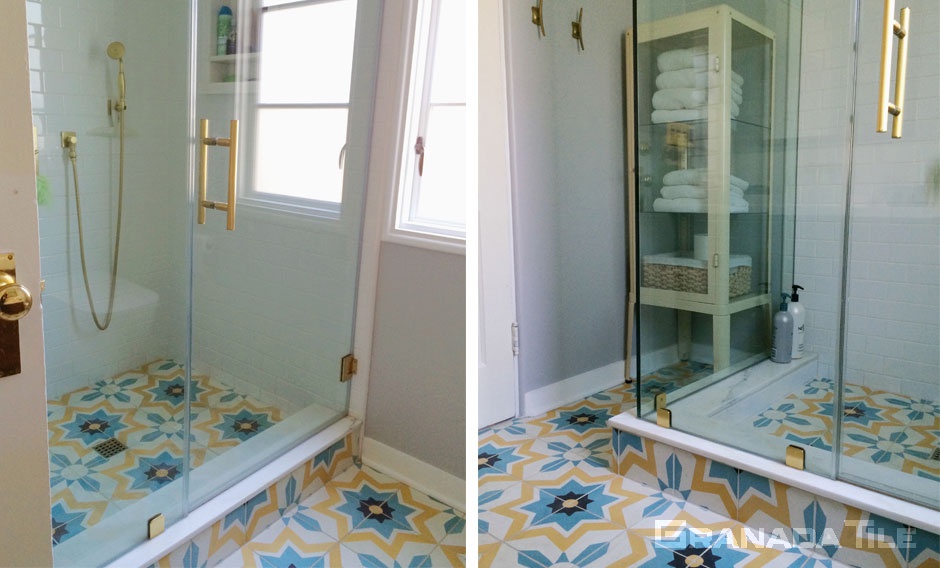
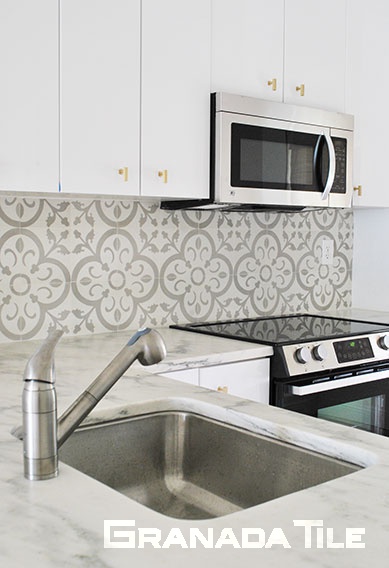
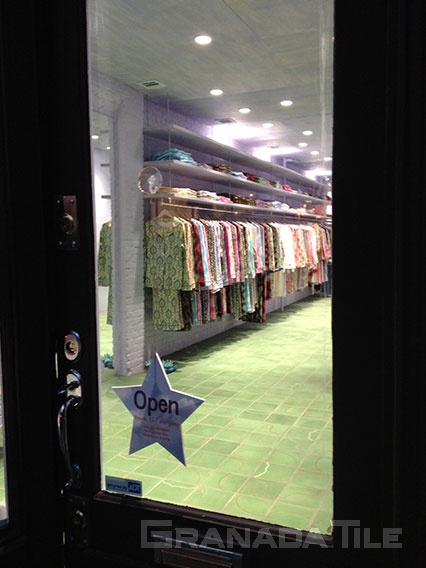
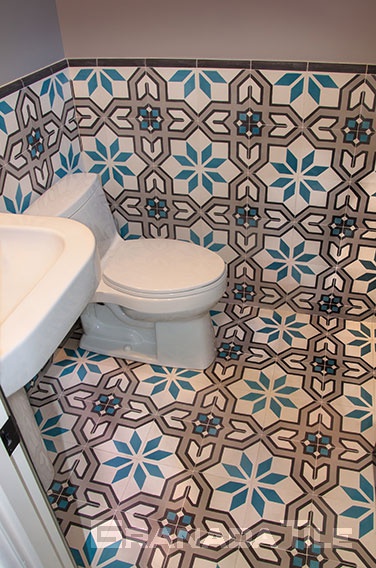
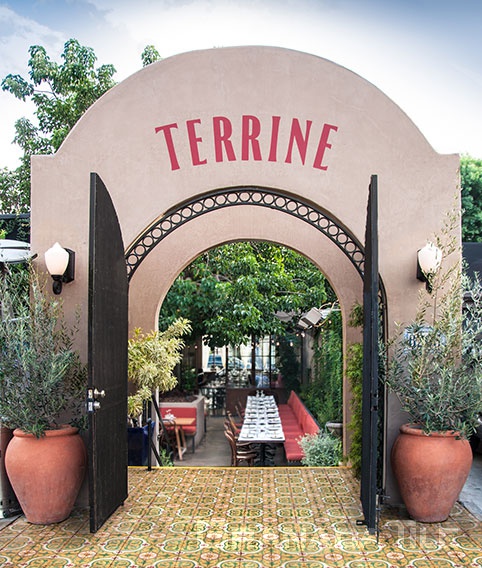
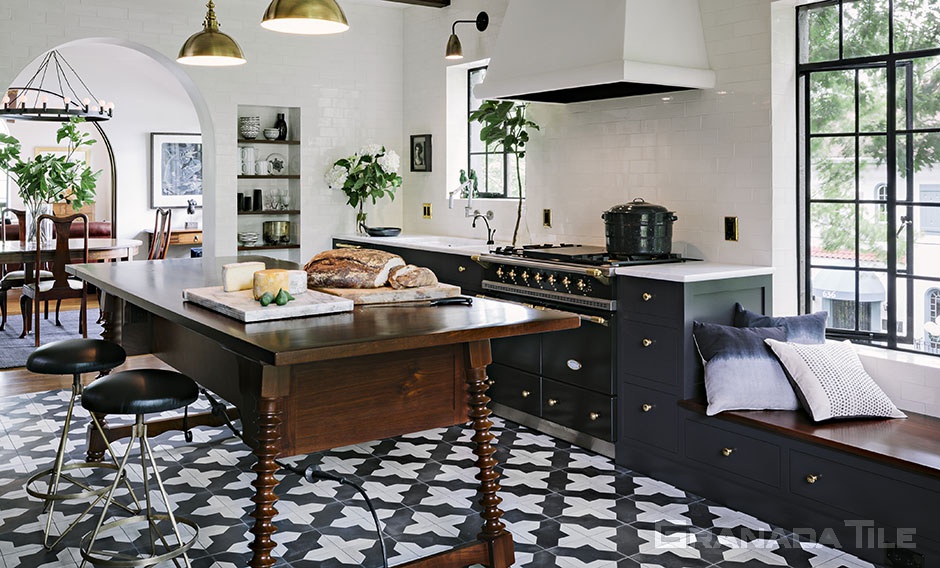
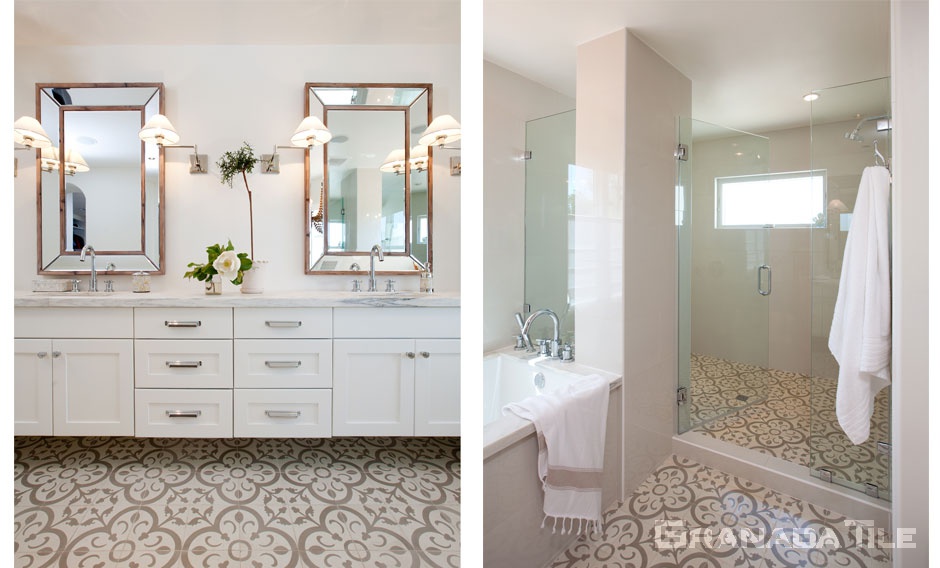
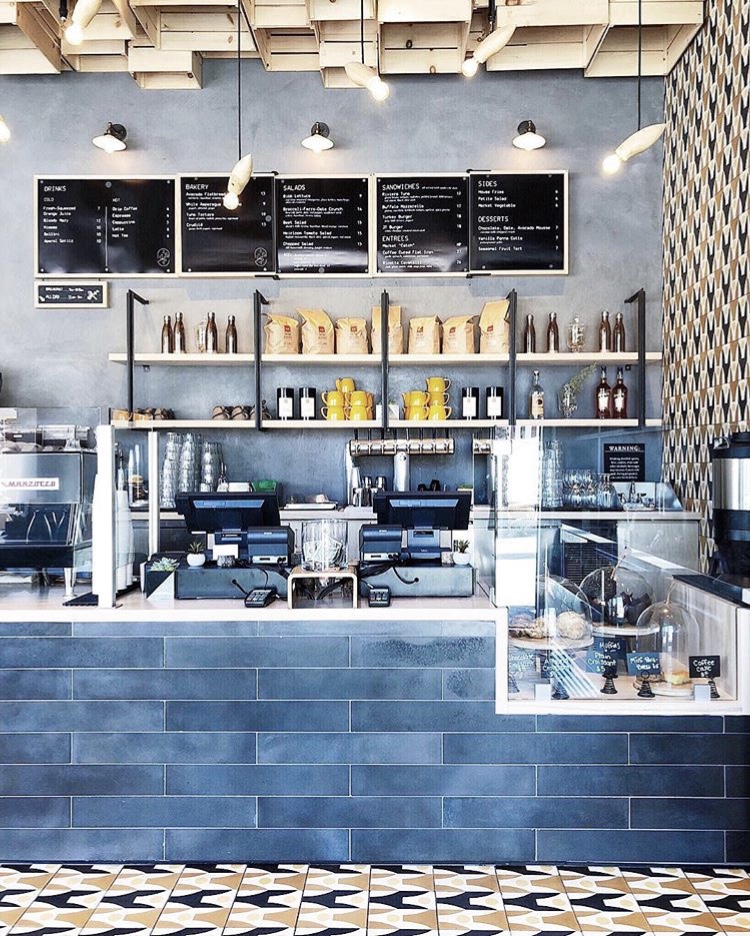
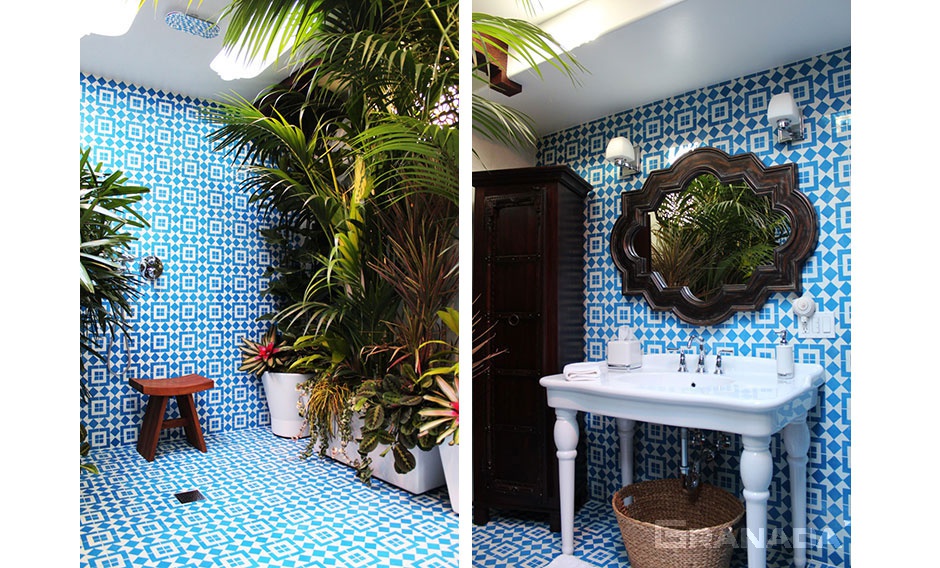
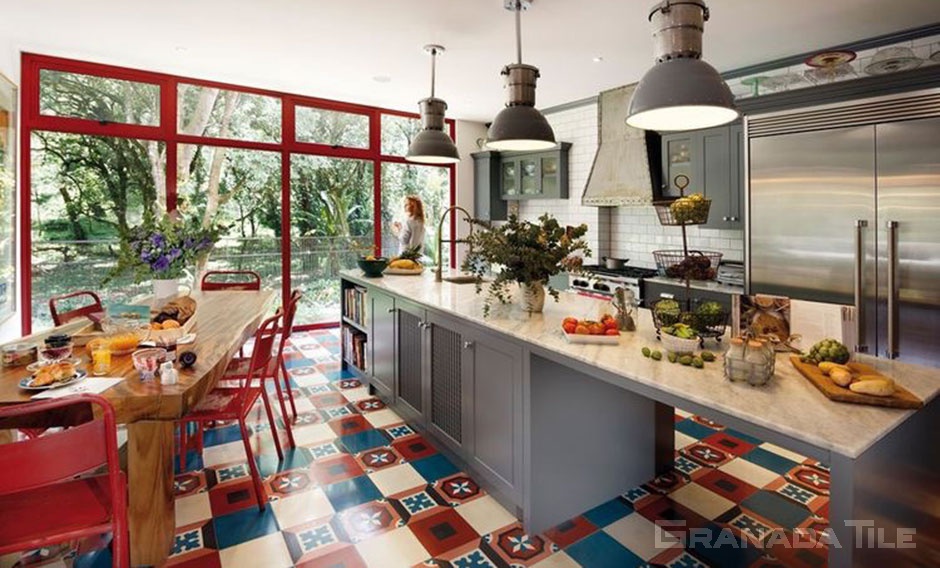
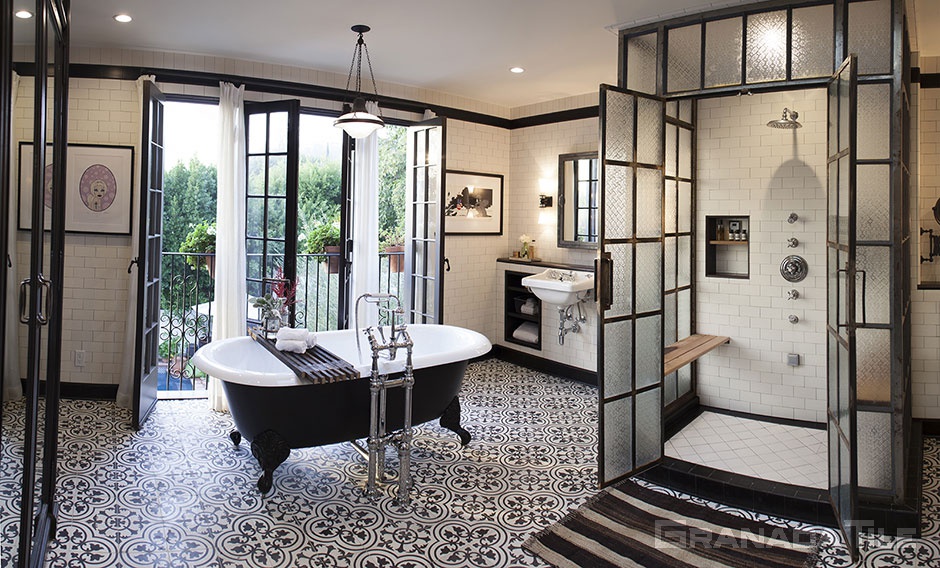
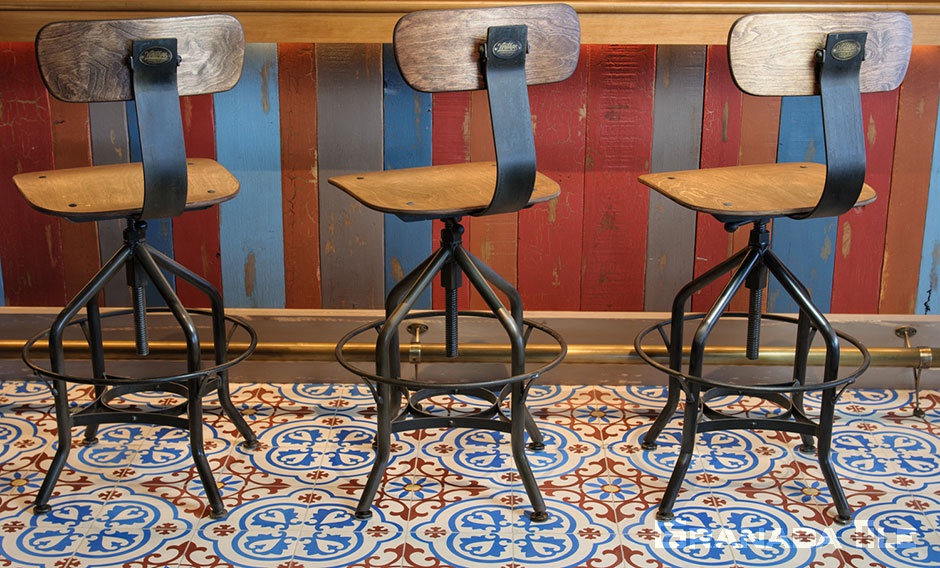
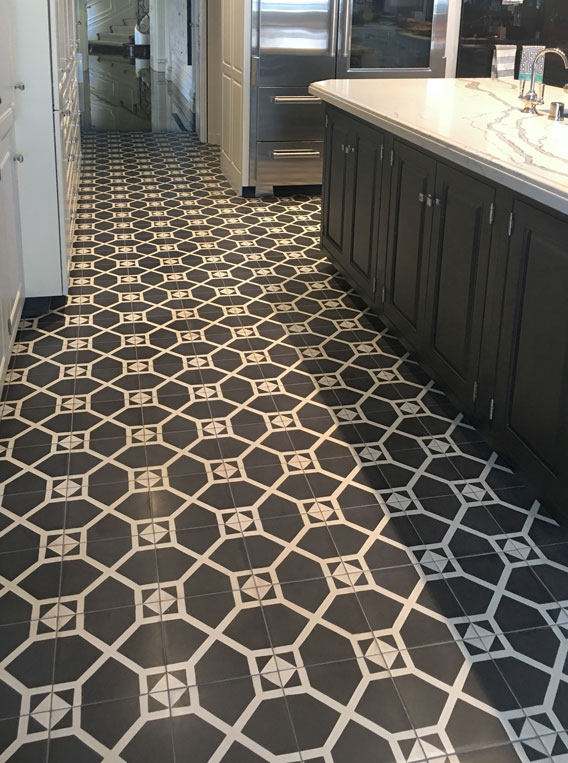
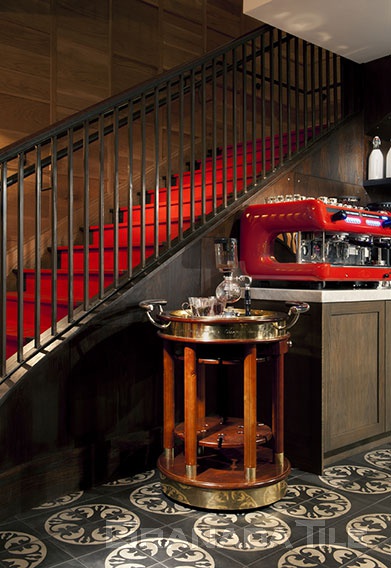
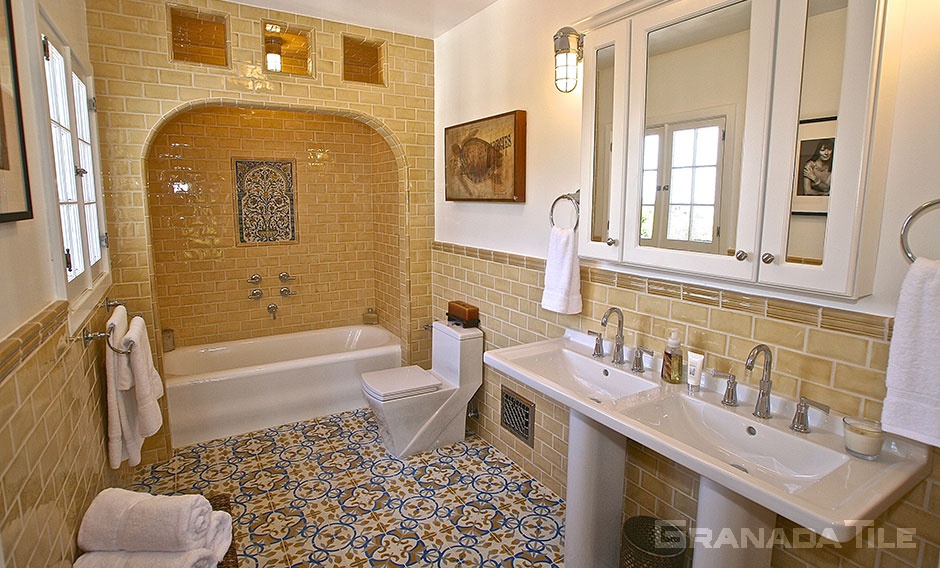
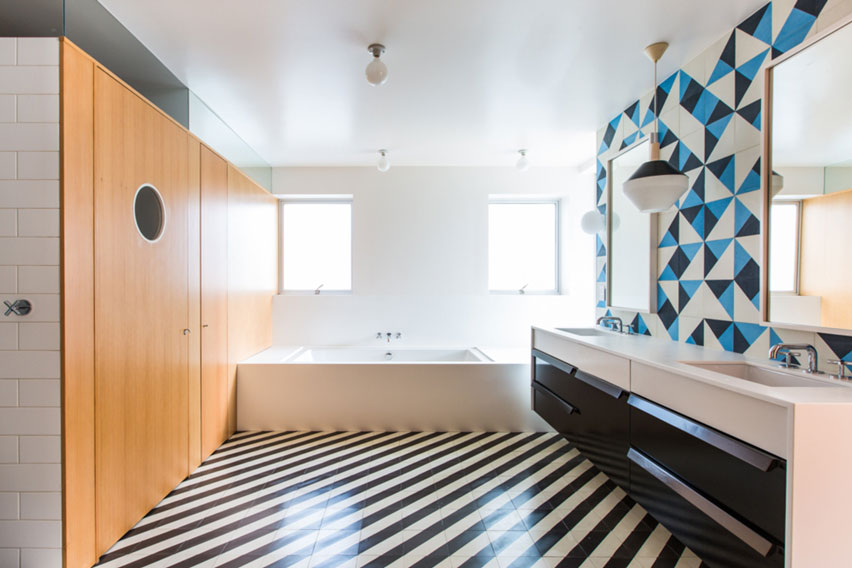
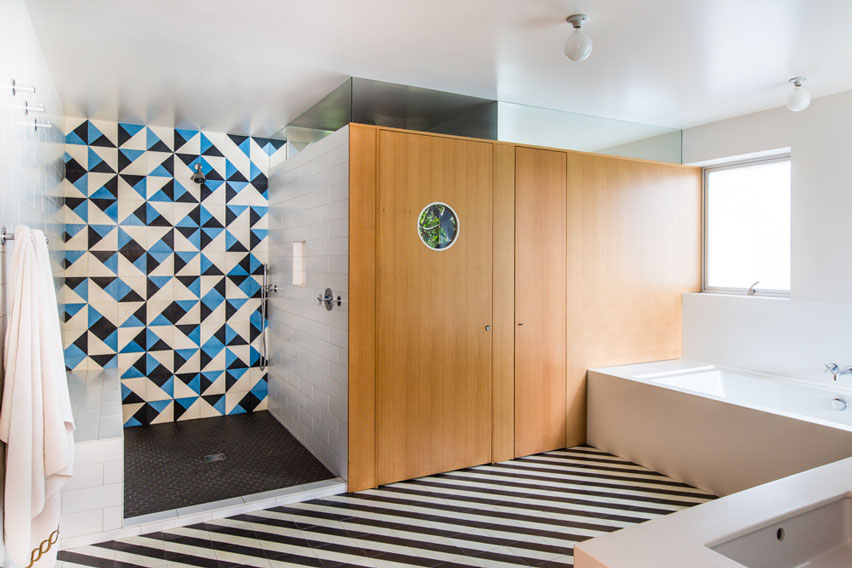
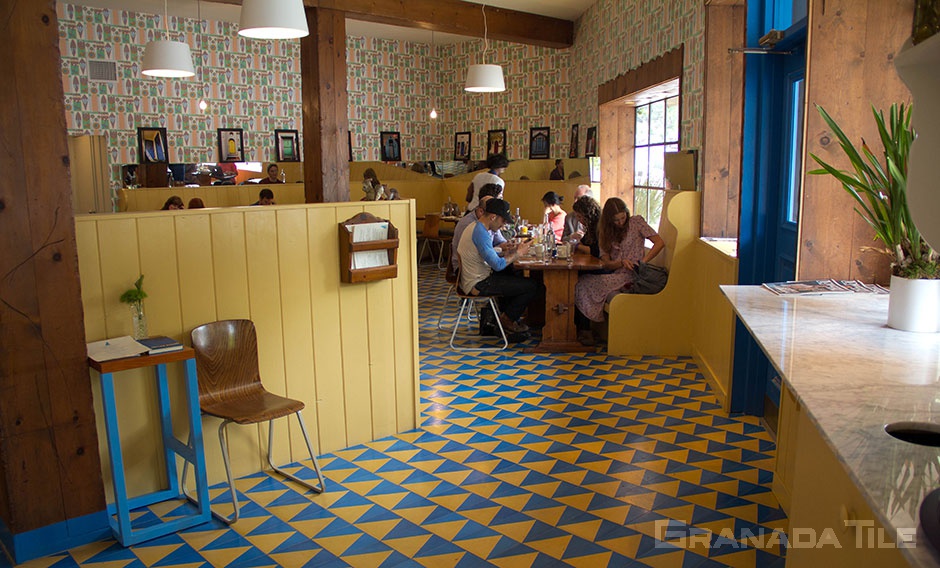
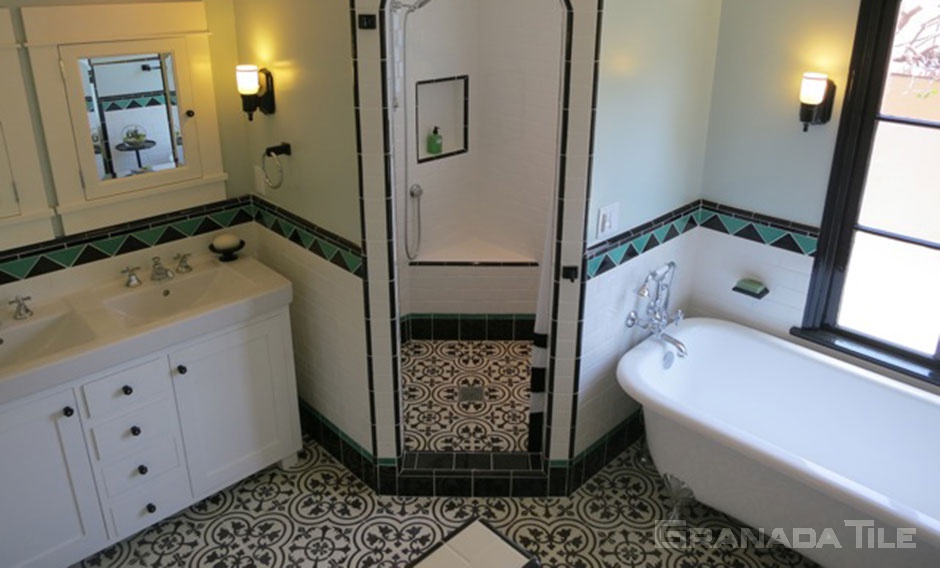
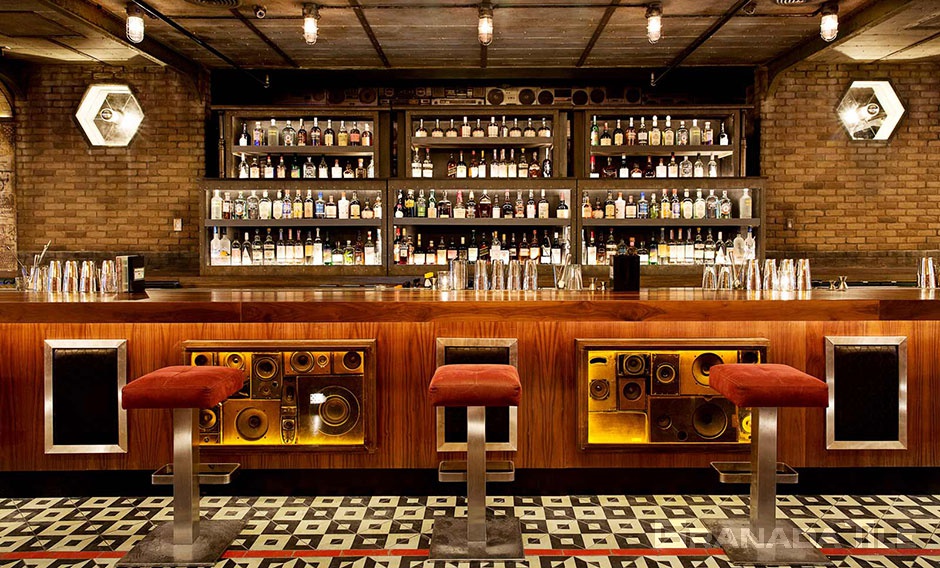
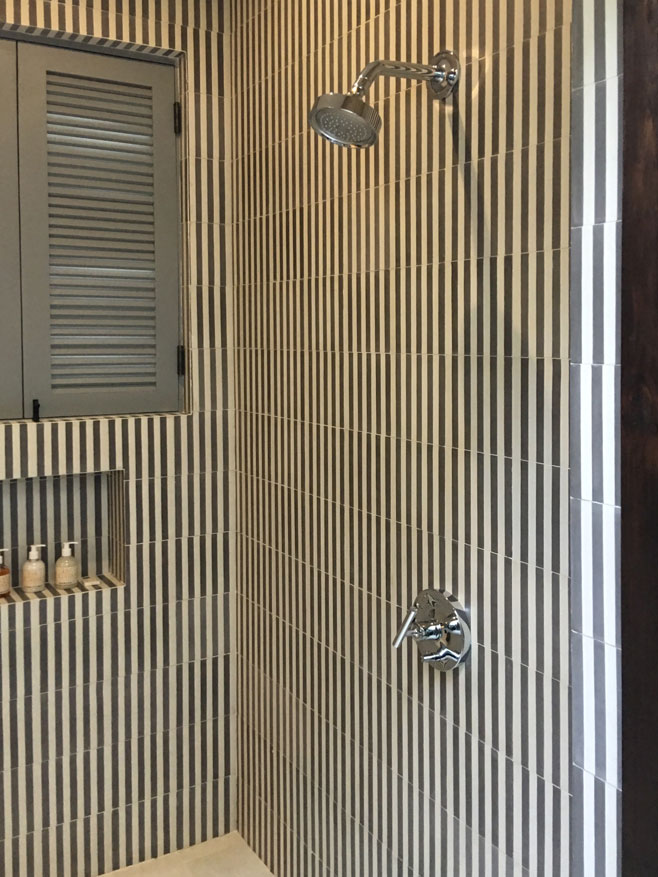
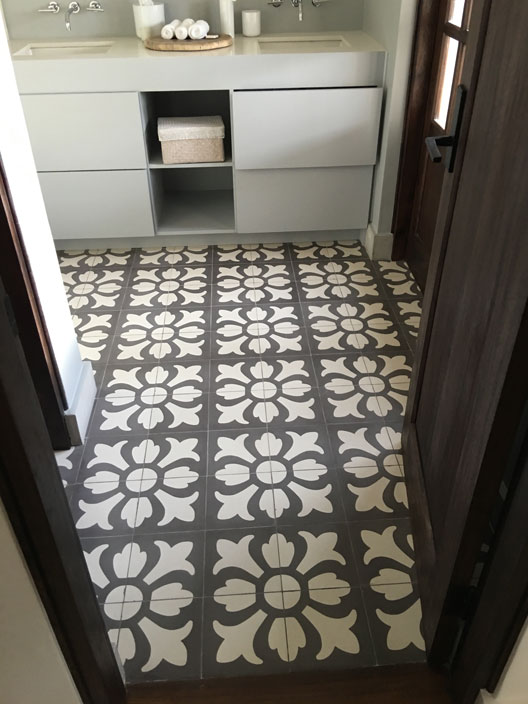
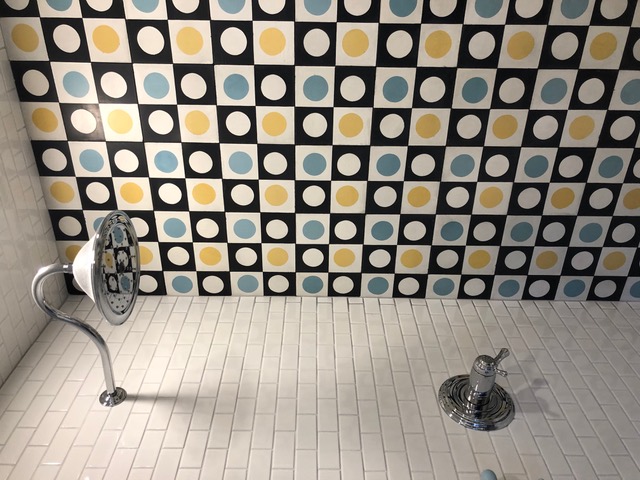
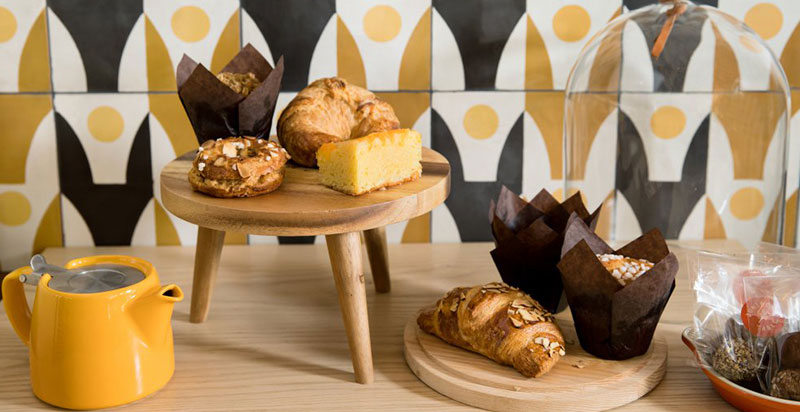
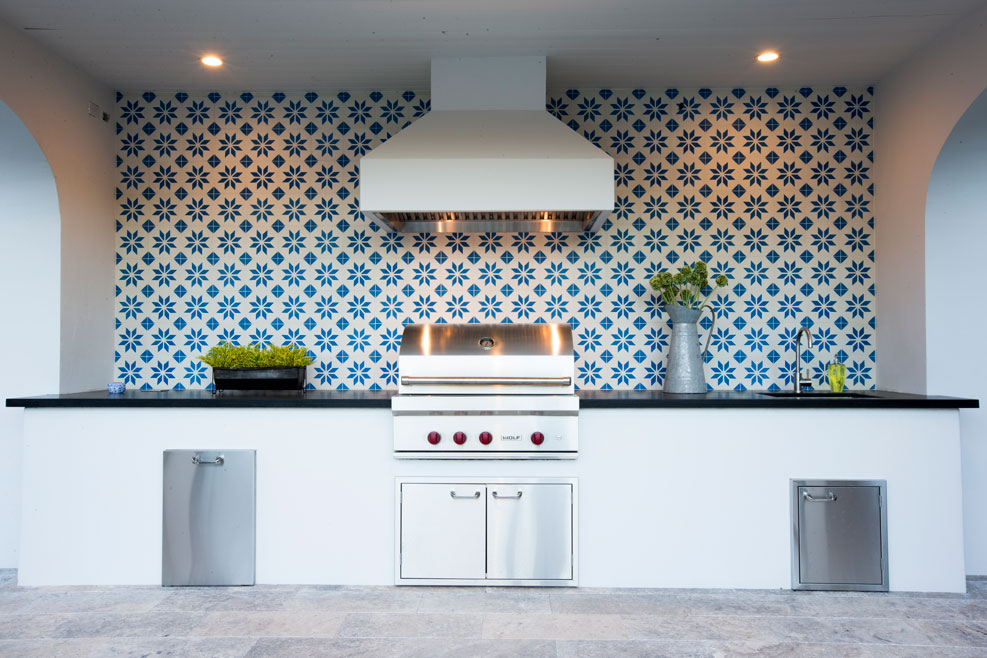
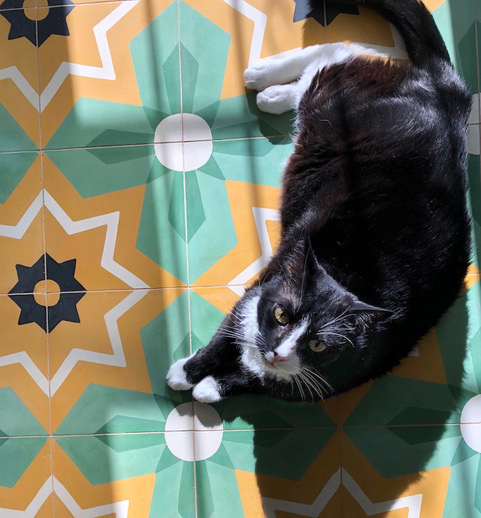
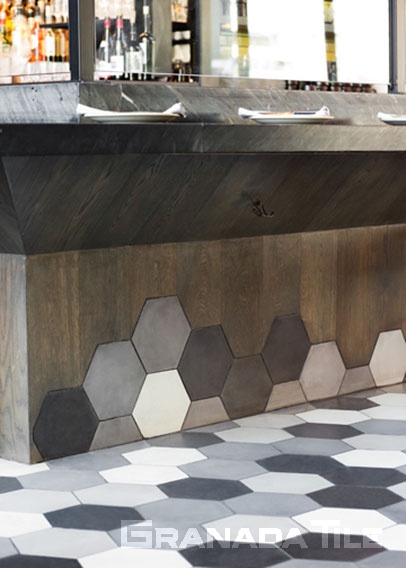
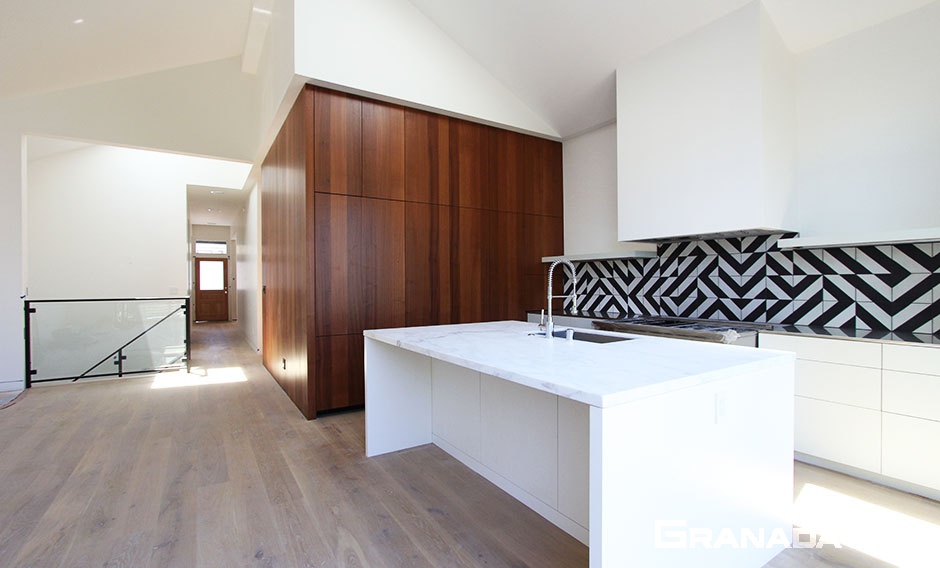
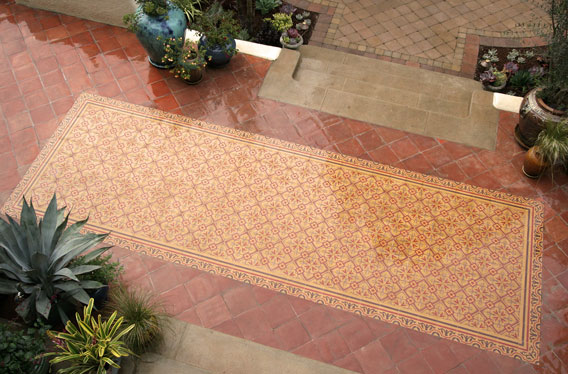
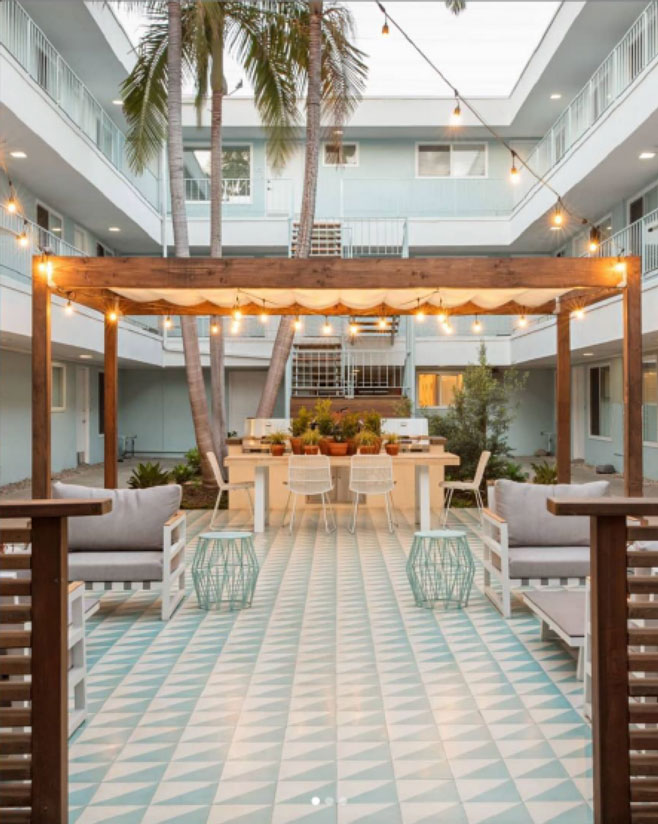
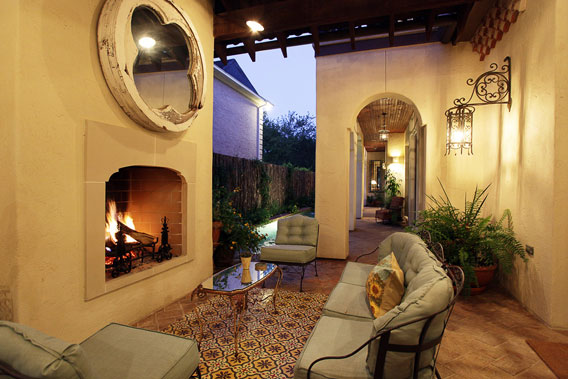
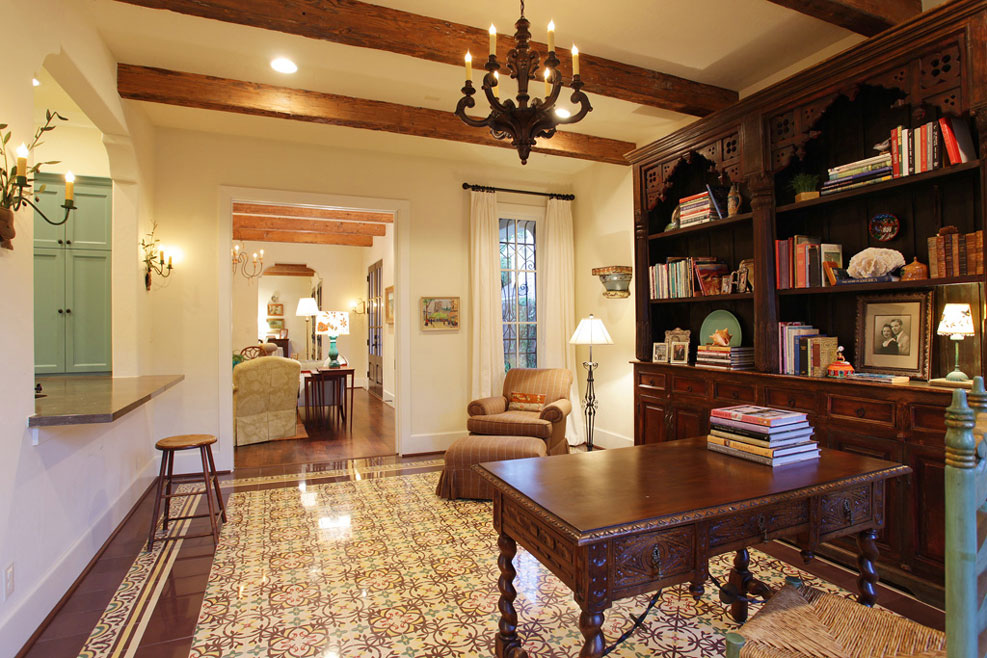

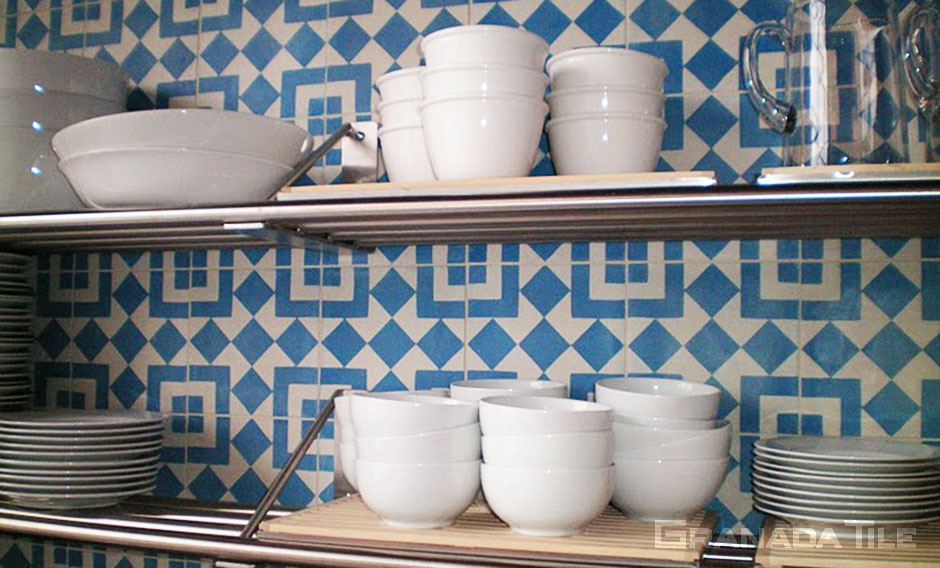
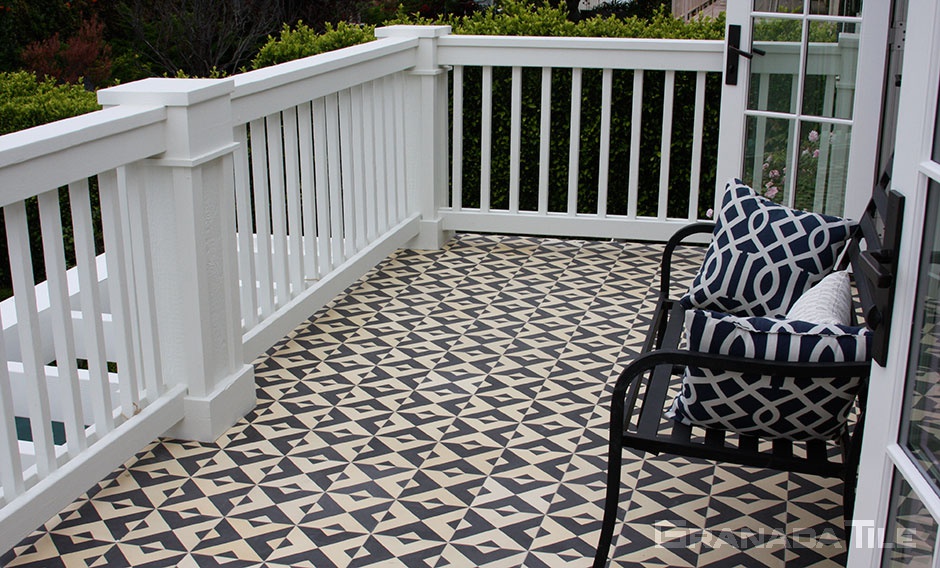
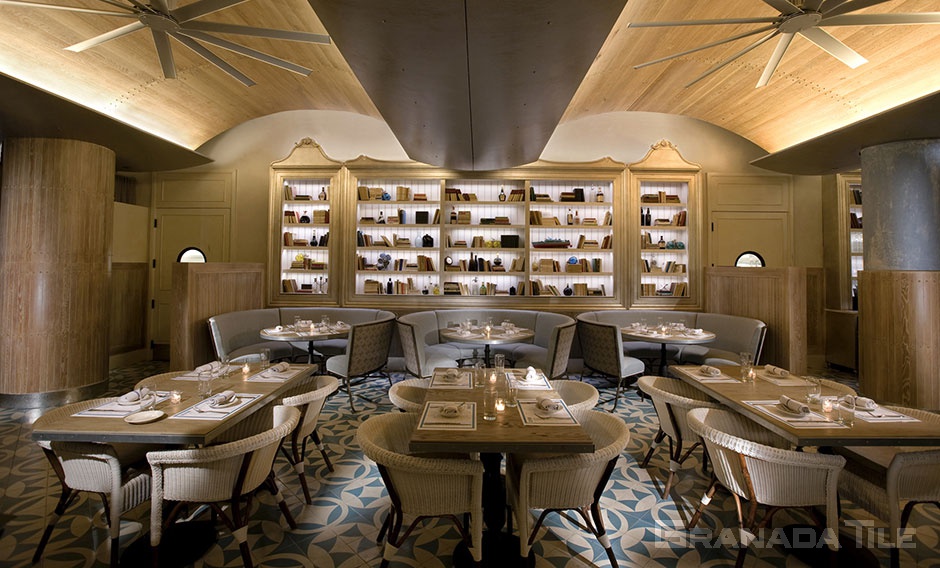
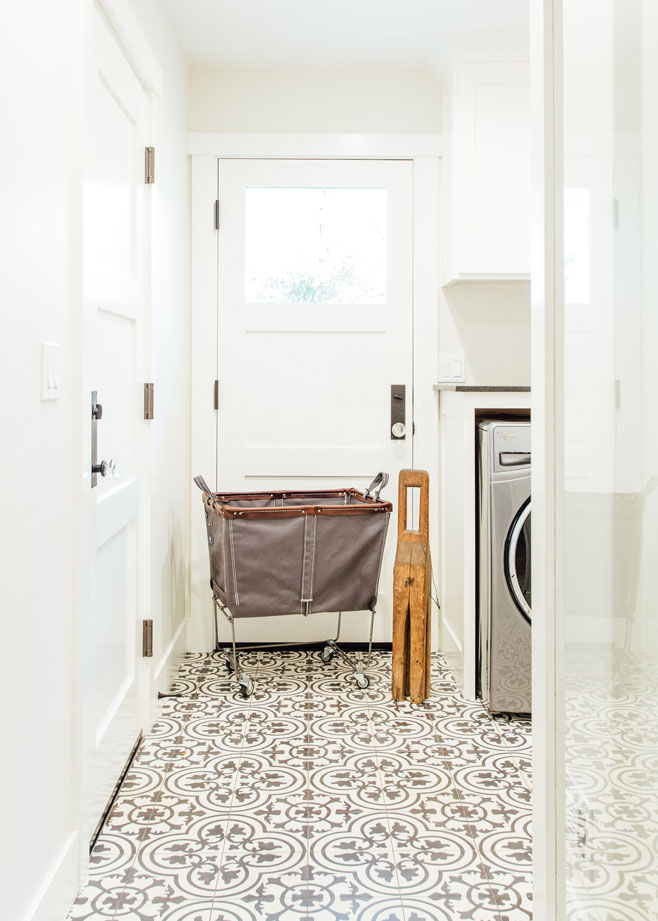
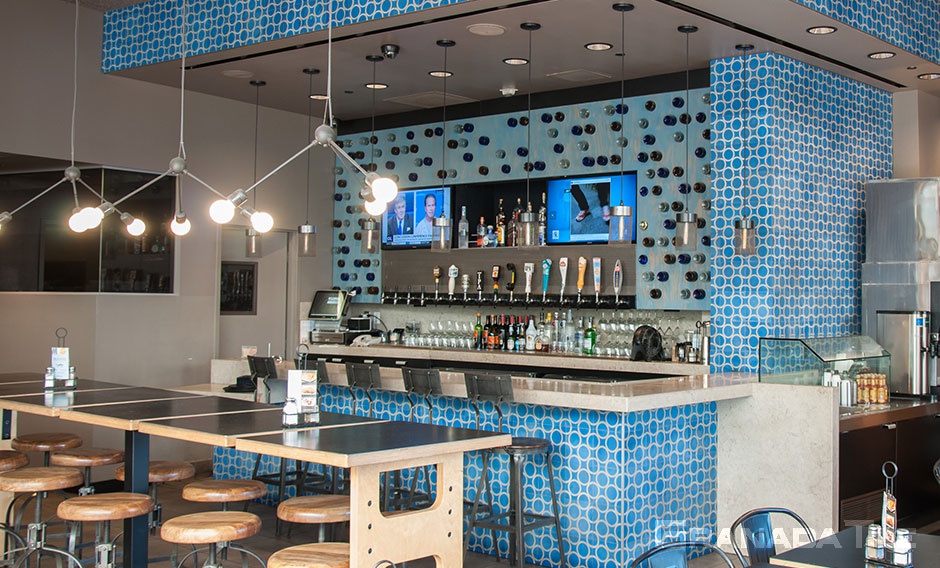
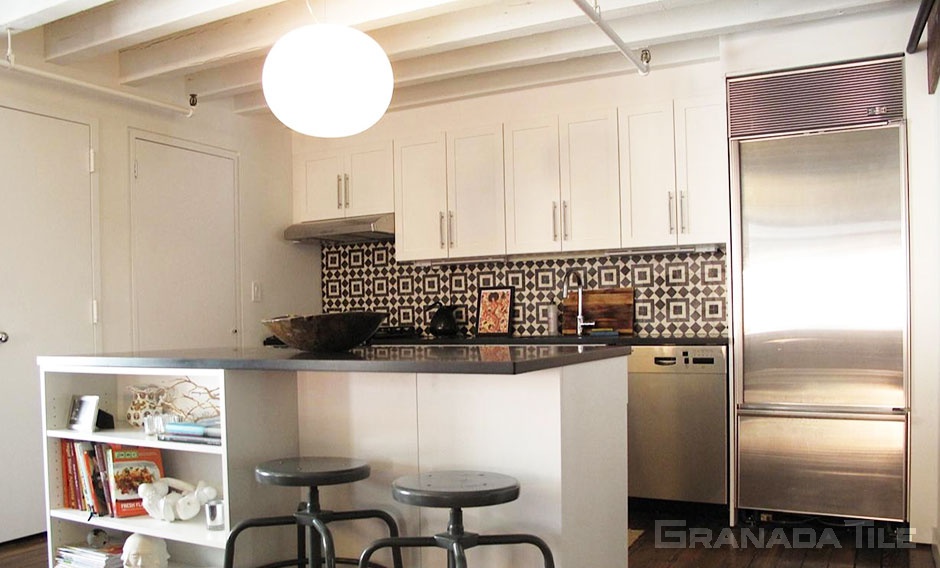
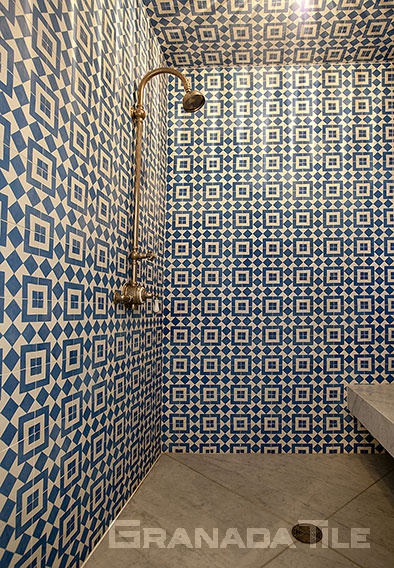
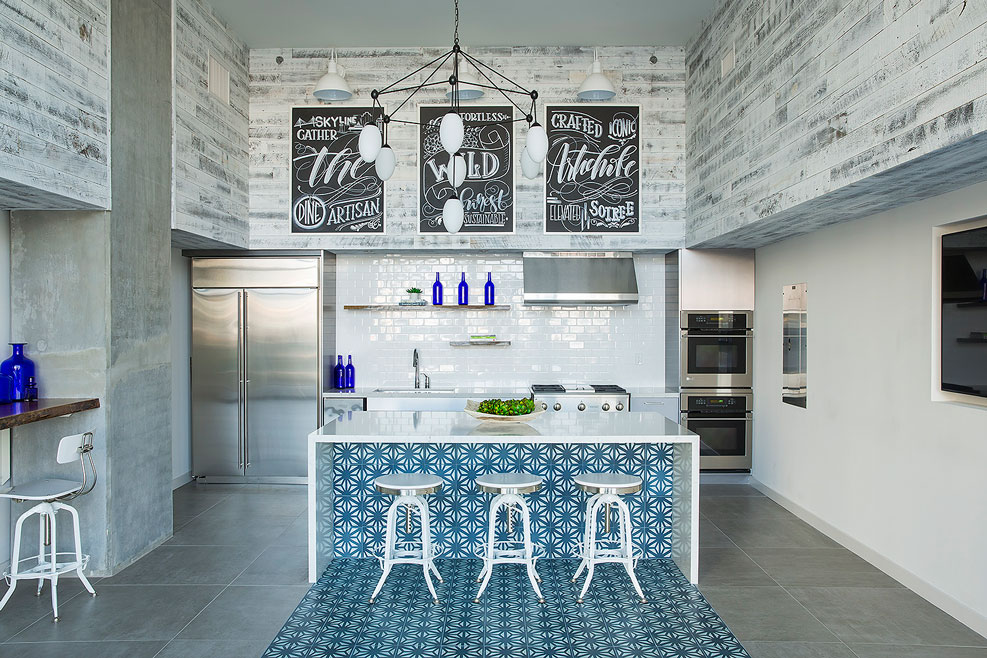
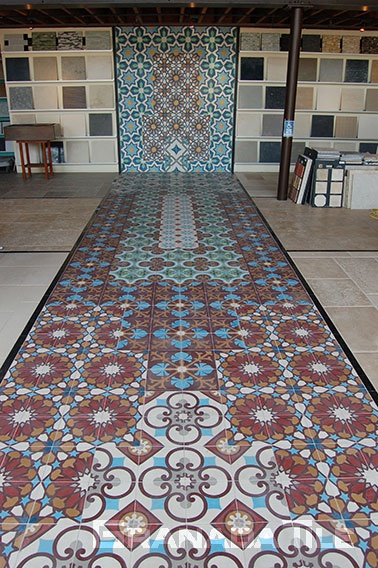
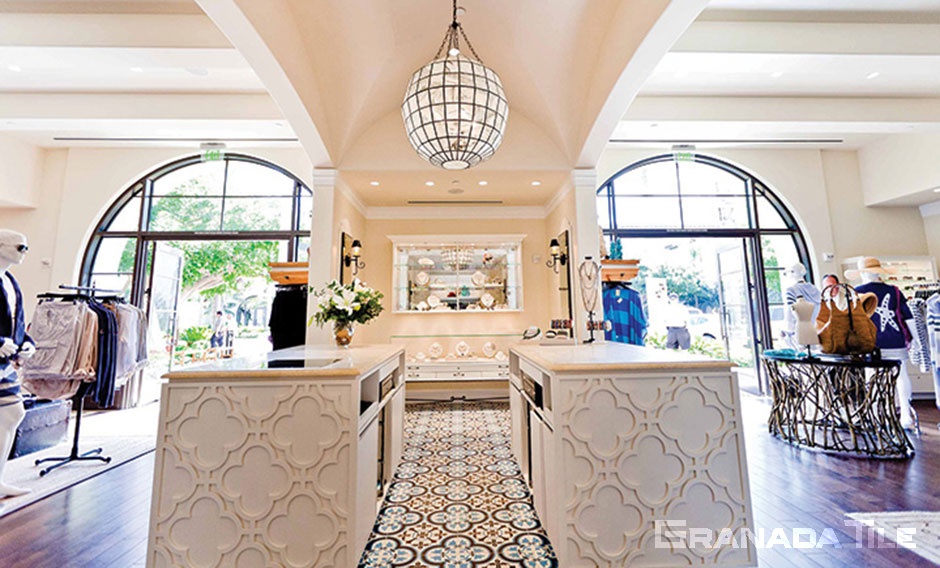
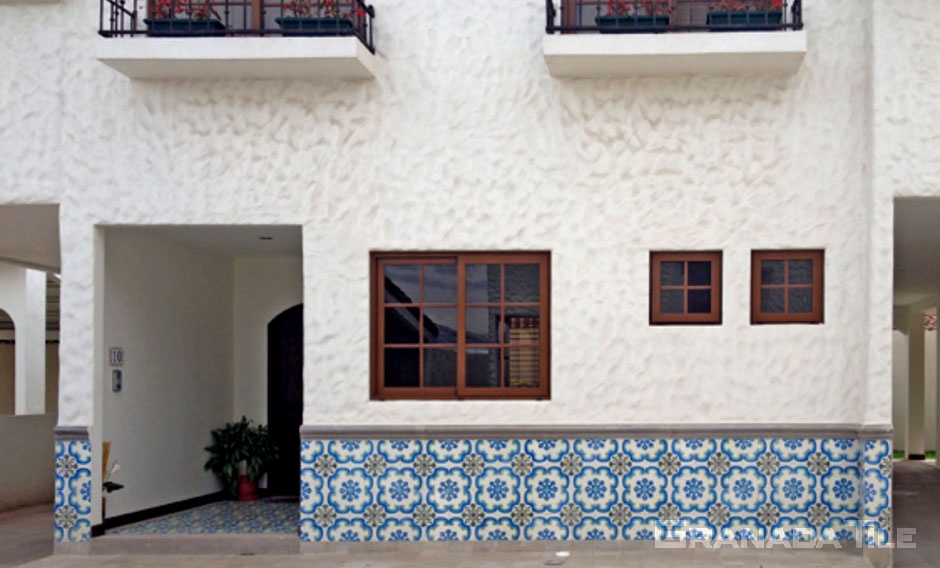
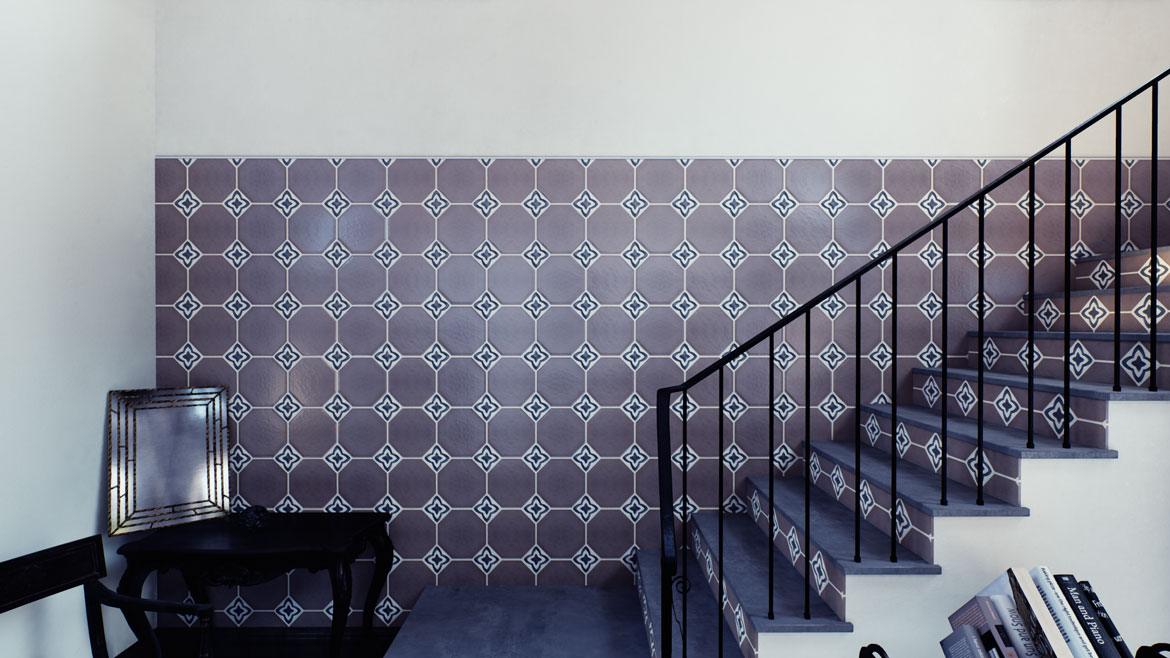
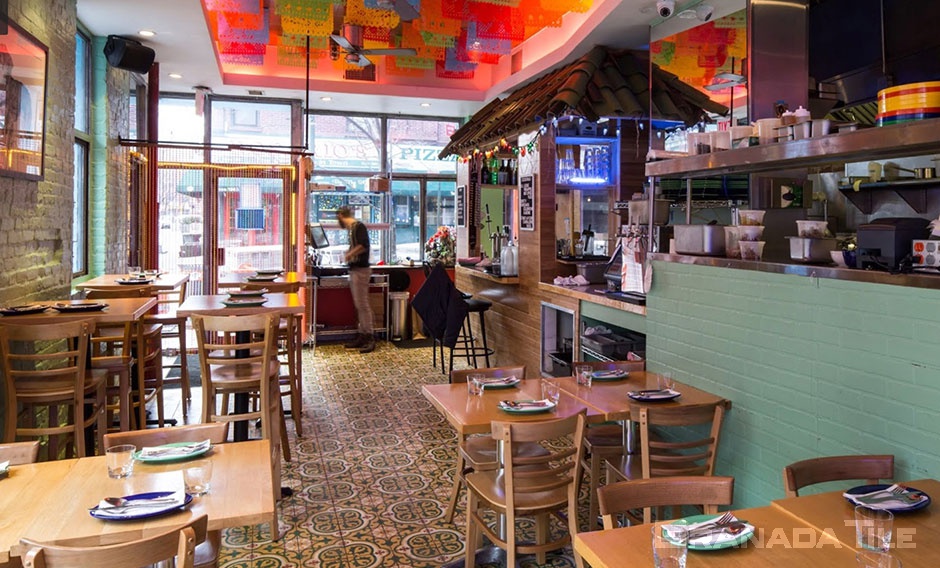
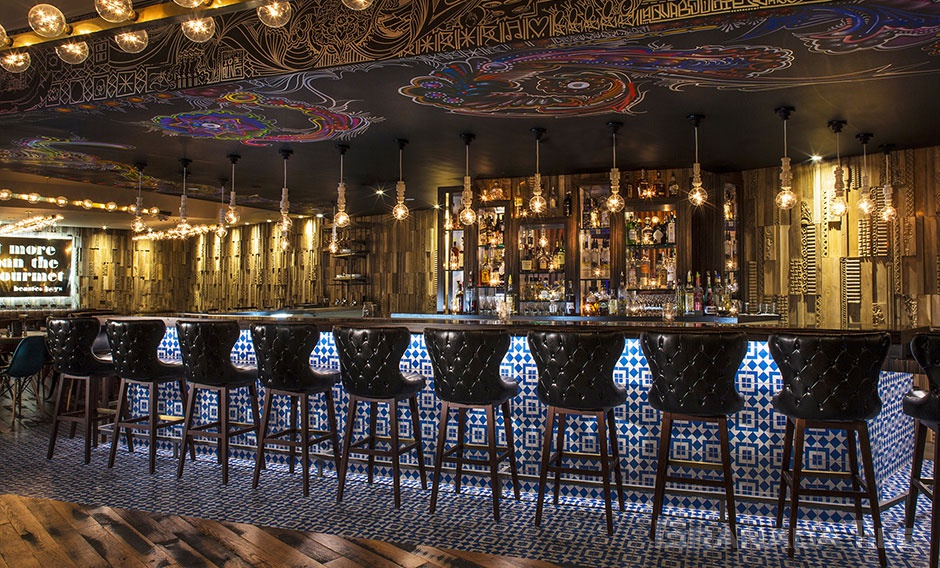
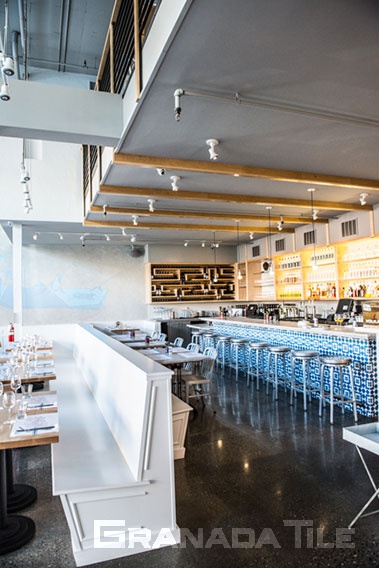
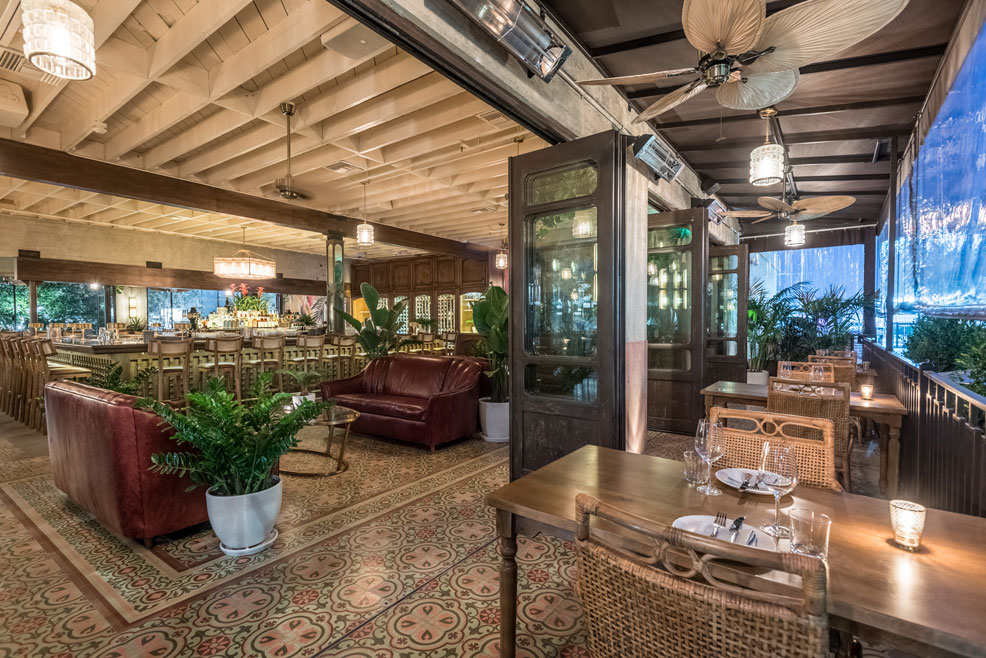
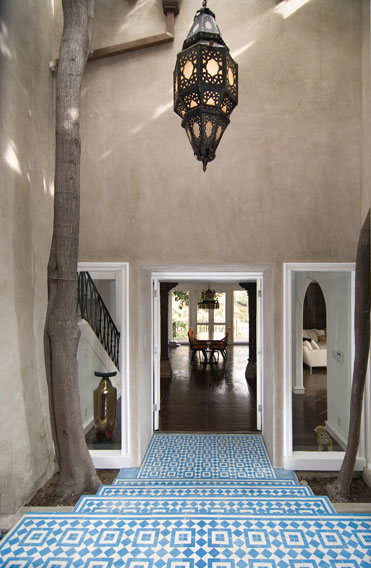
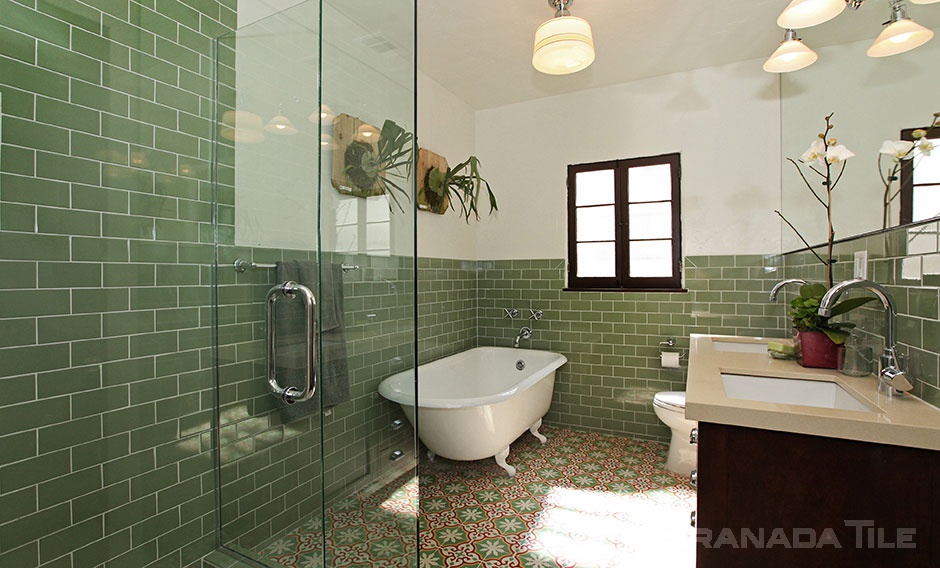
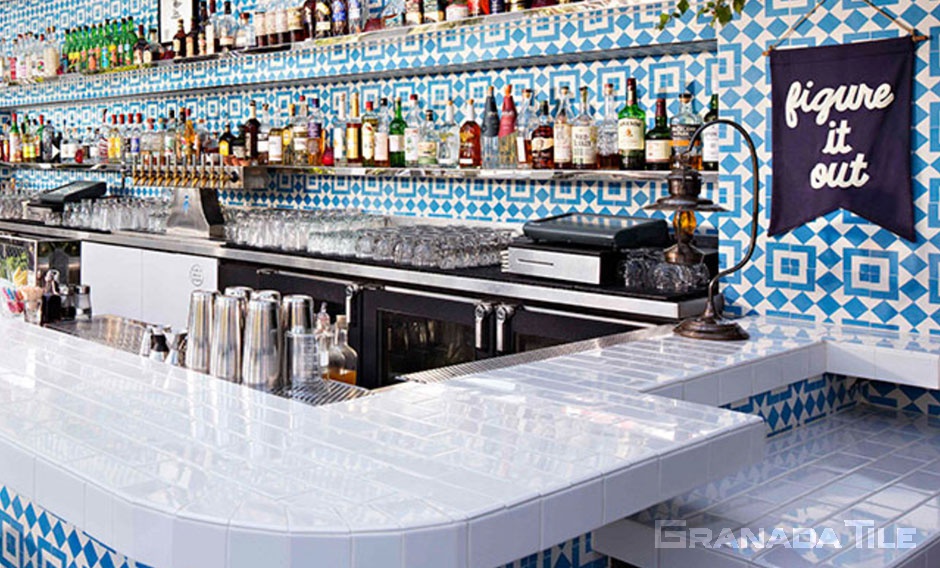
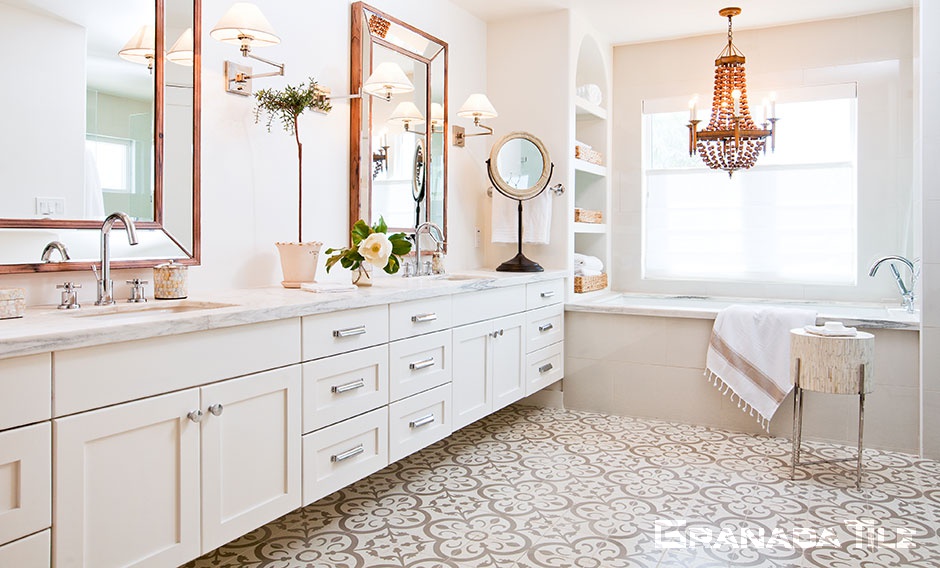
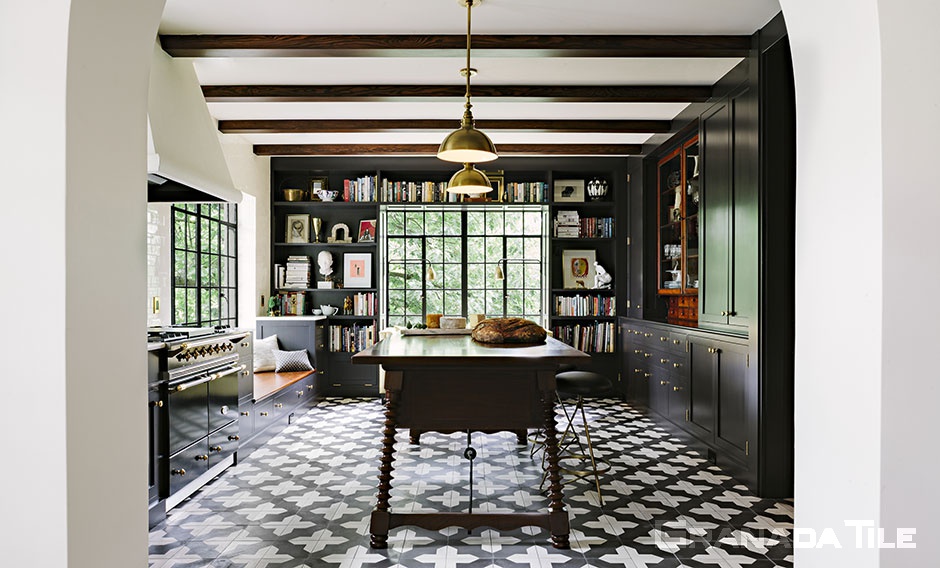
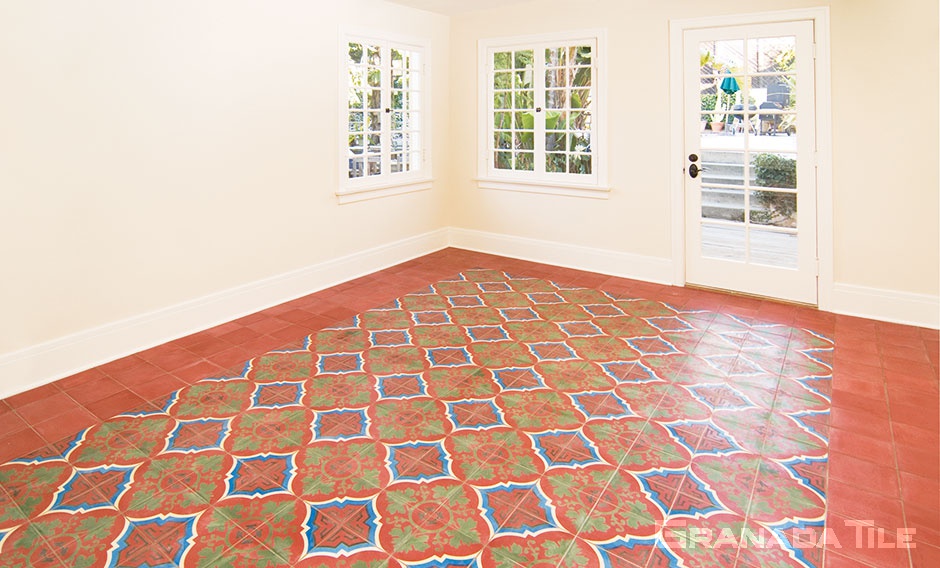
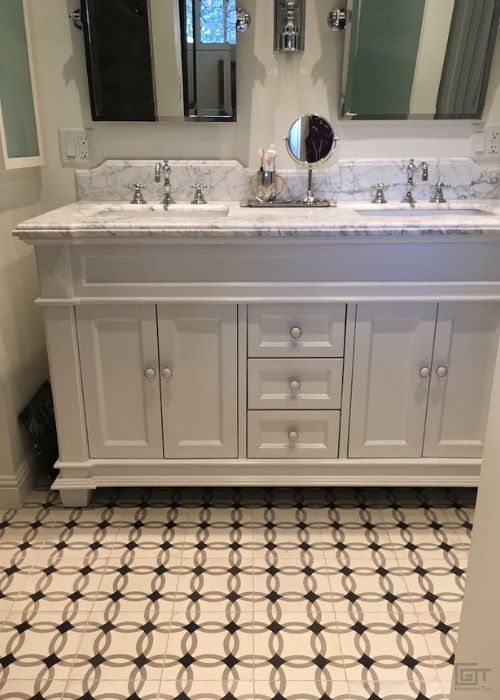
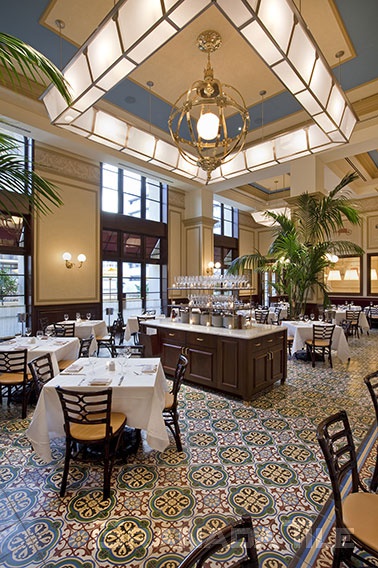
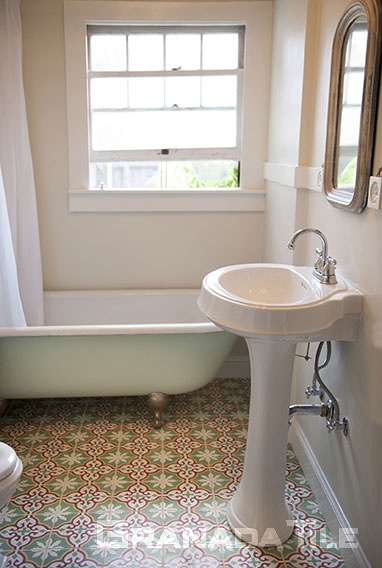
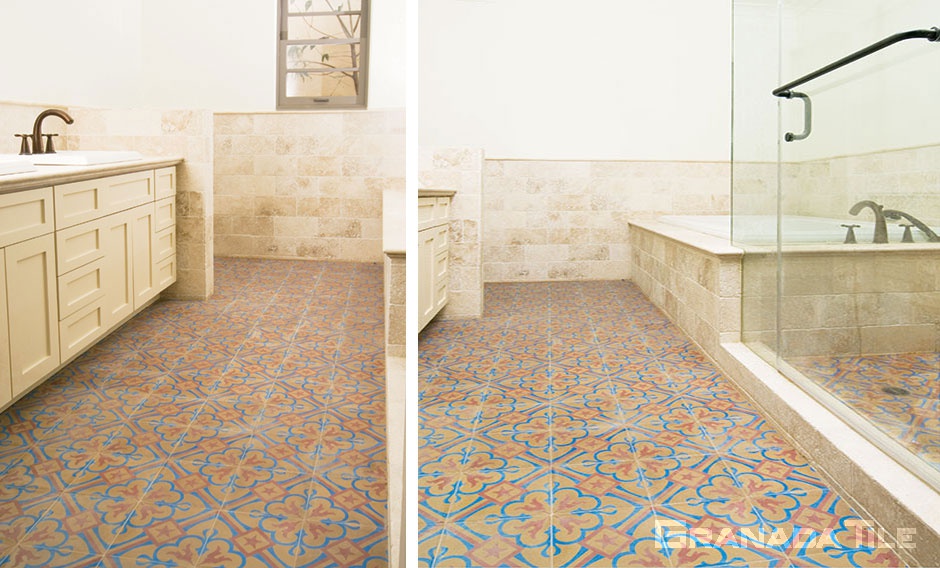
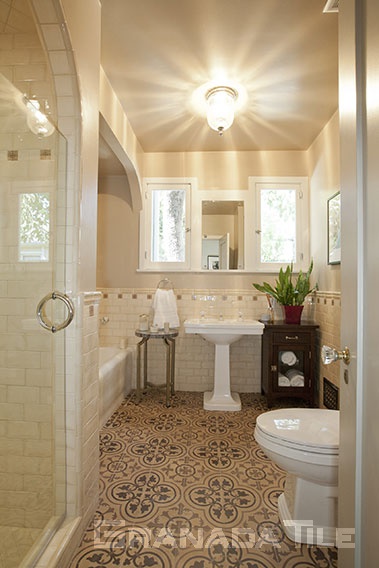
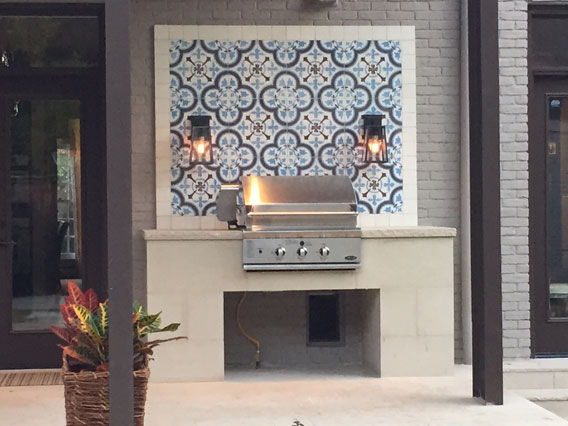
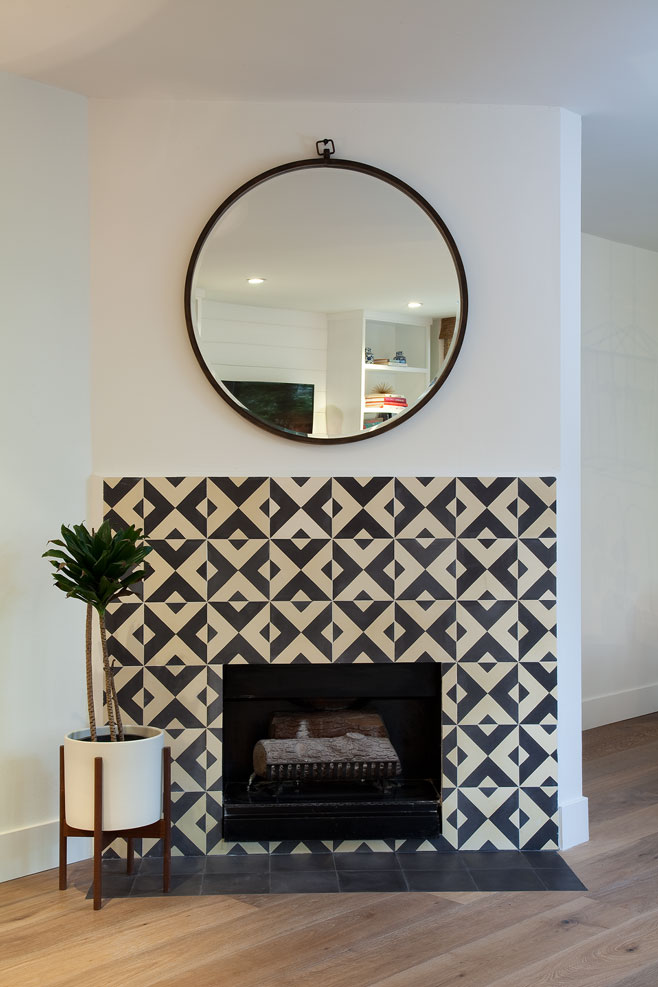
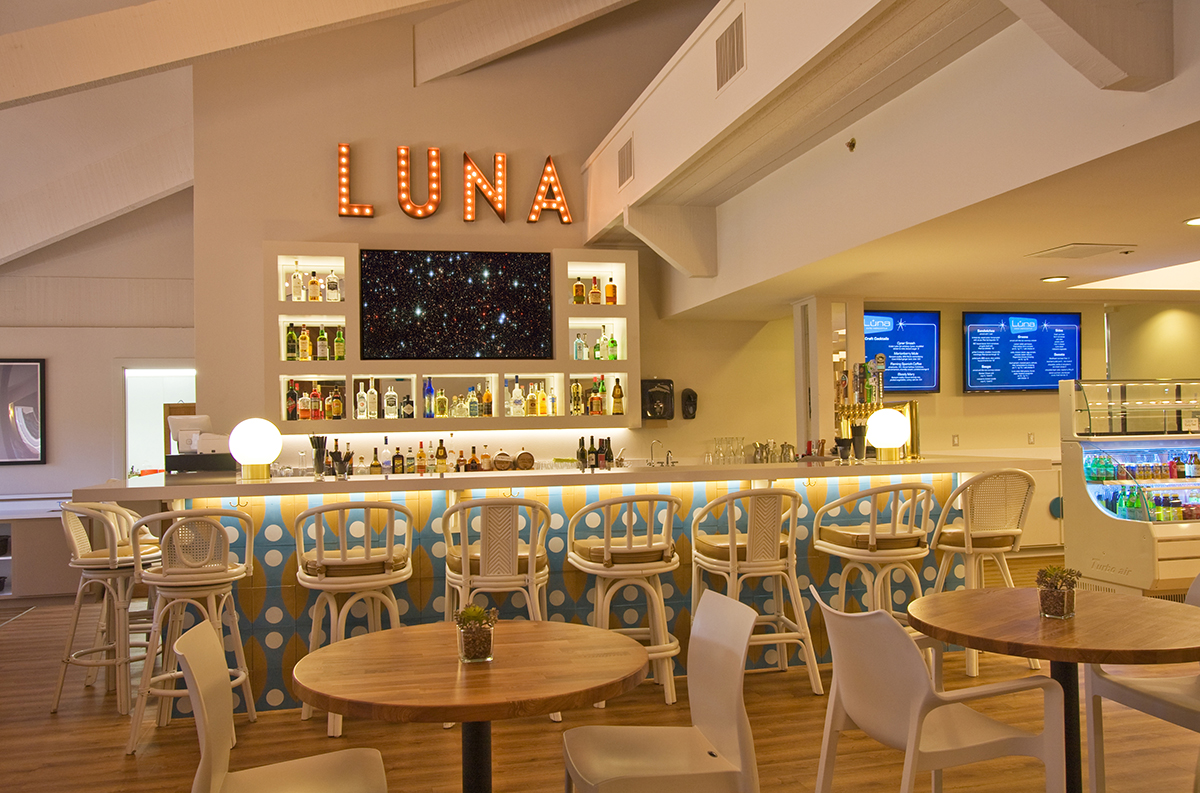

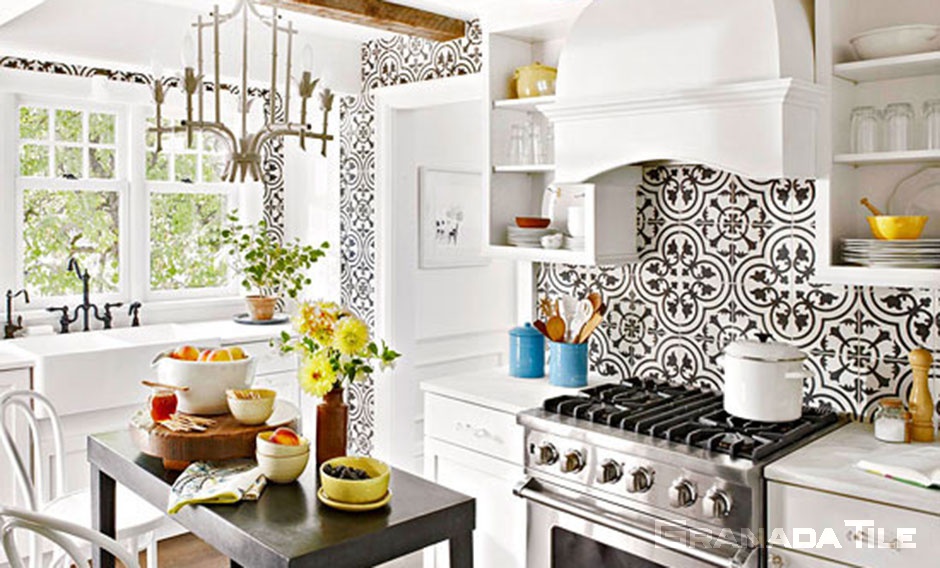
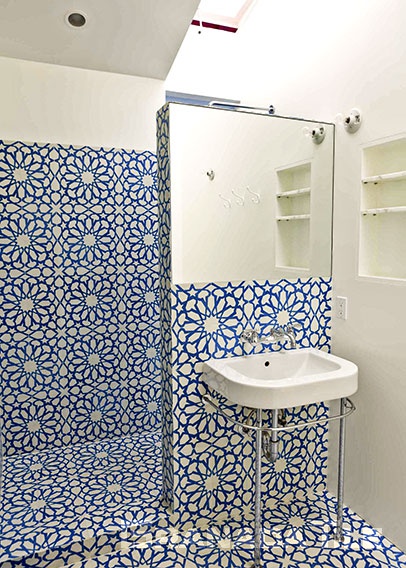
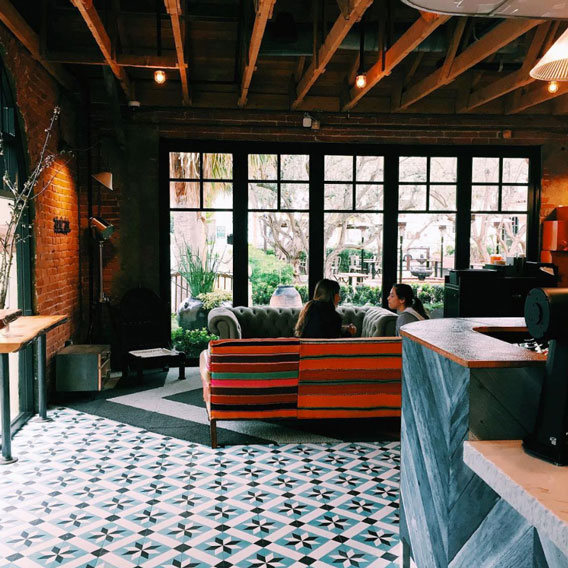
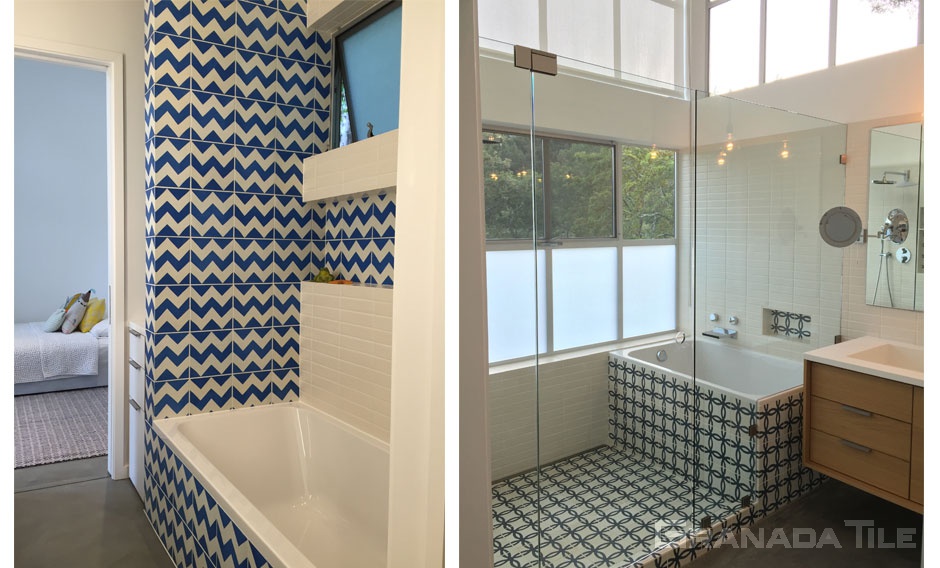
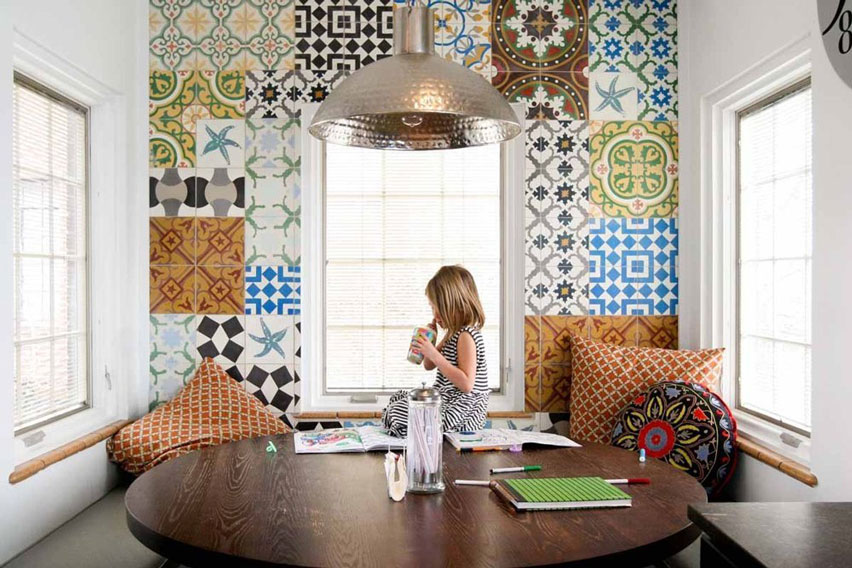
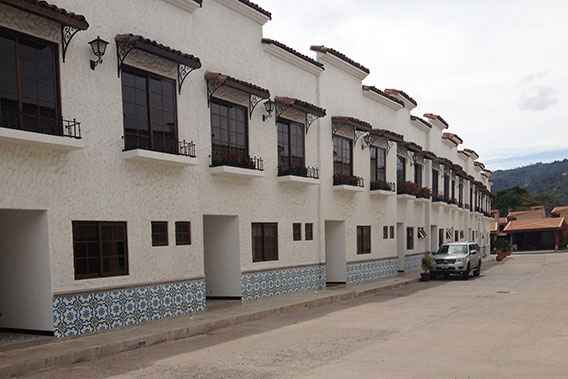
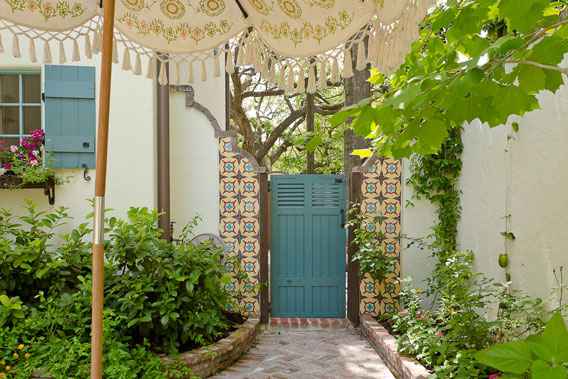
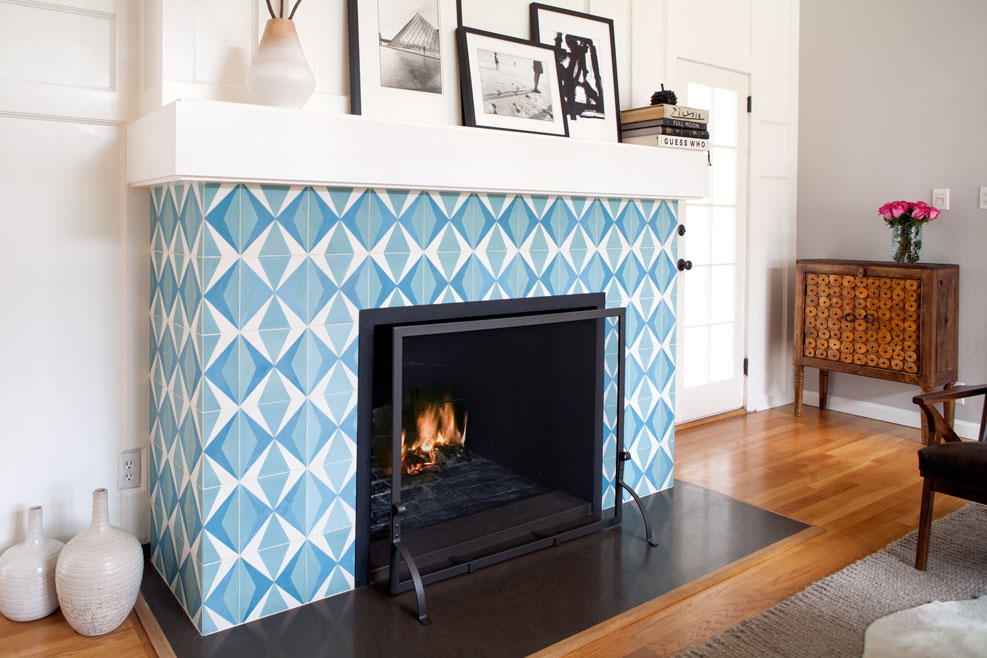
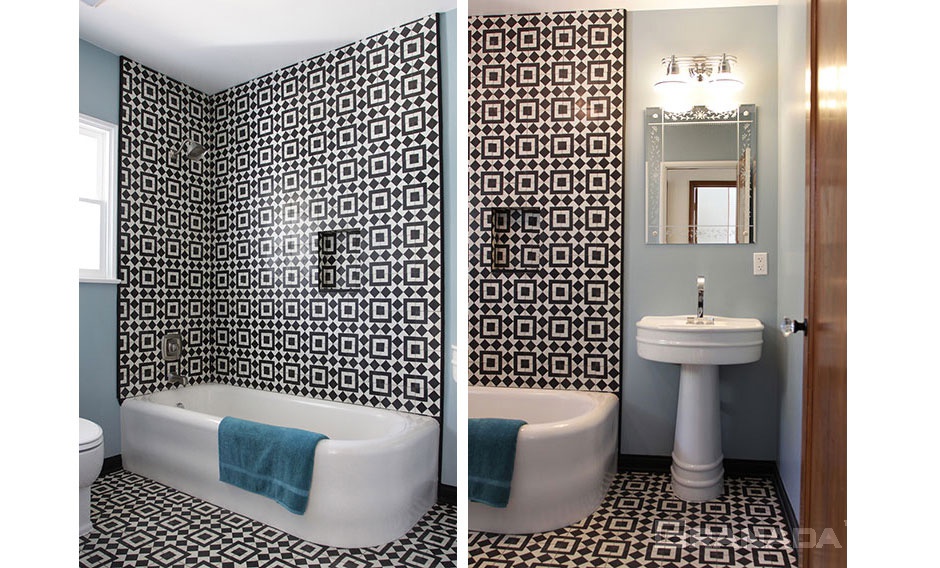
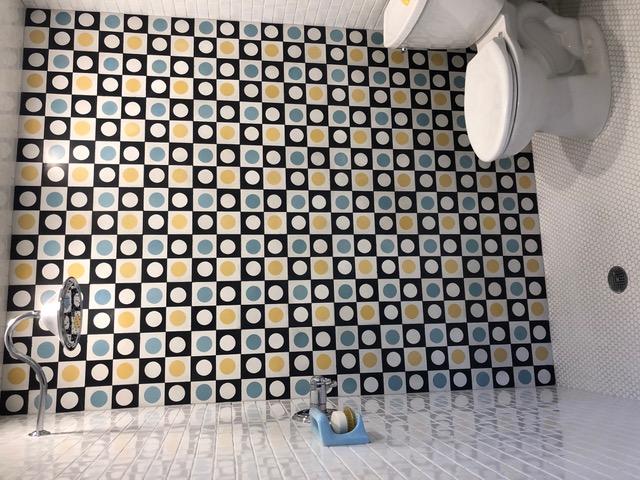
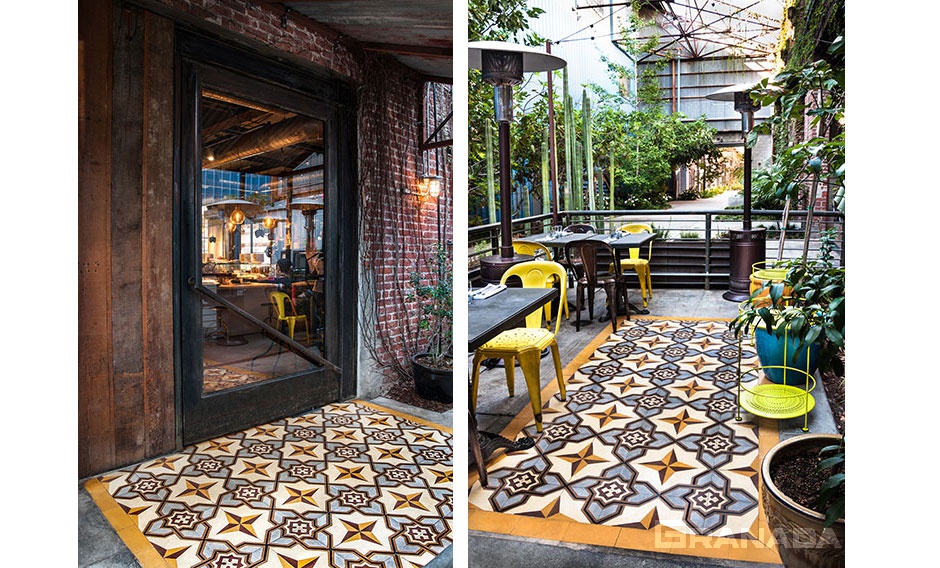
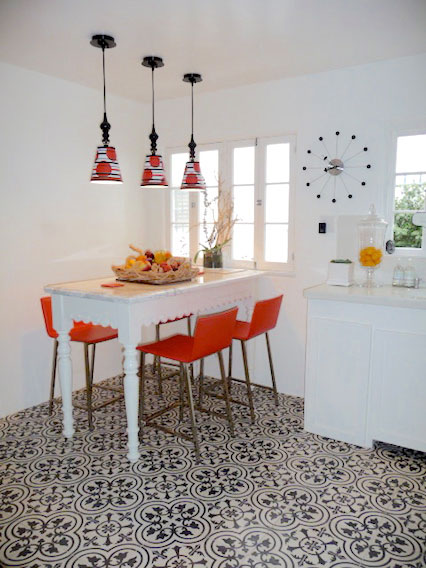
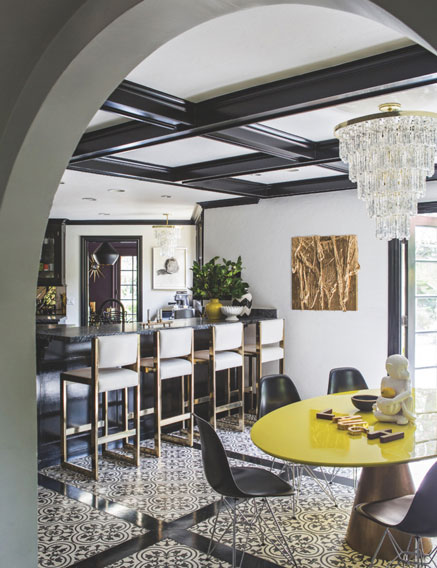
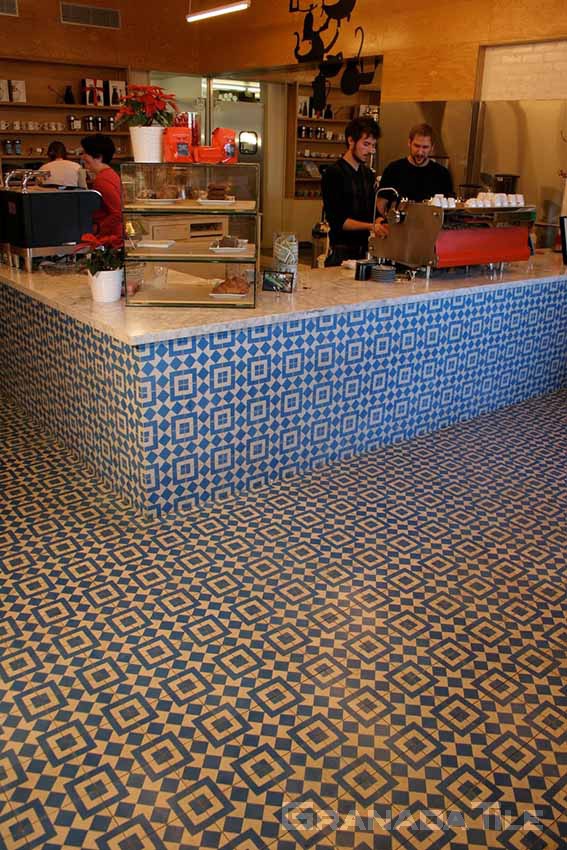
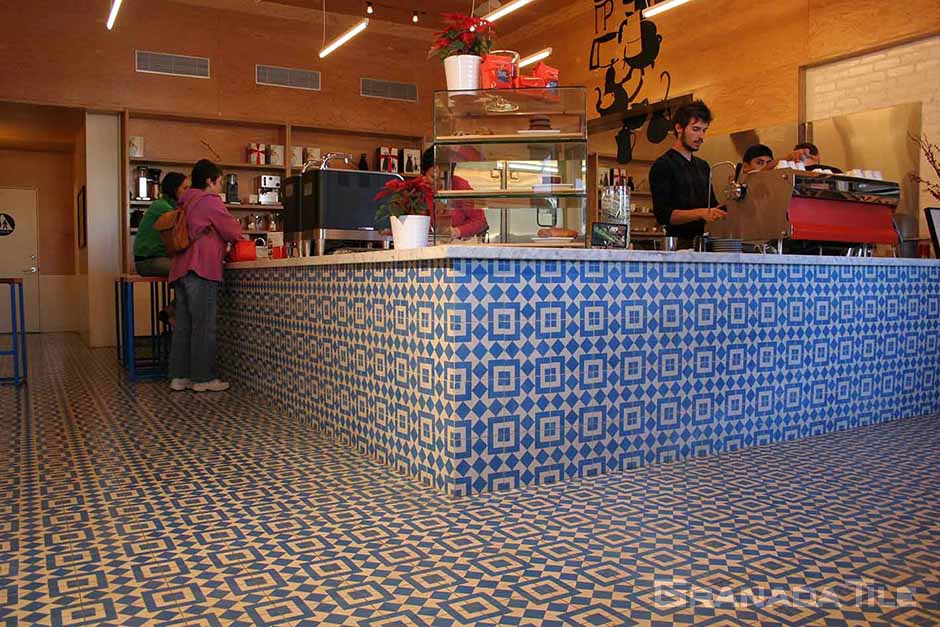
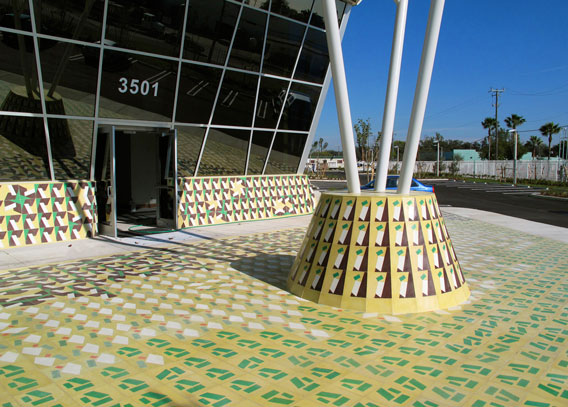
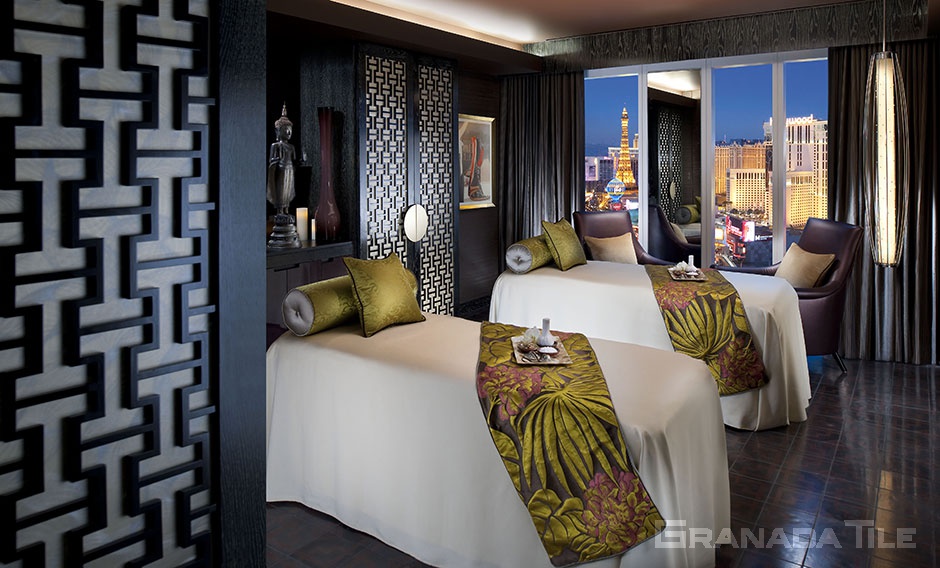
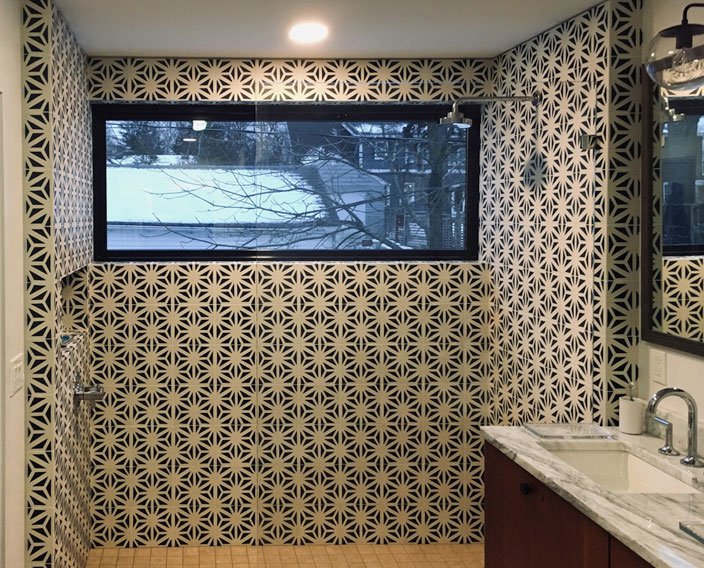
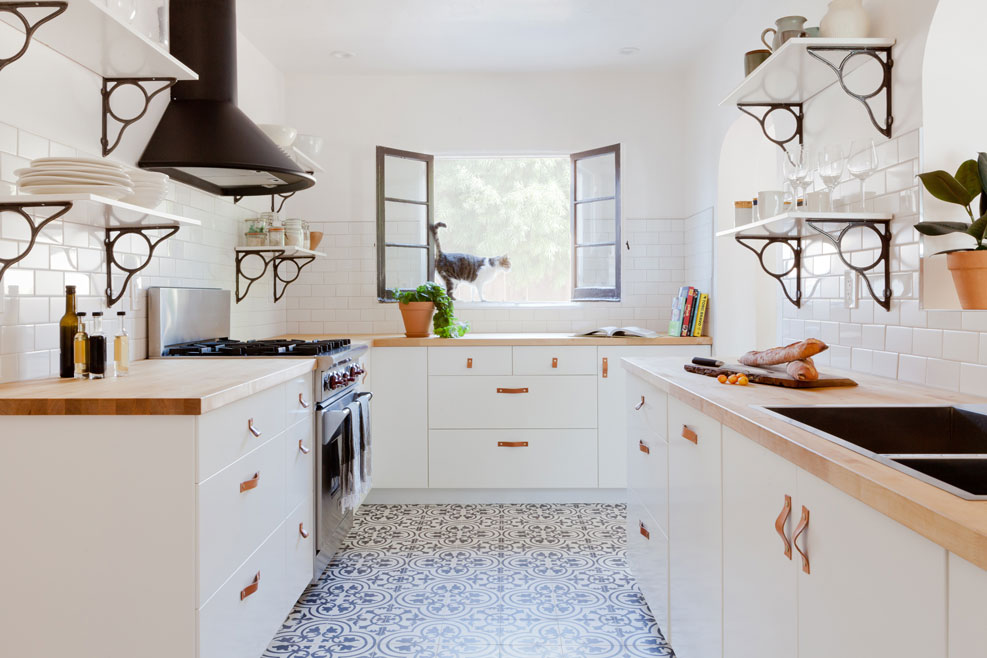
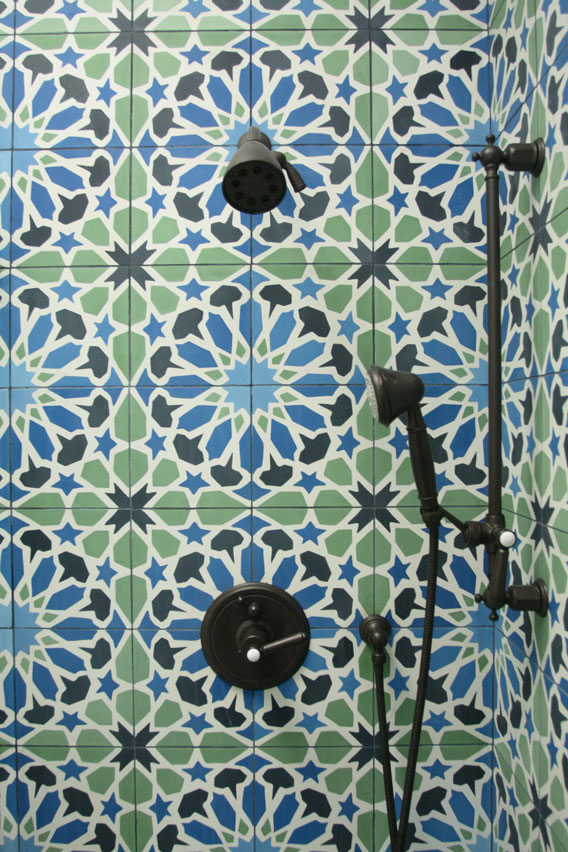

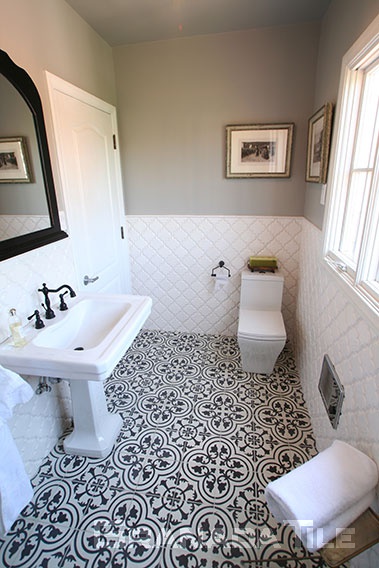
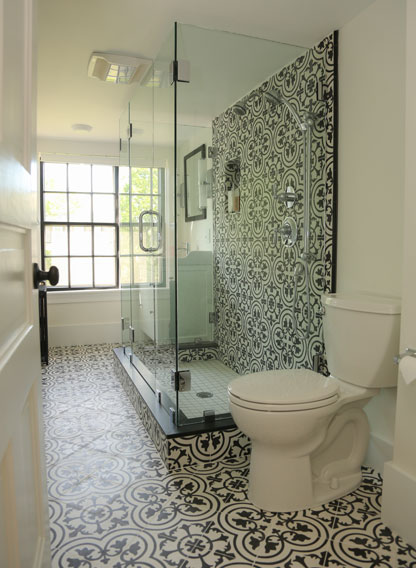
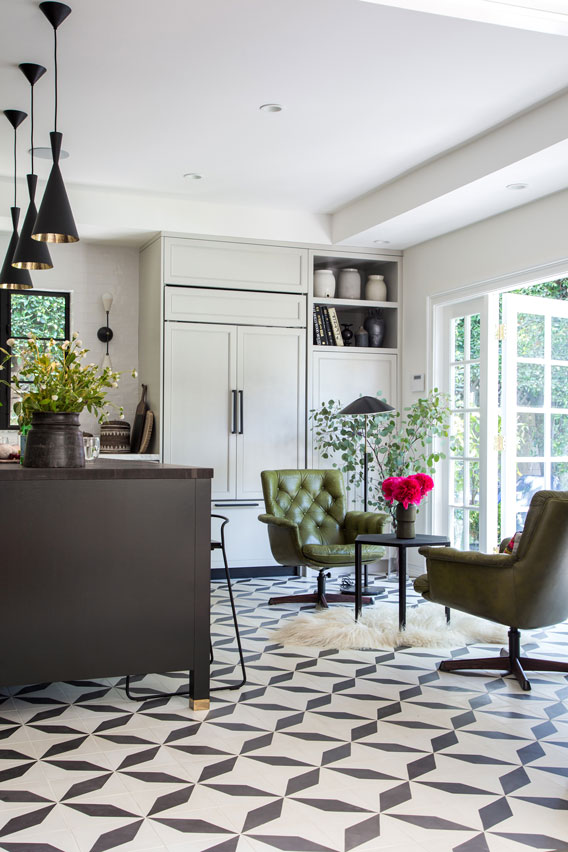
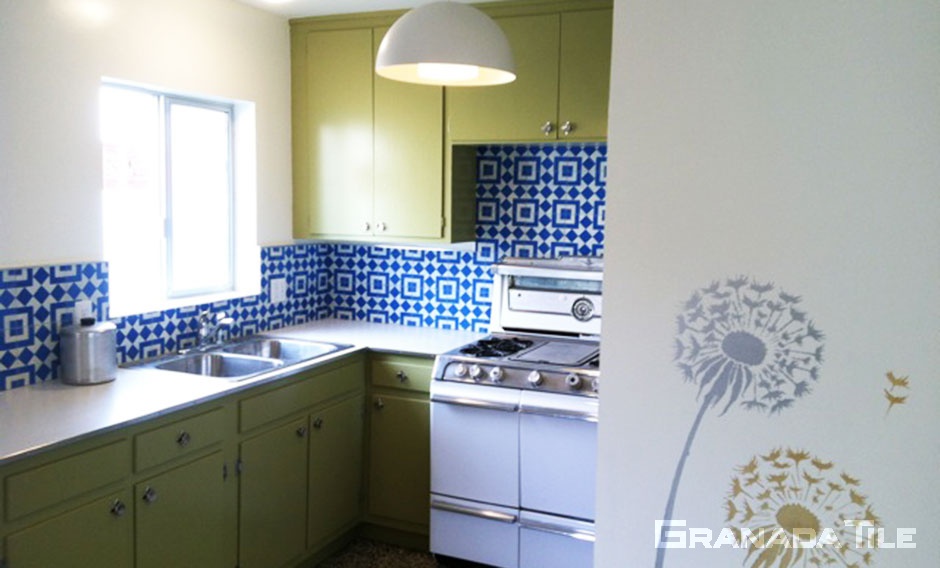
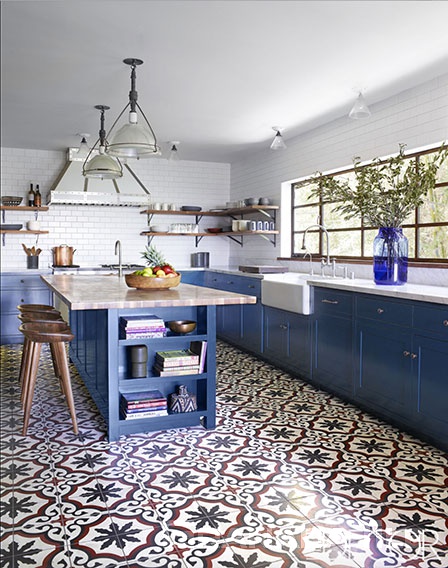
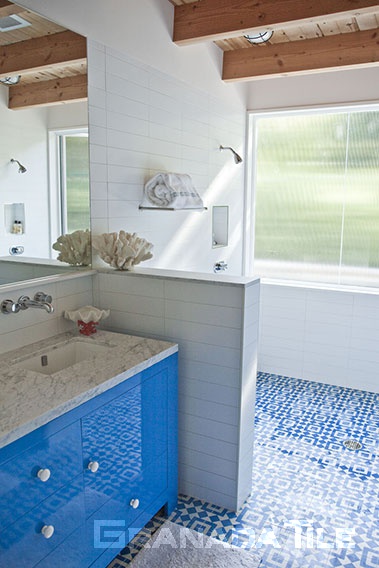
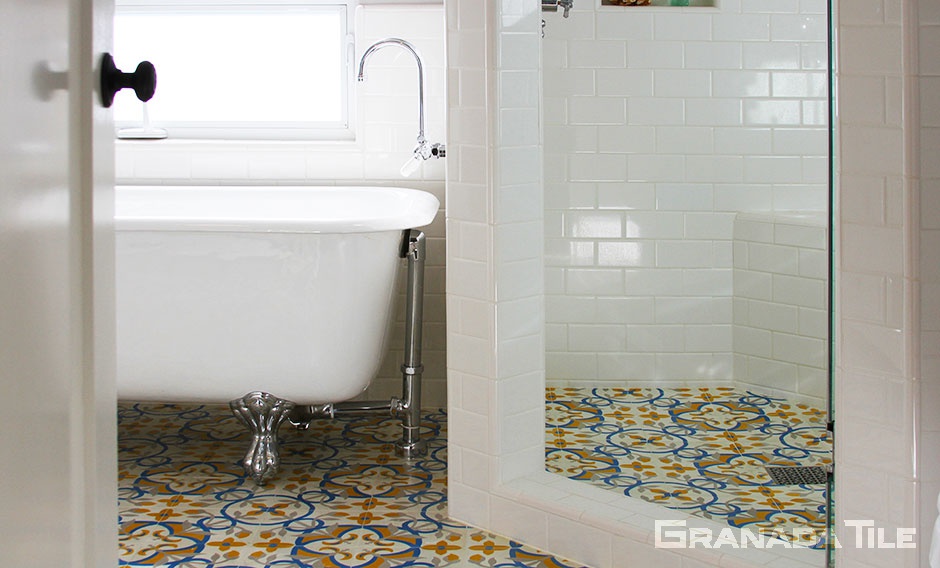

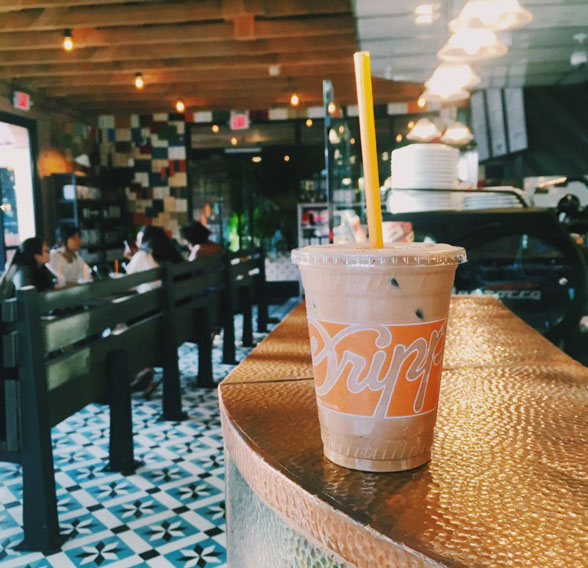
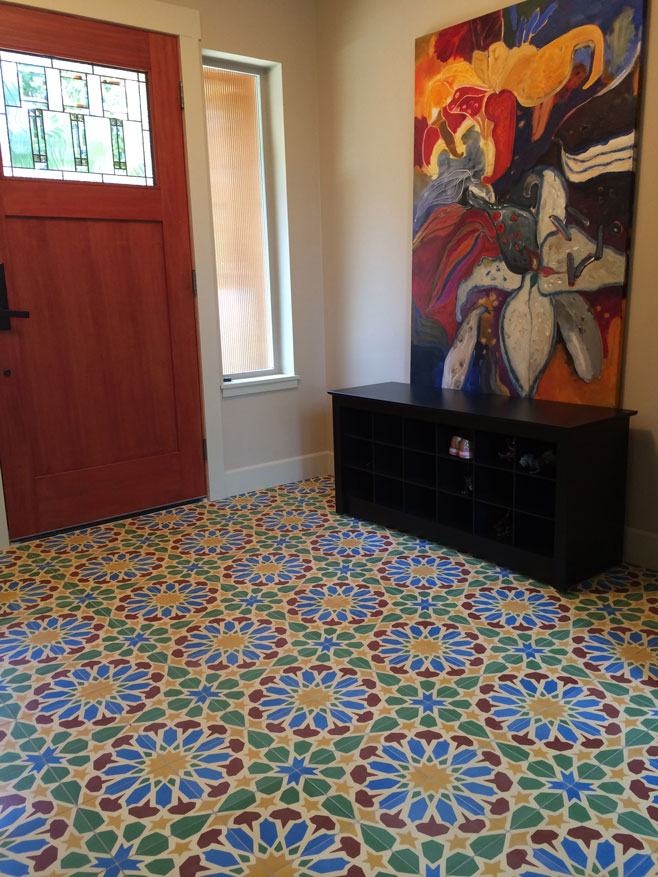
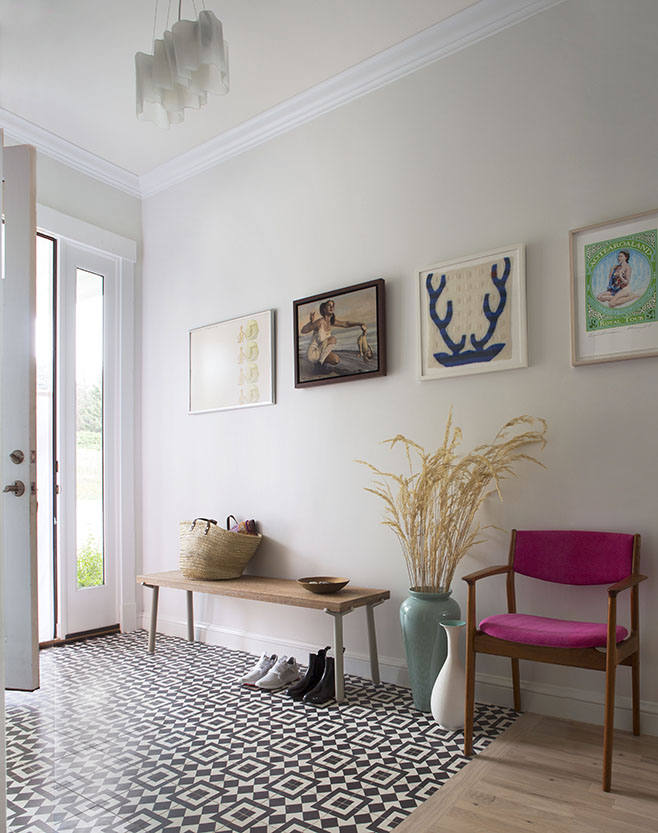
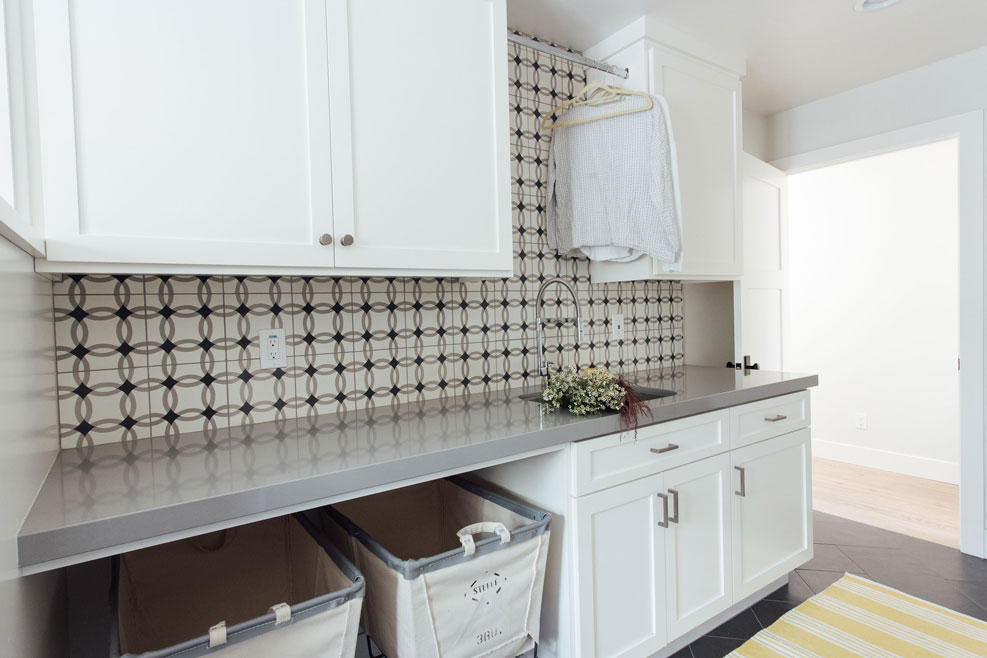
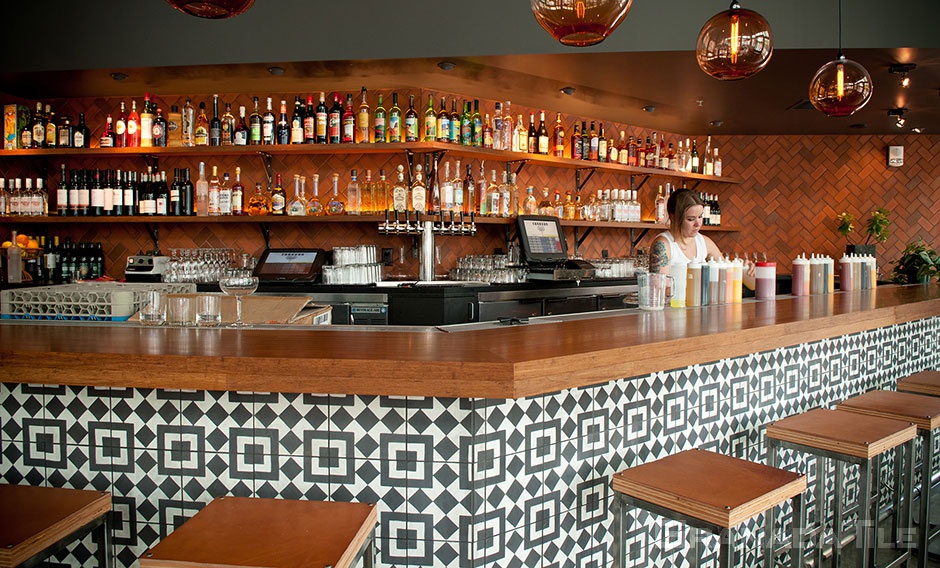
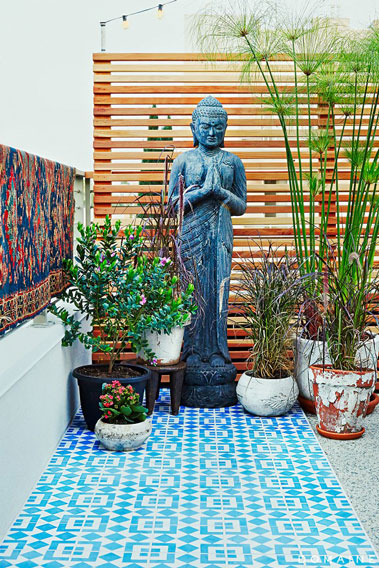
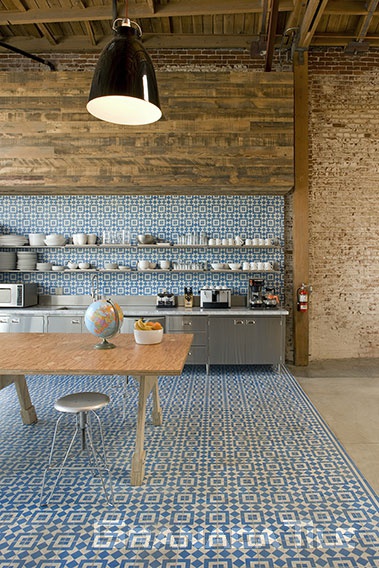
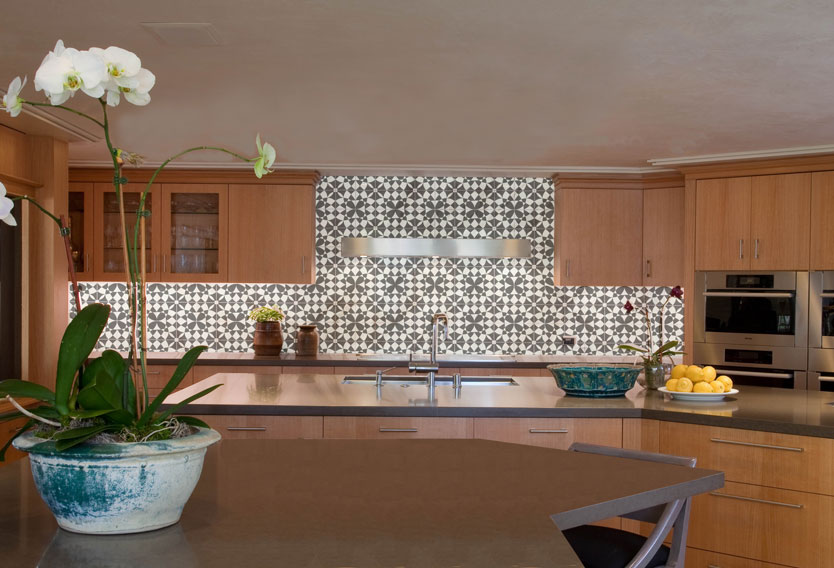
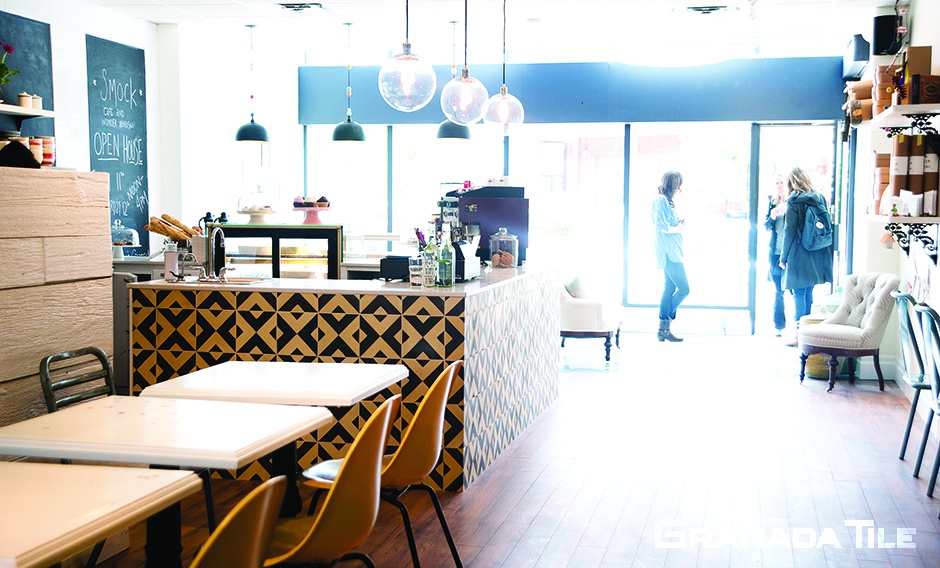
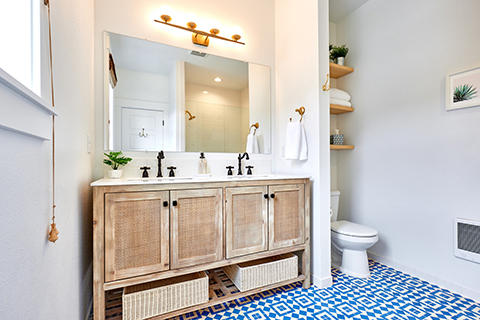
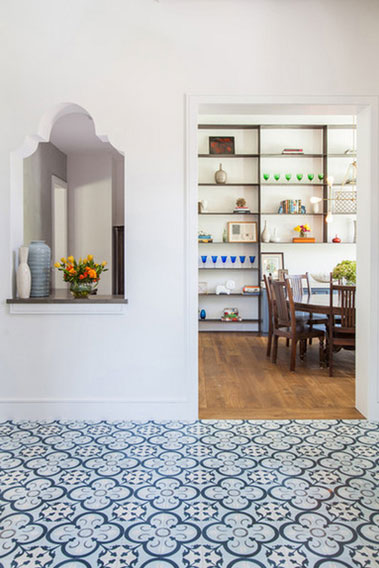
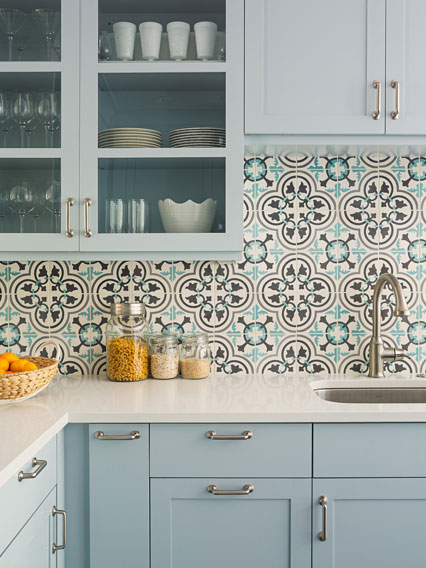
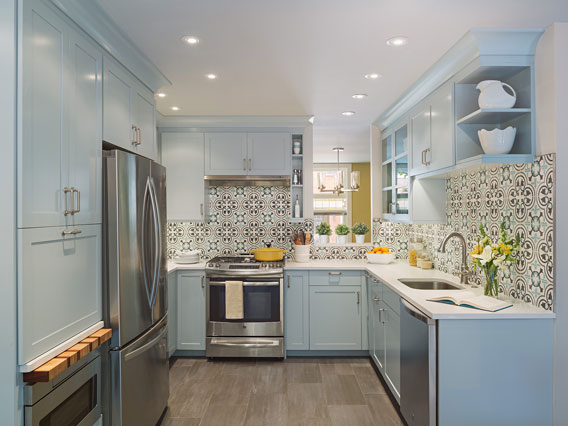
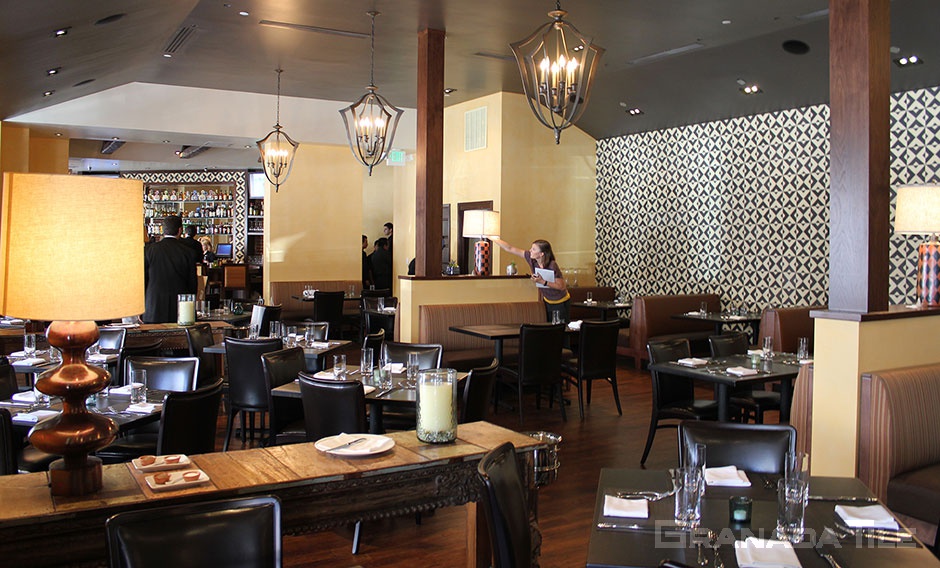
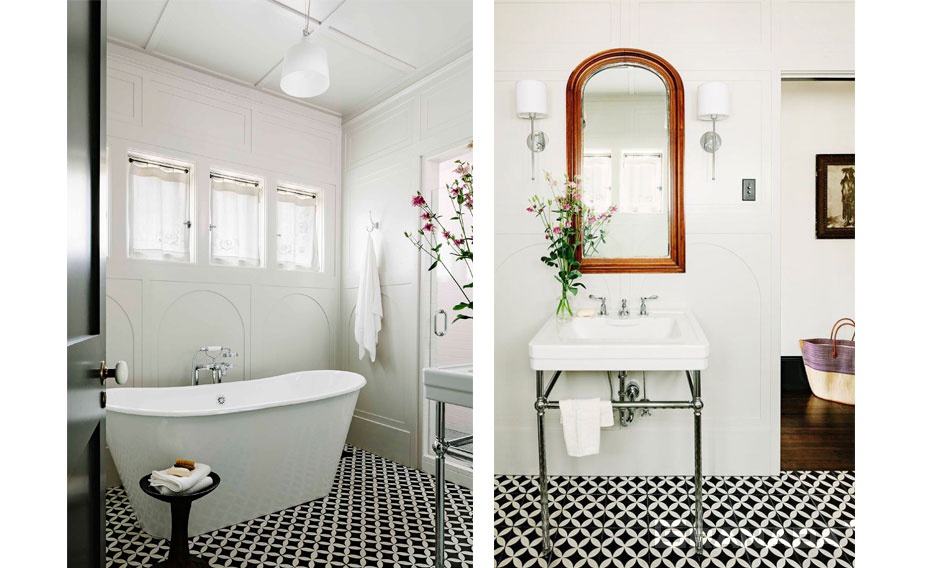
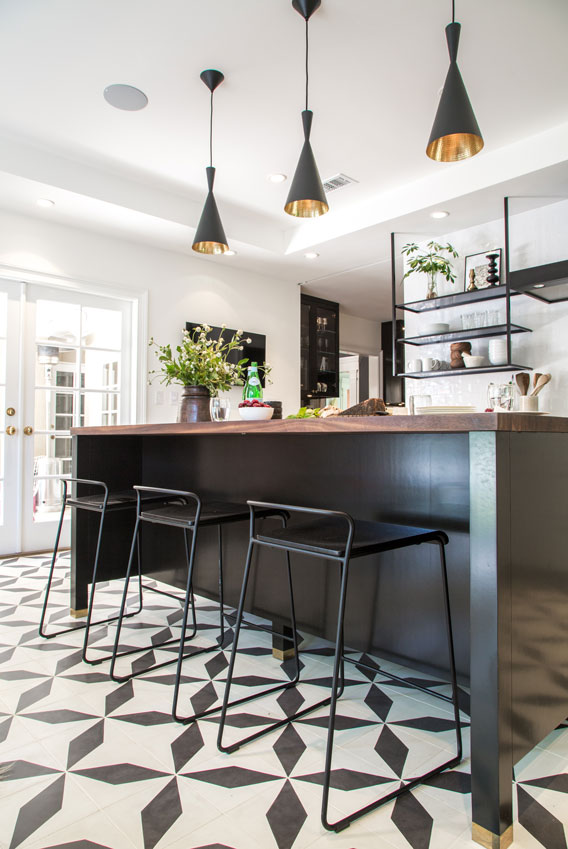
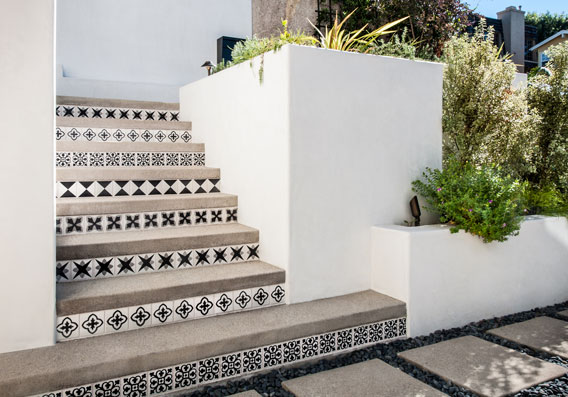
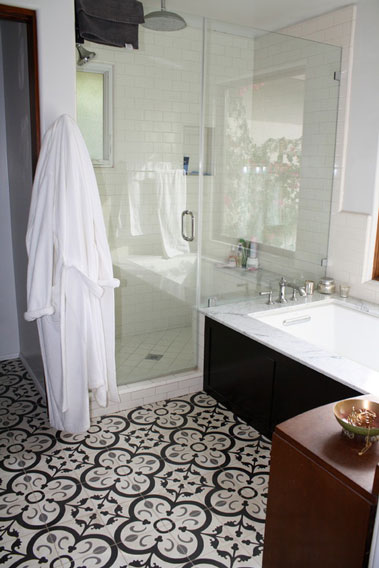
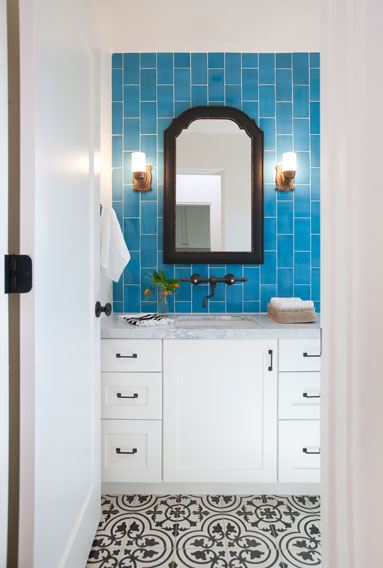
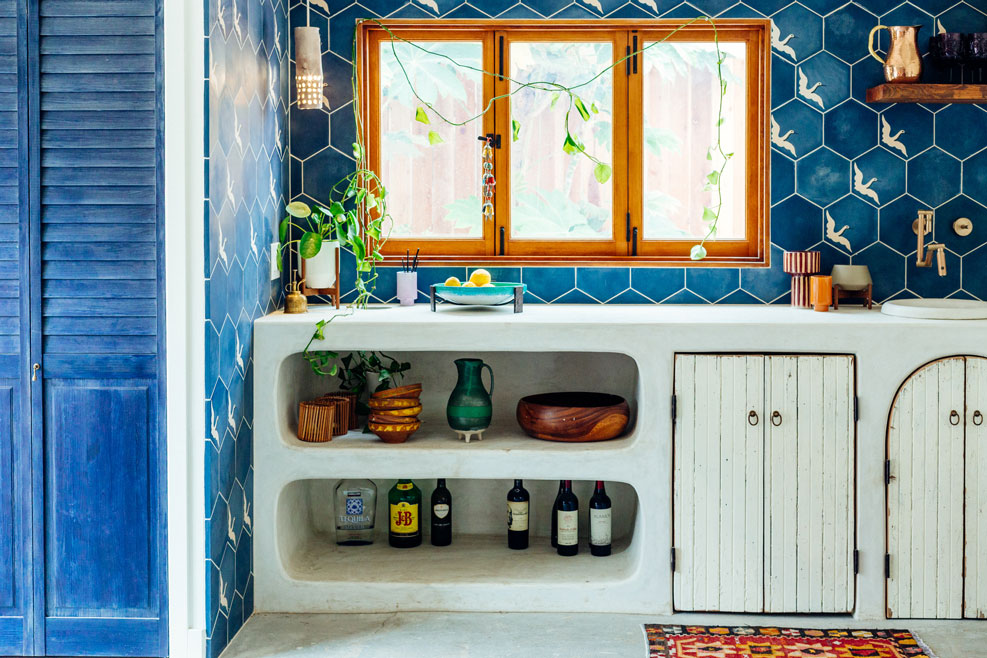
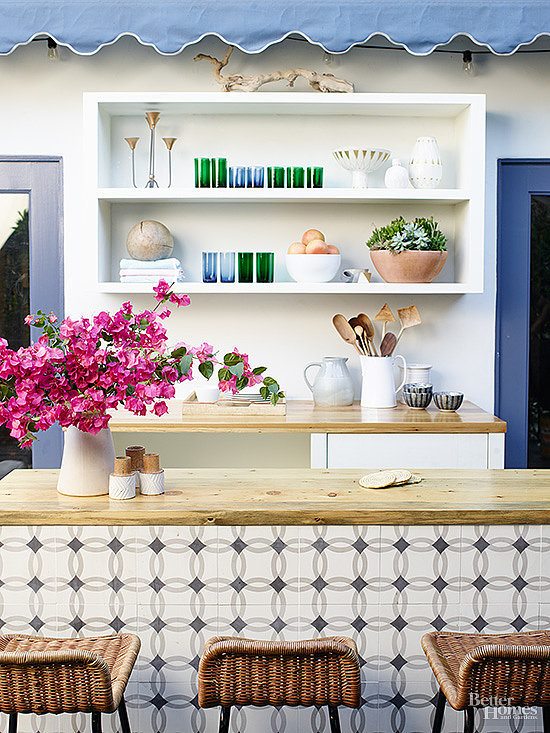
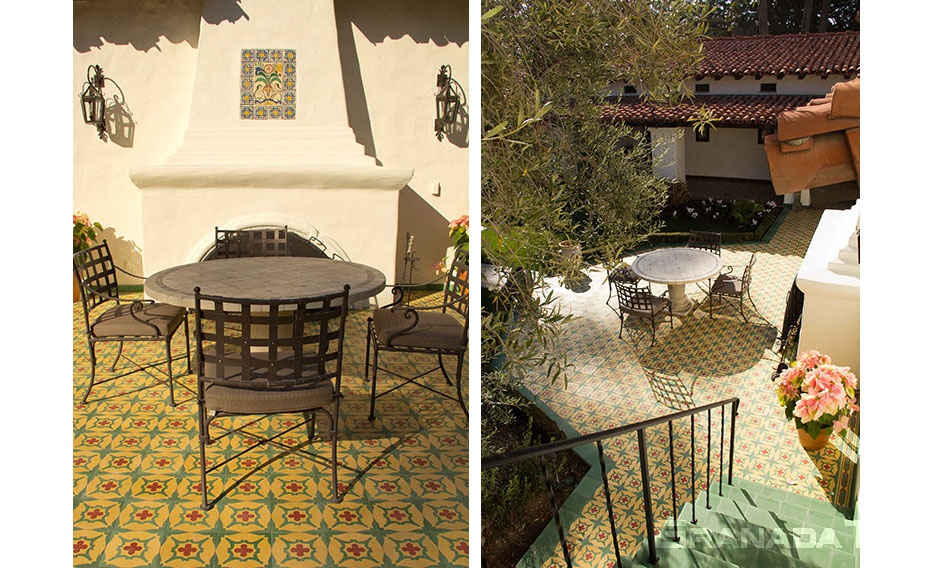
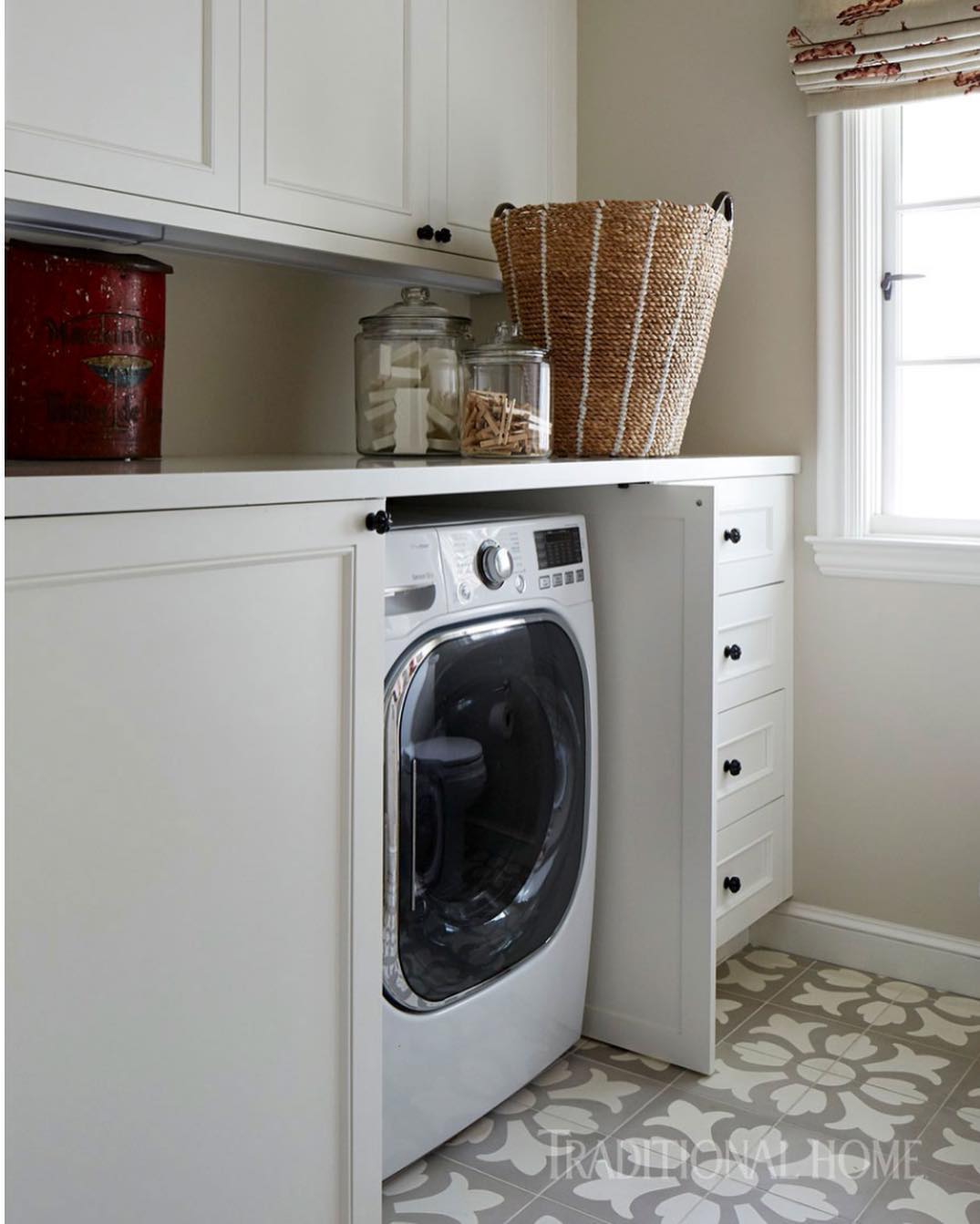
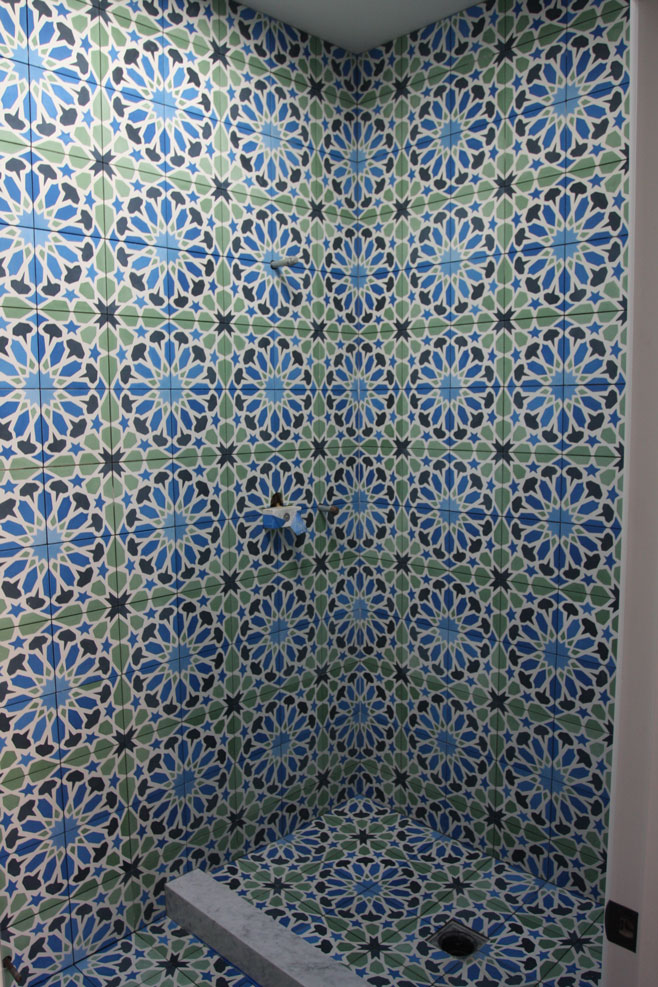
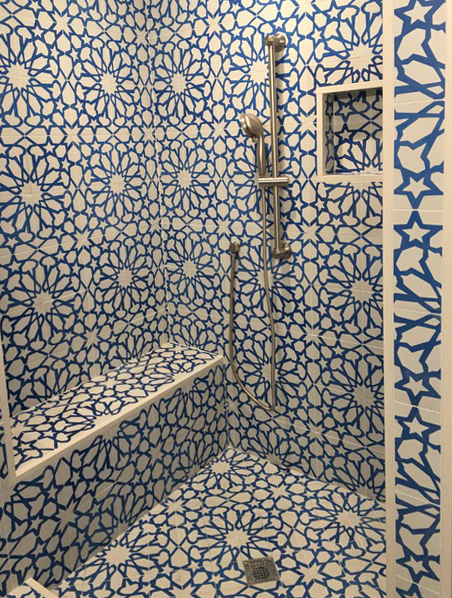
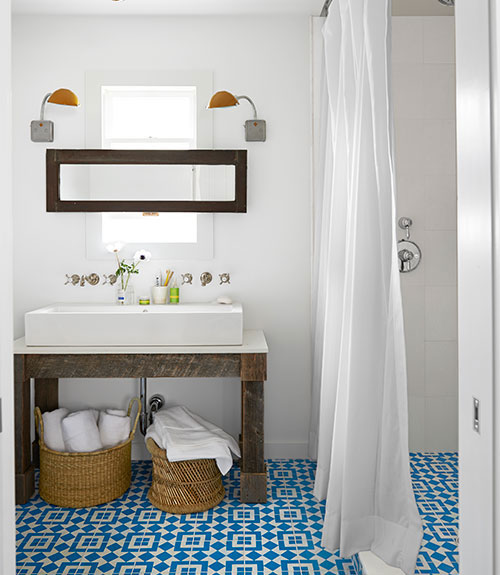
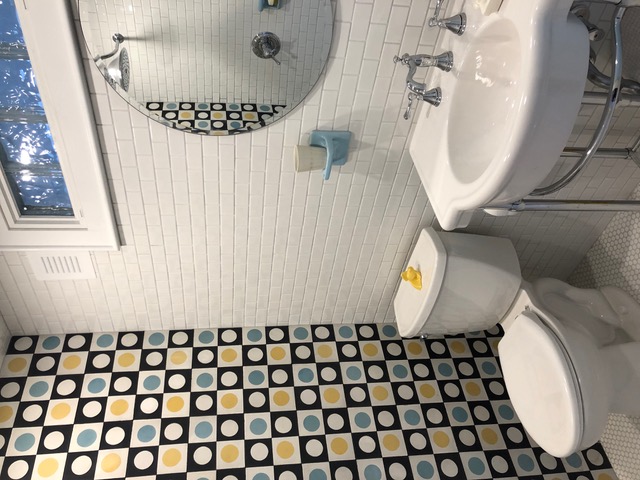
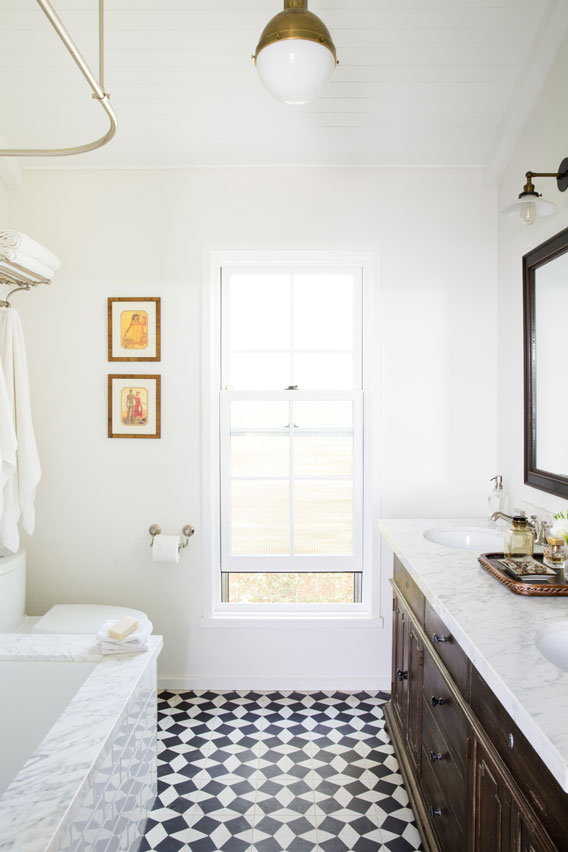
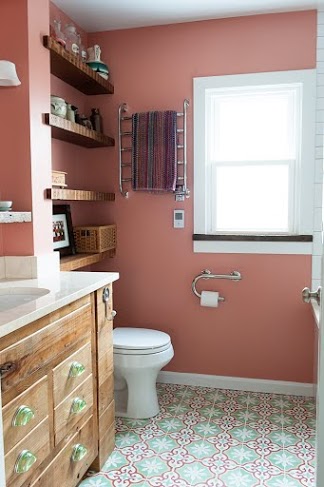
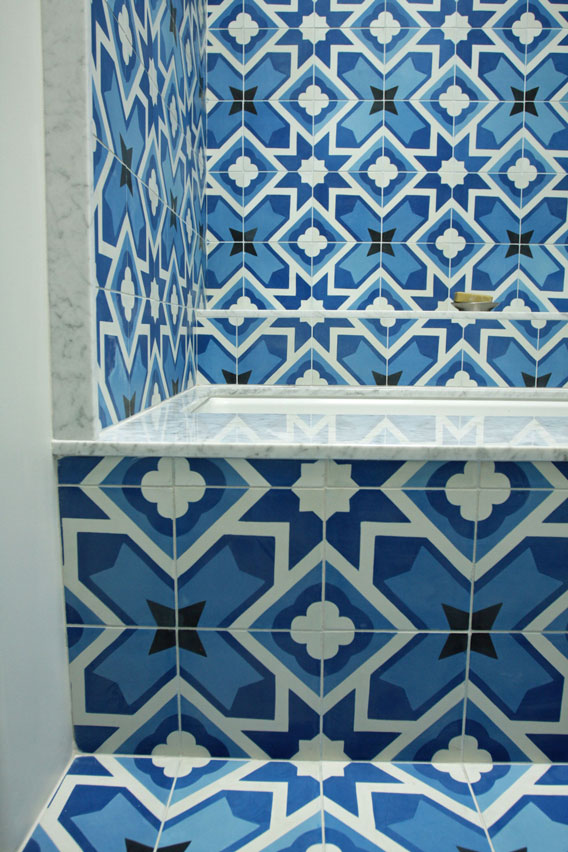
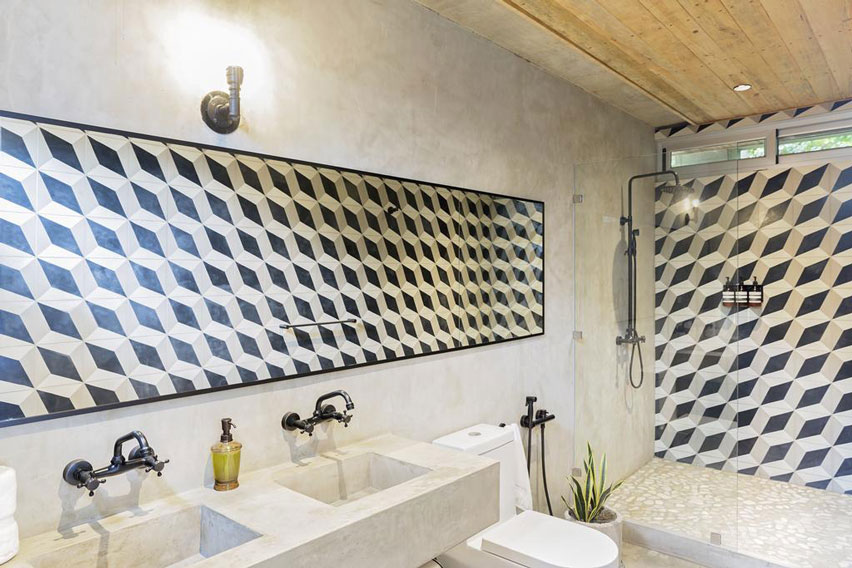
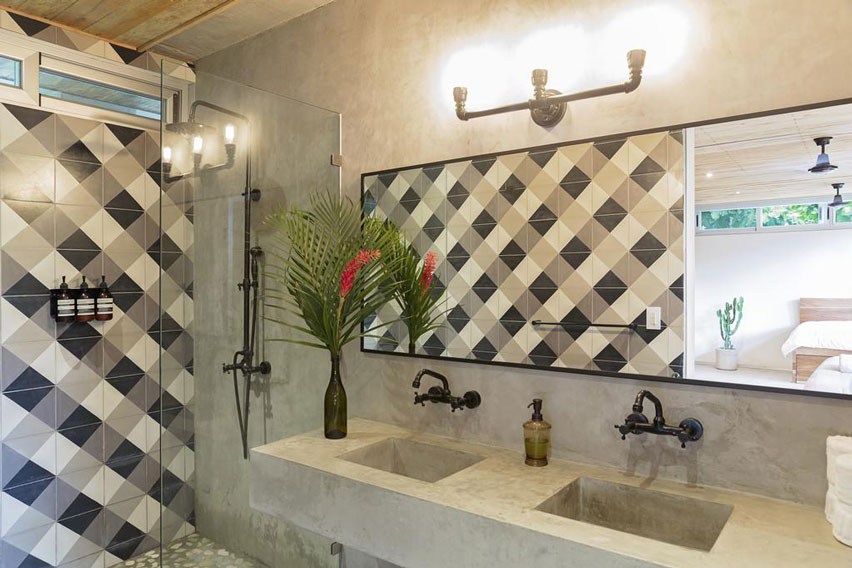
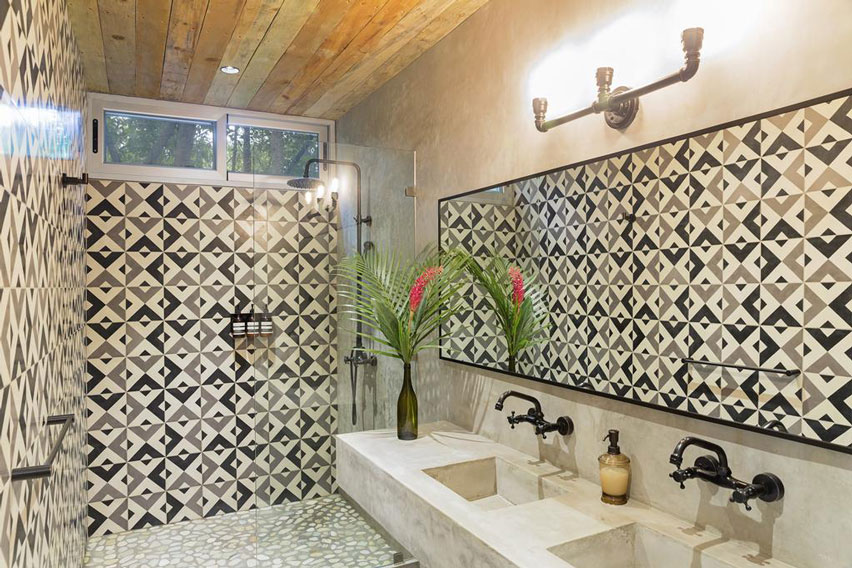
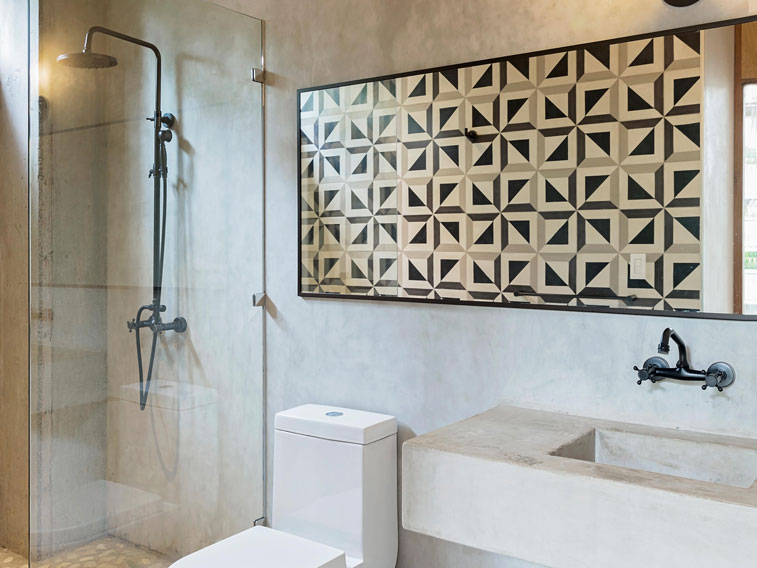

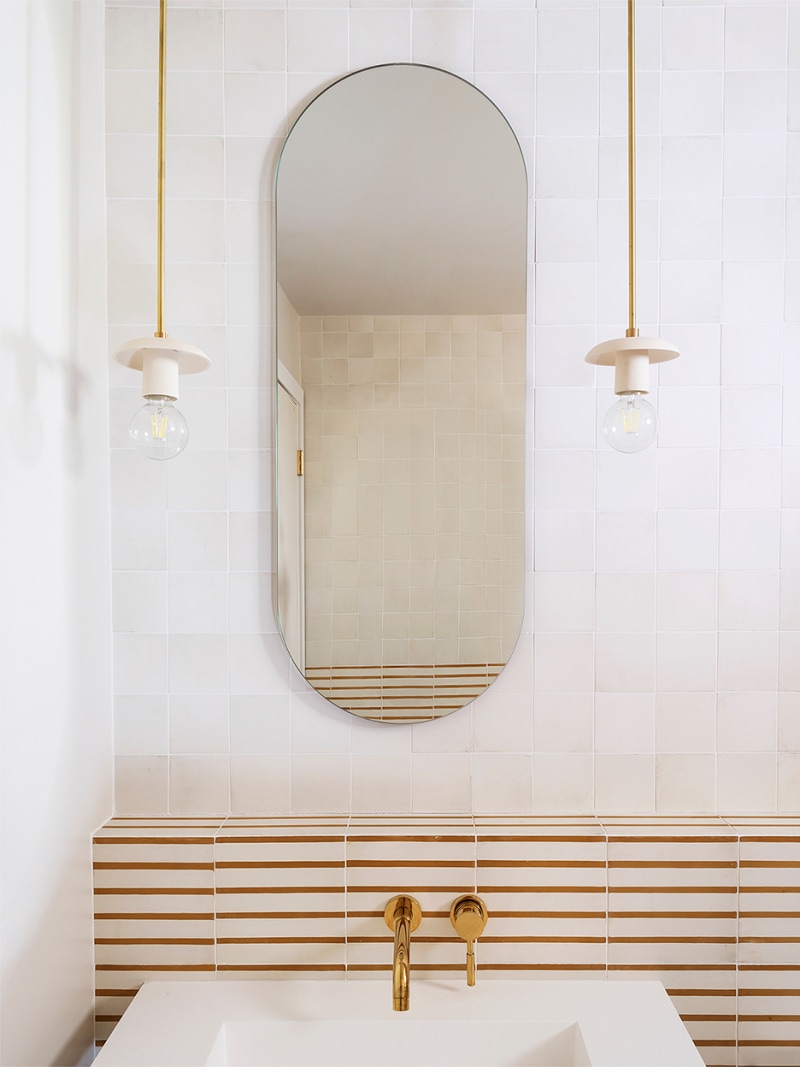
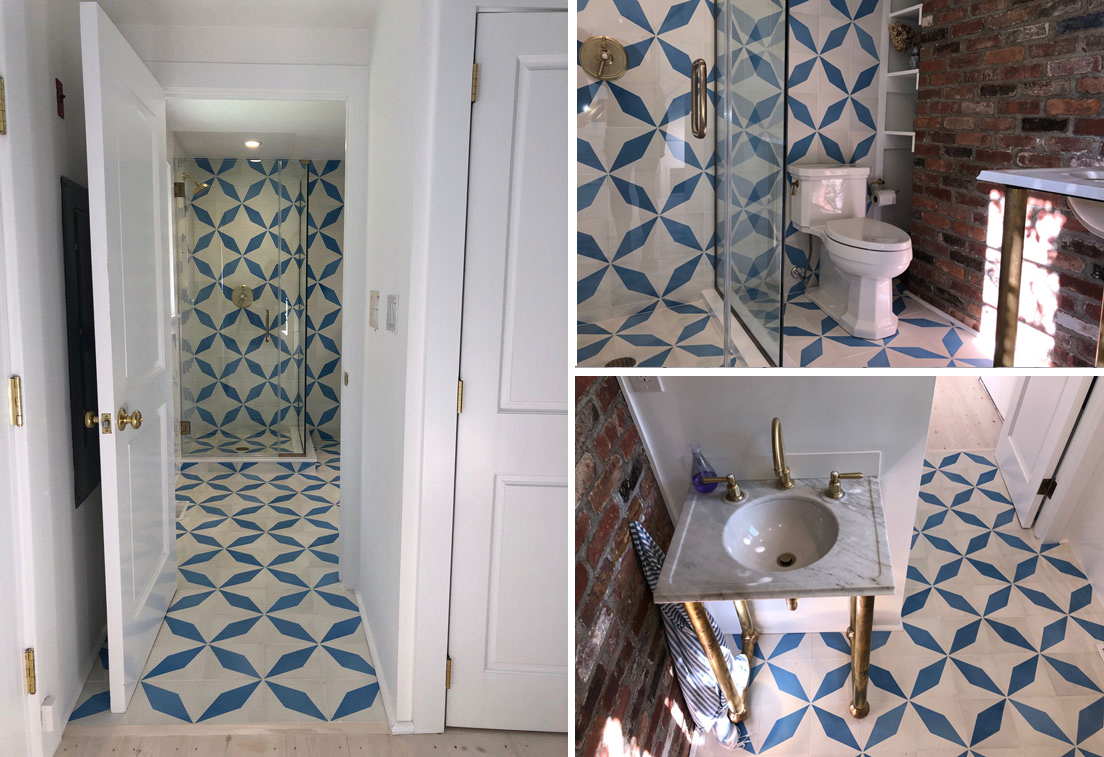
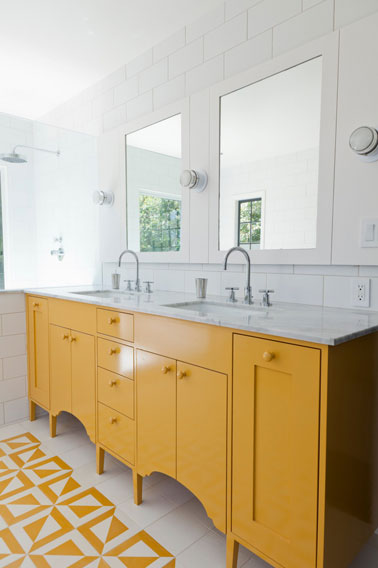
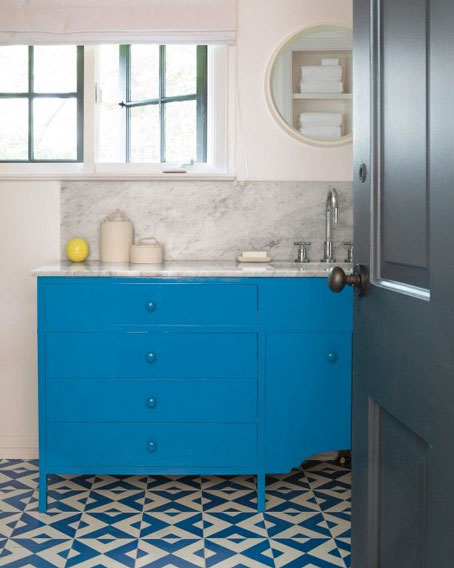
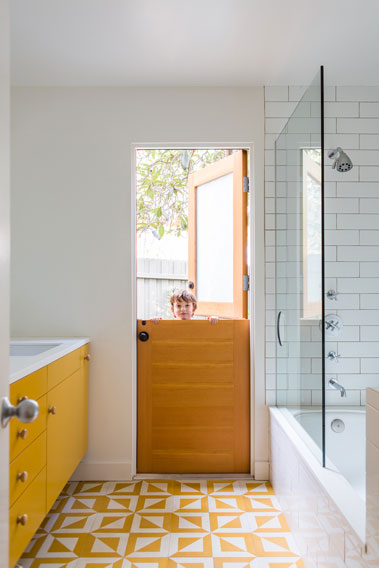
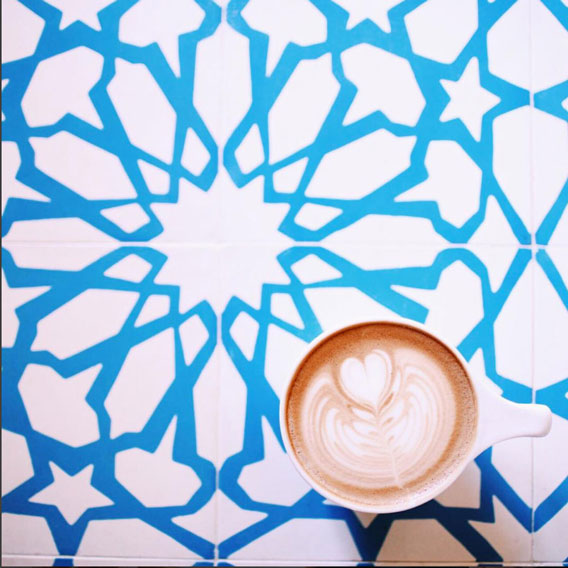
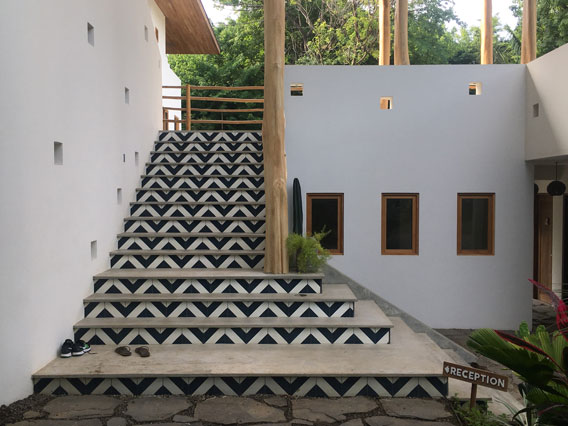
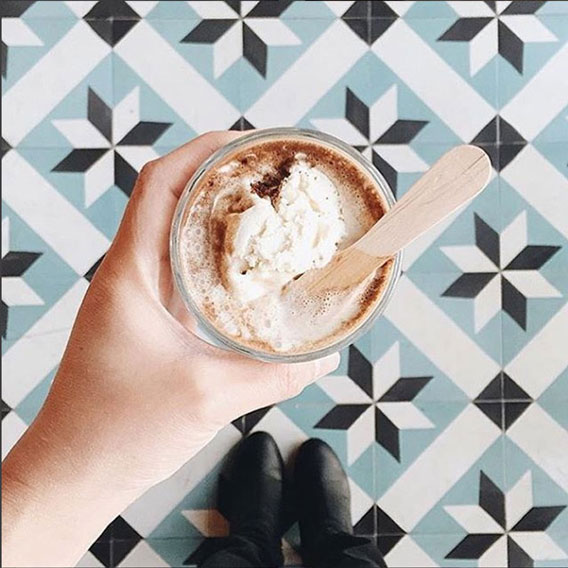
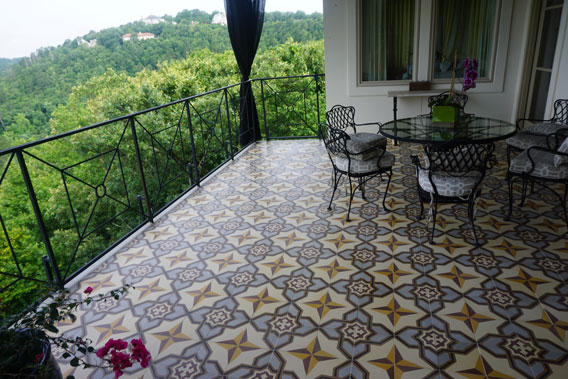
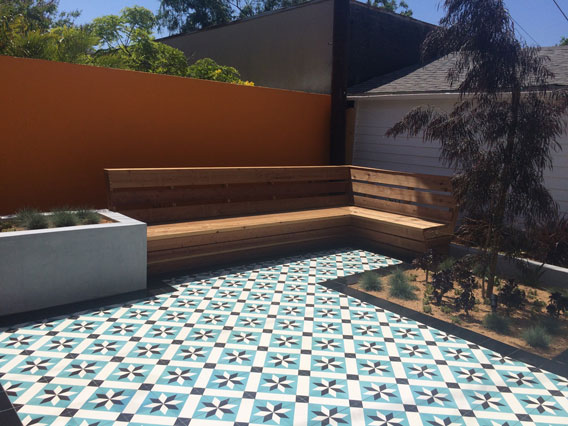
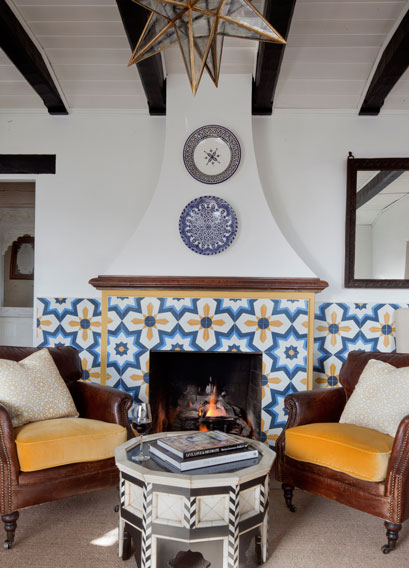
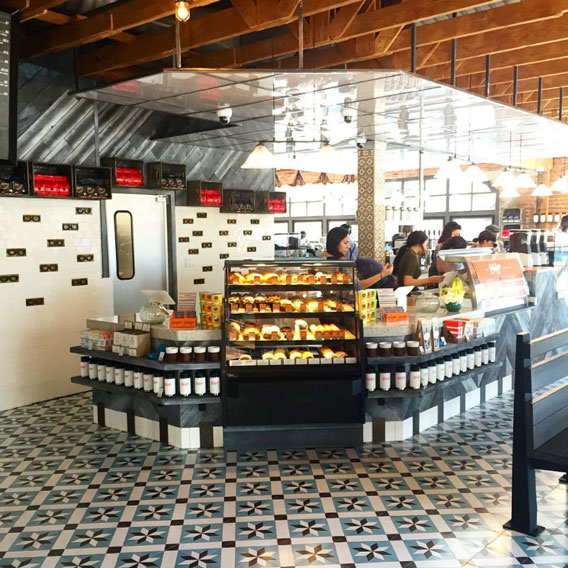
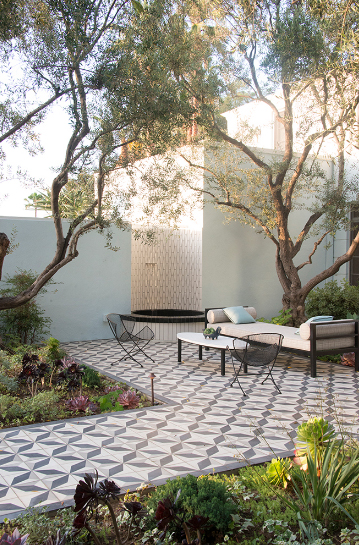
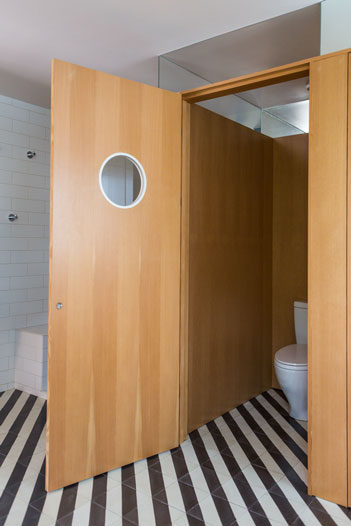
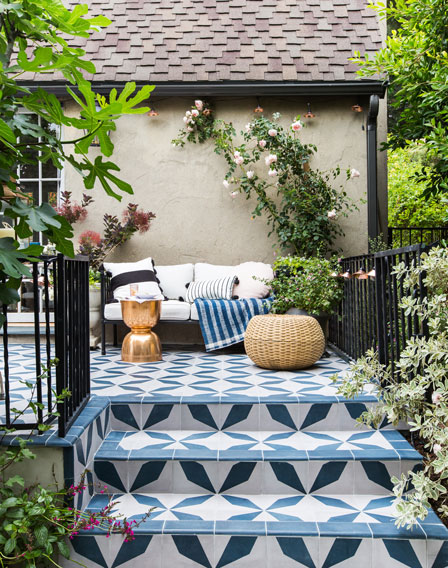
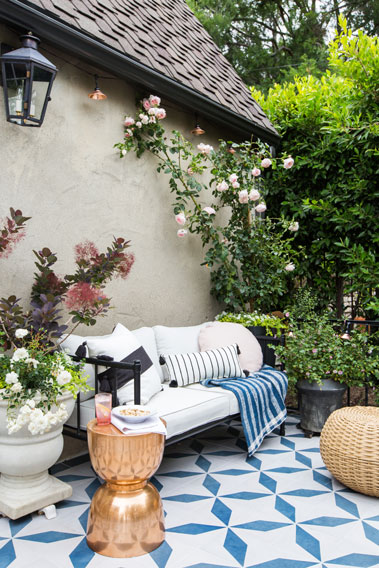
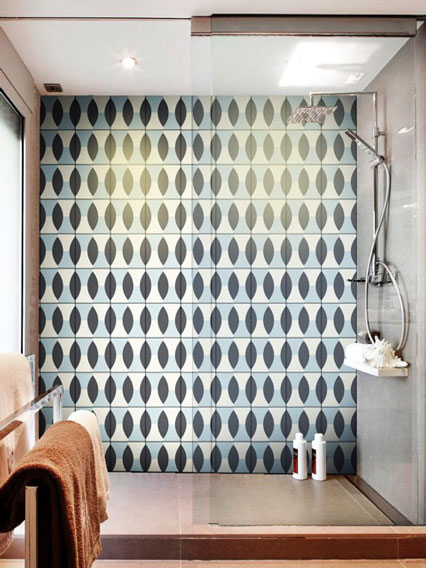
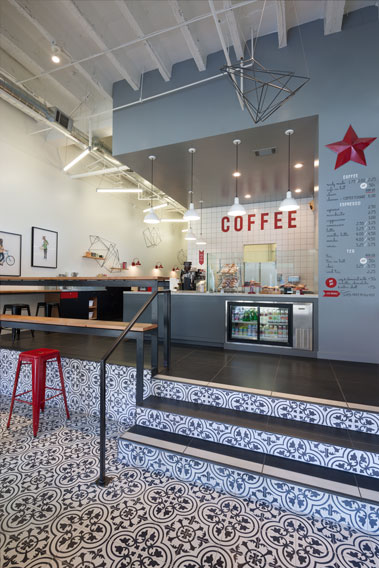
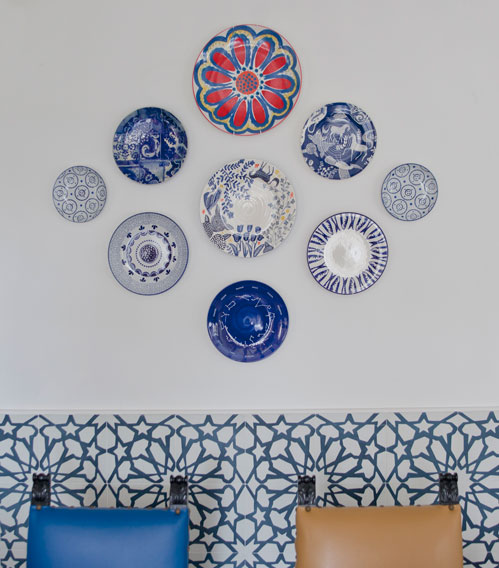
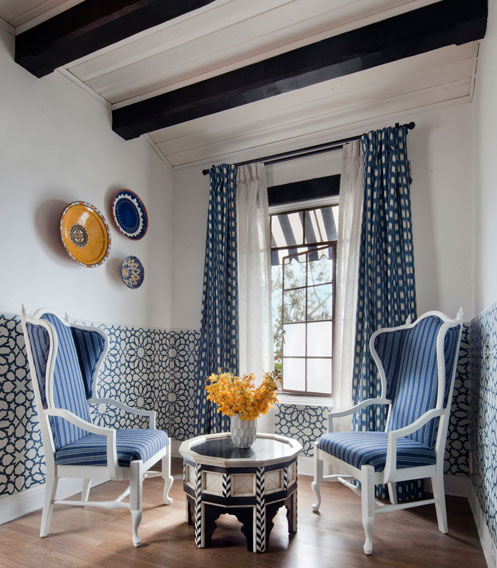
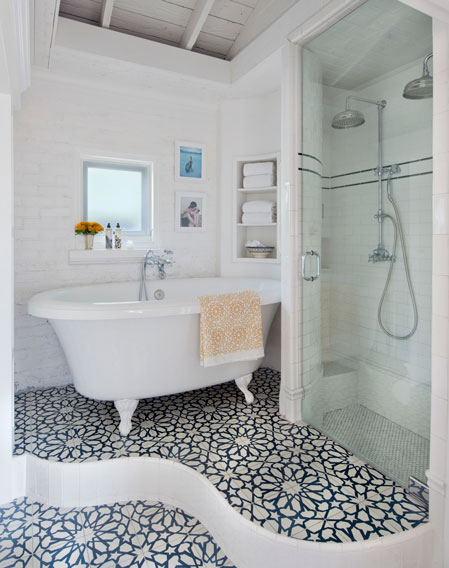
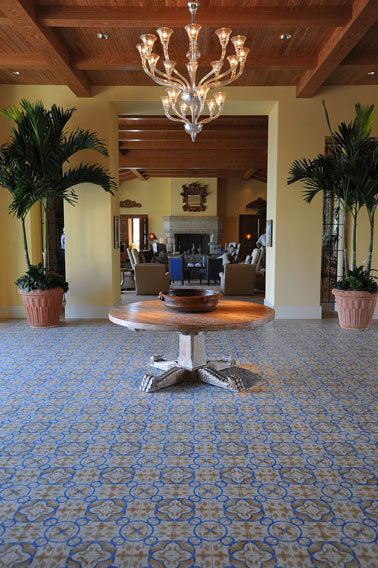
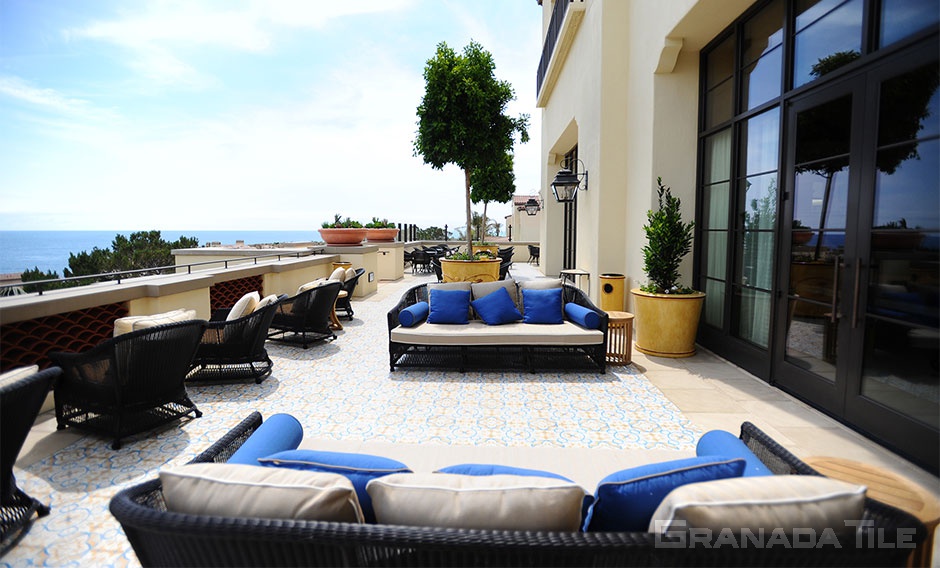
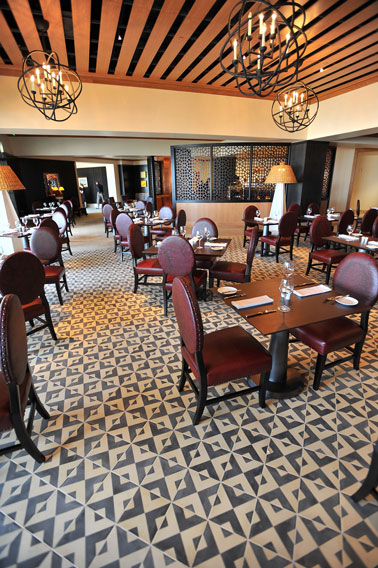
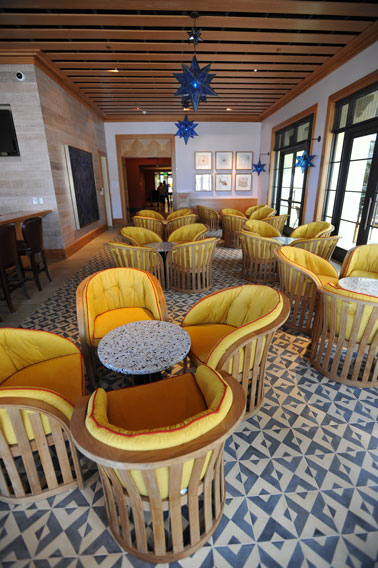
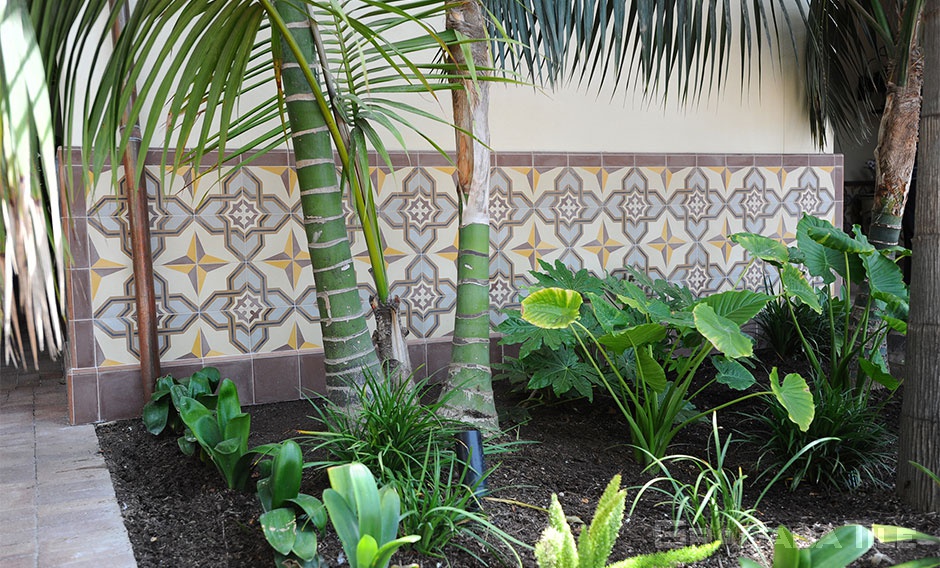
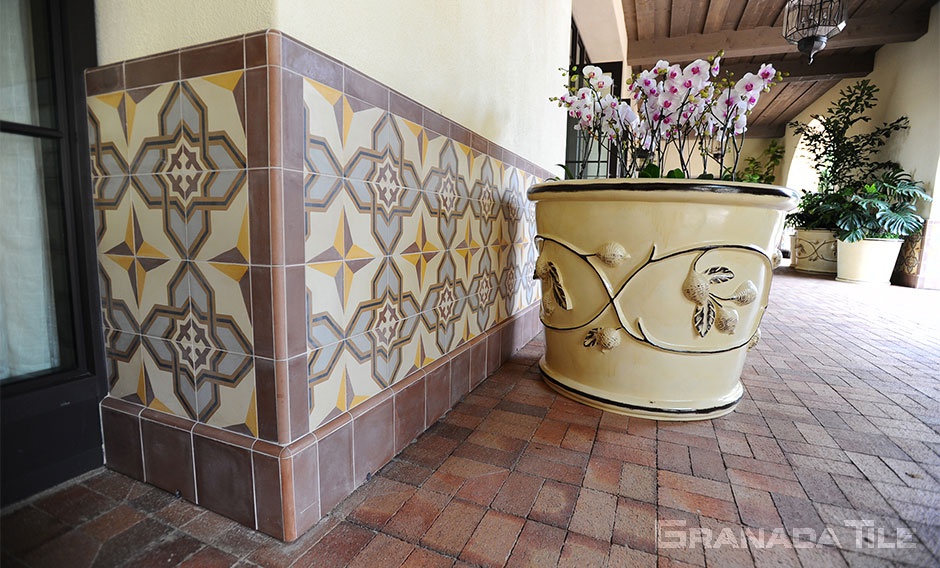
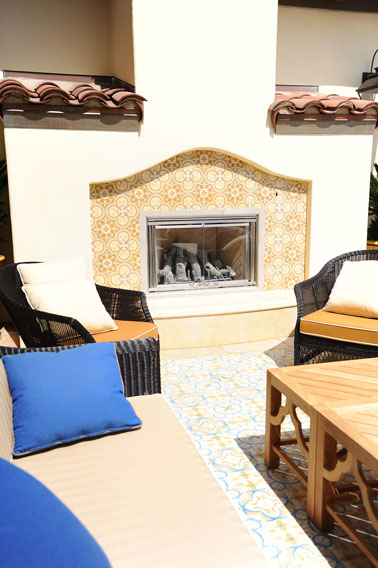
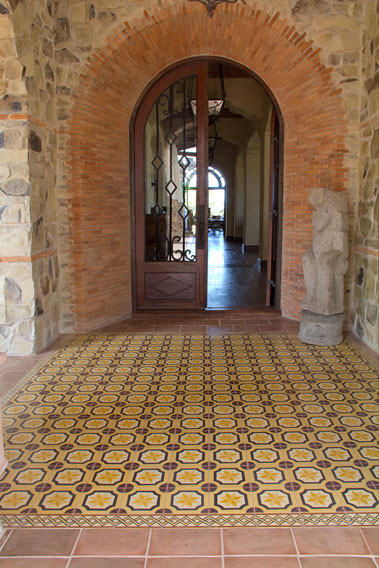
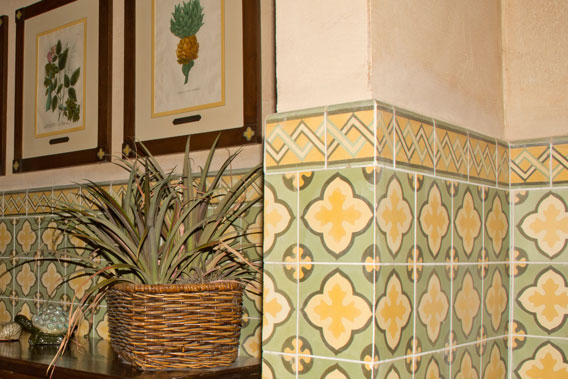
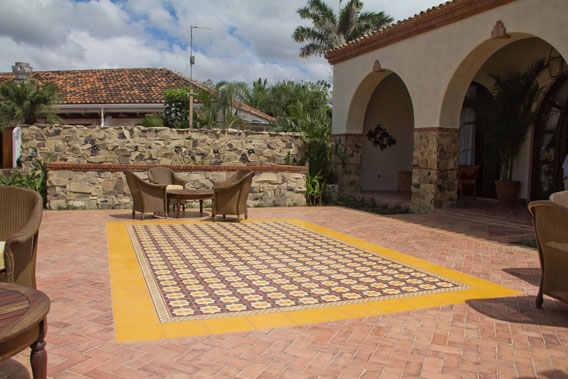

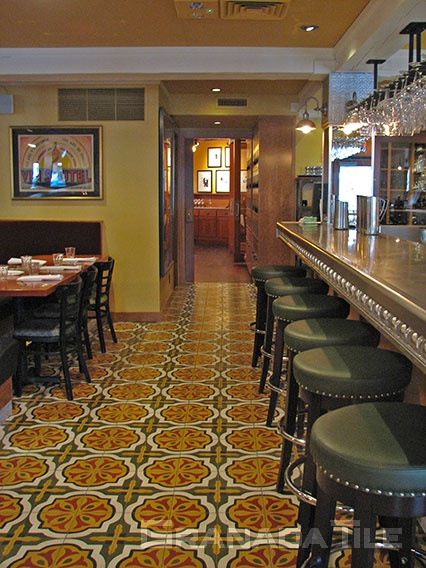
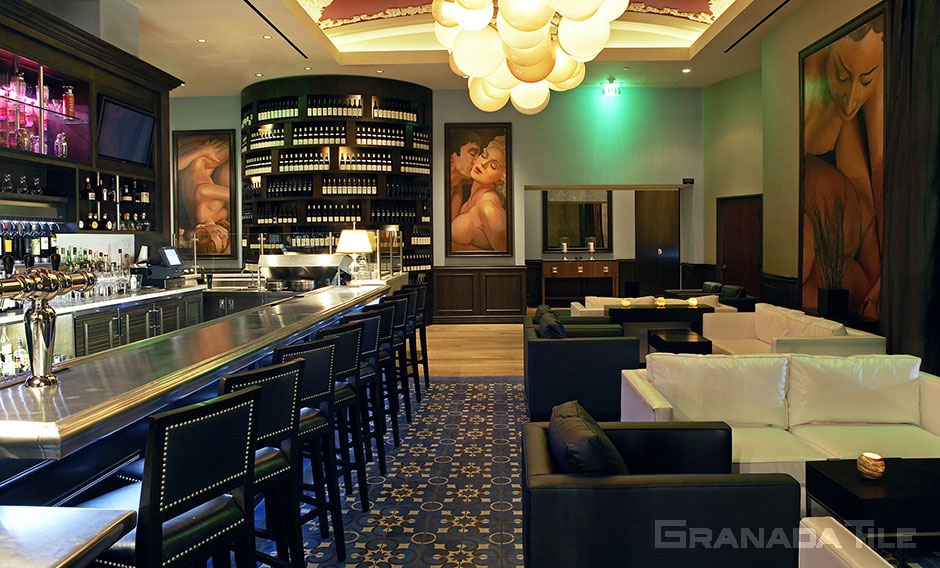
213.788.4238
Sales@GranadaTile.com